Student Portfolio
Introductory paragraph about this page.
Previous
Next
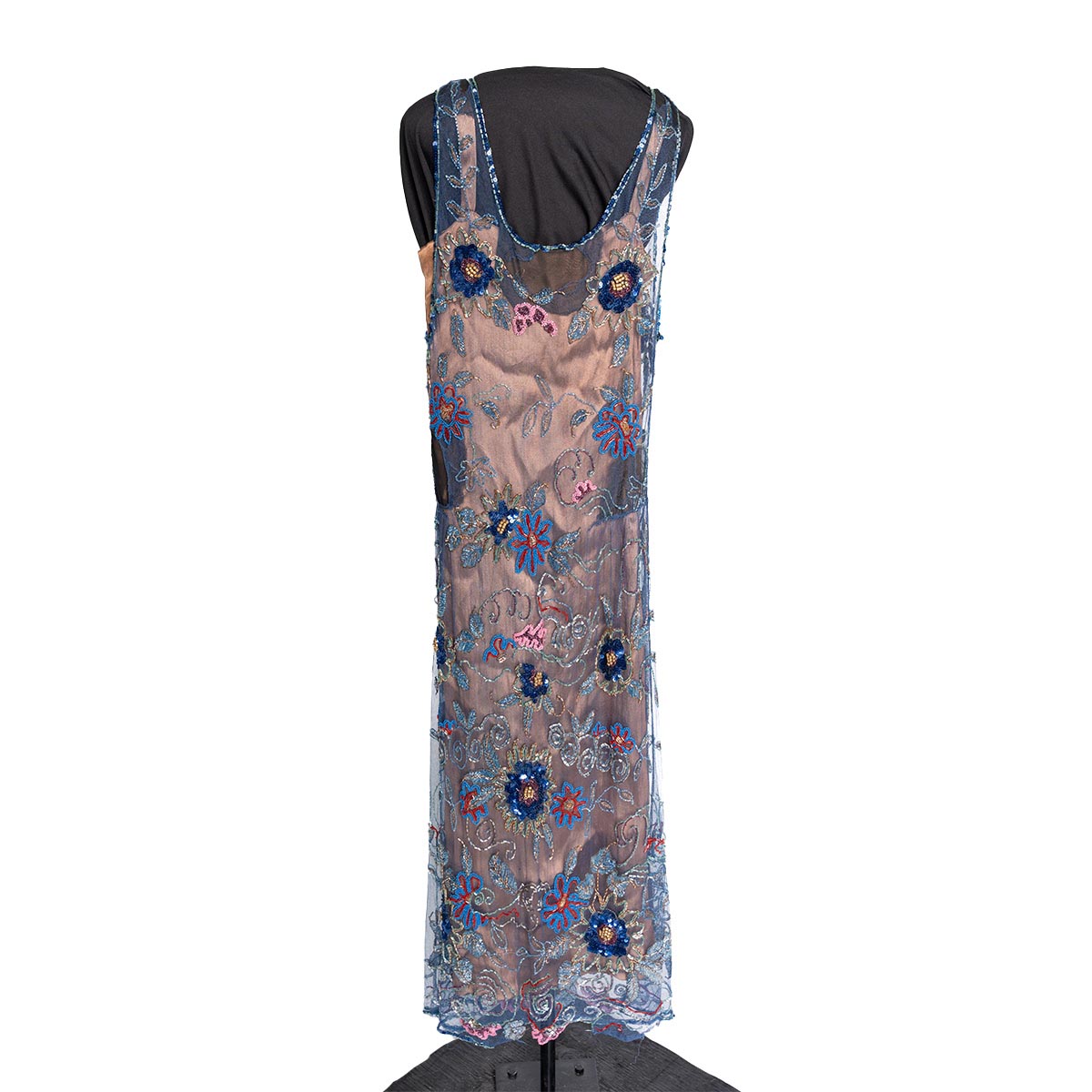
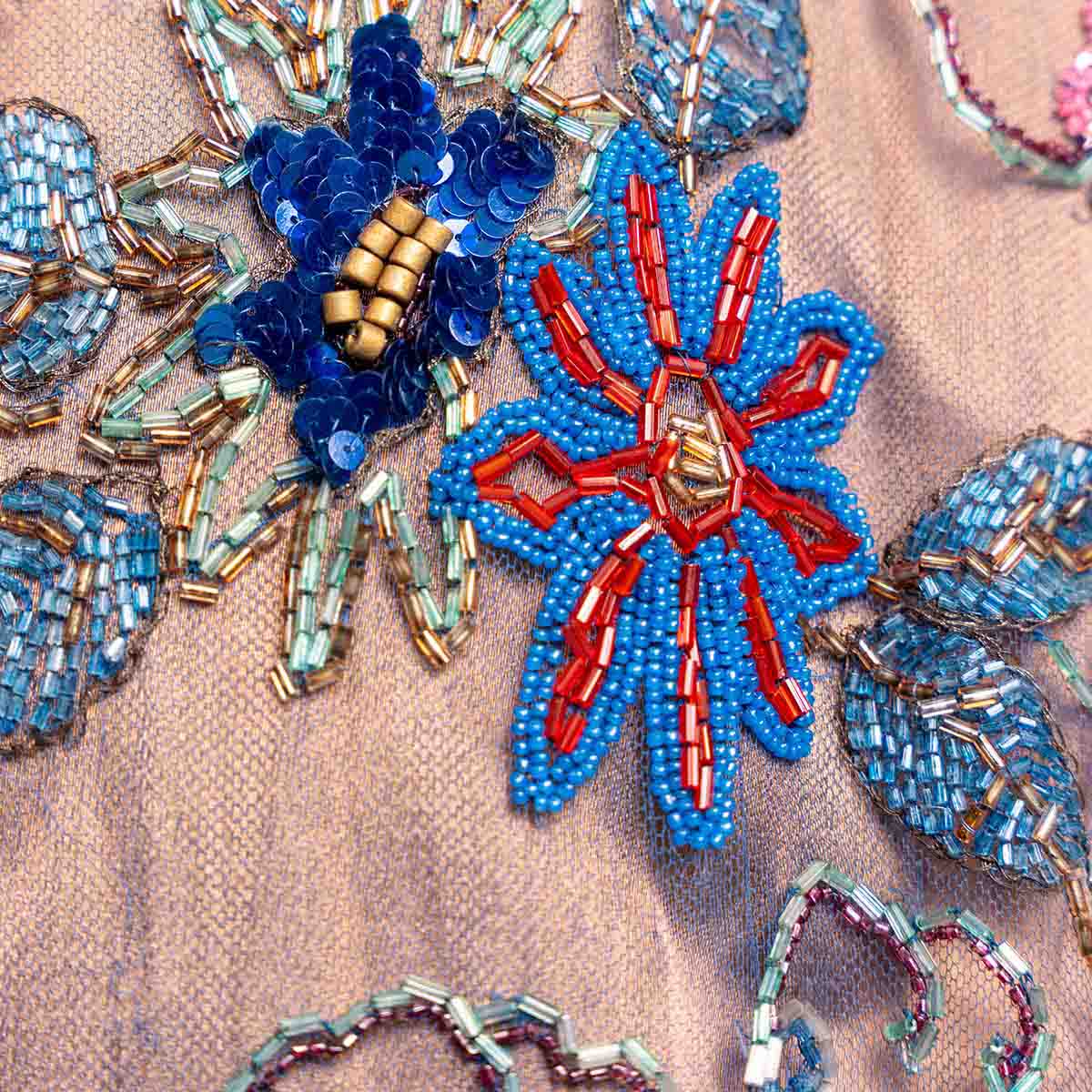



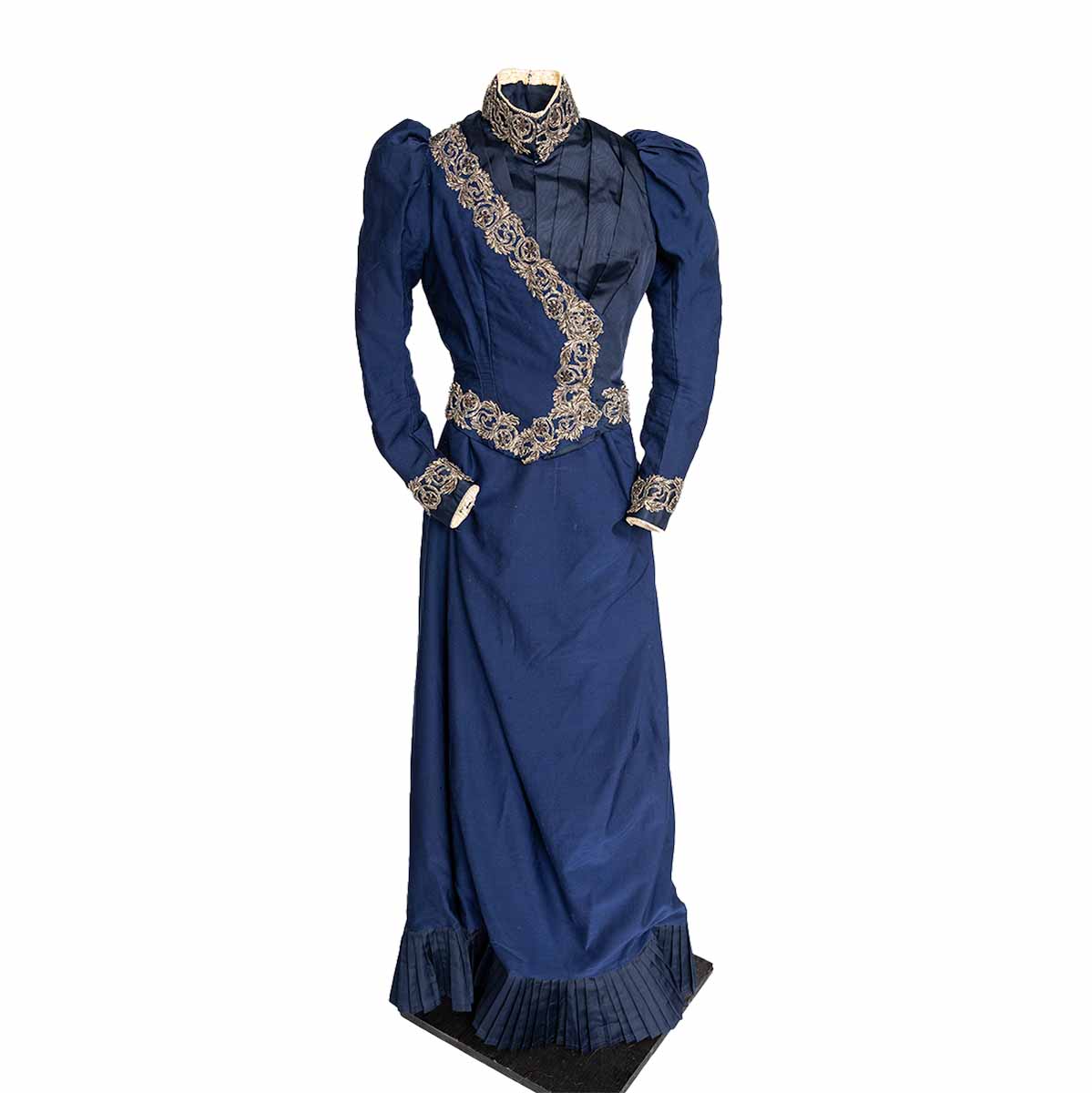
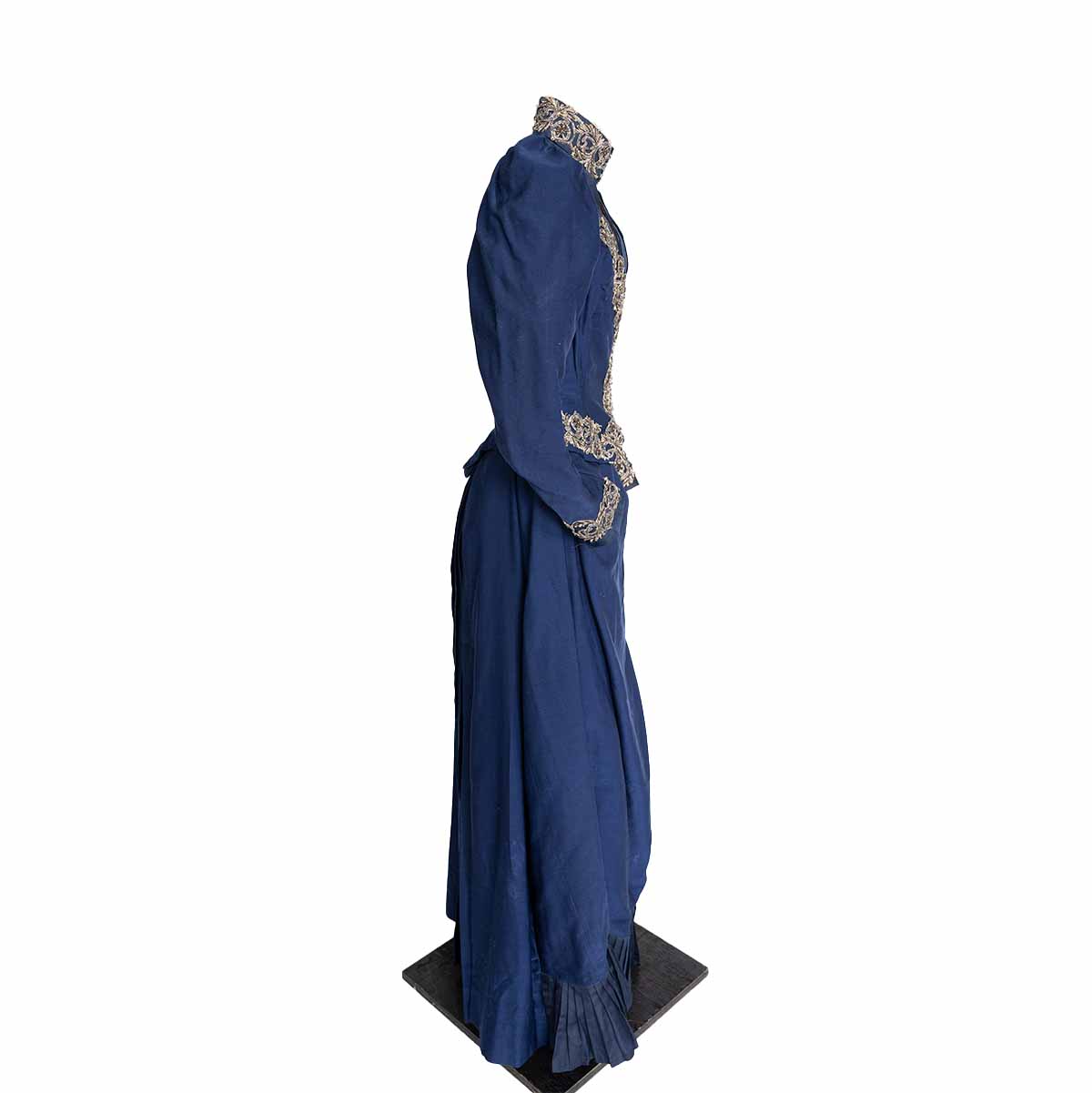
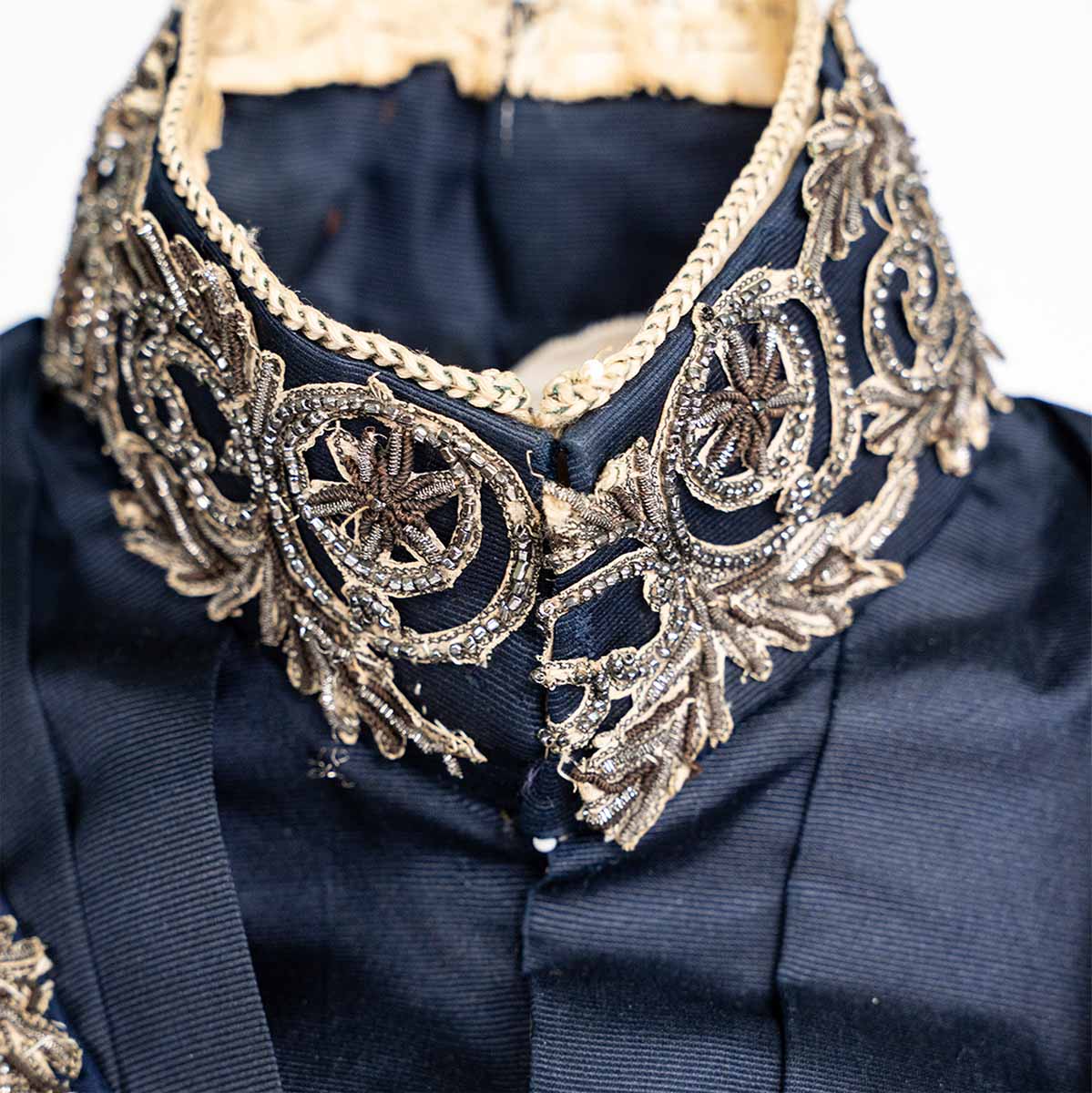
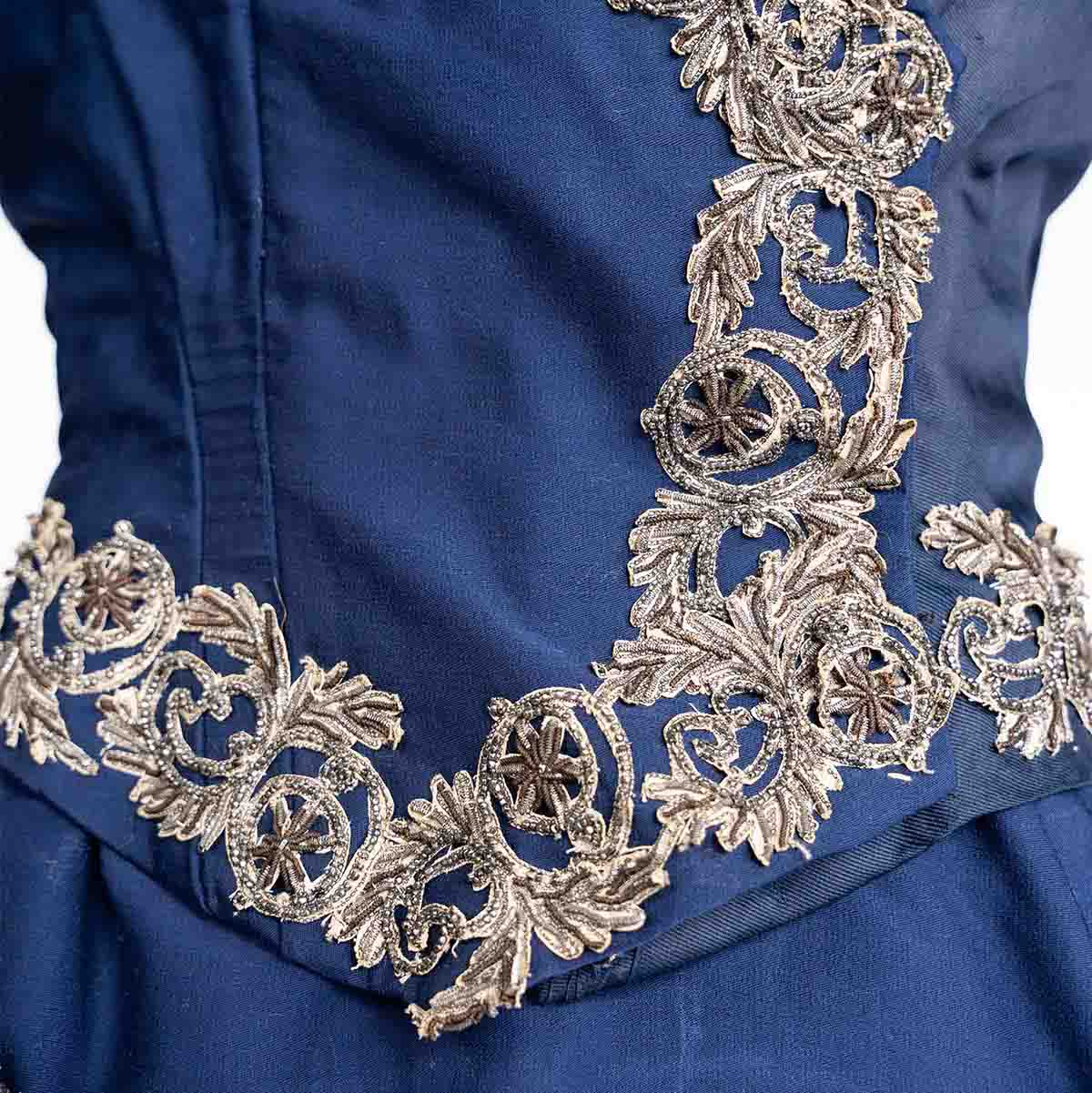
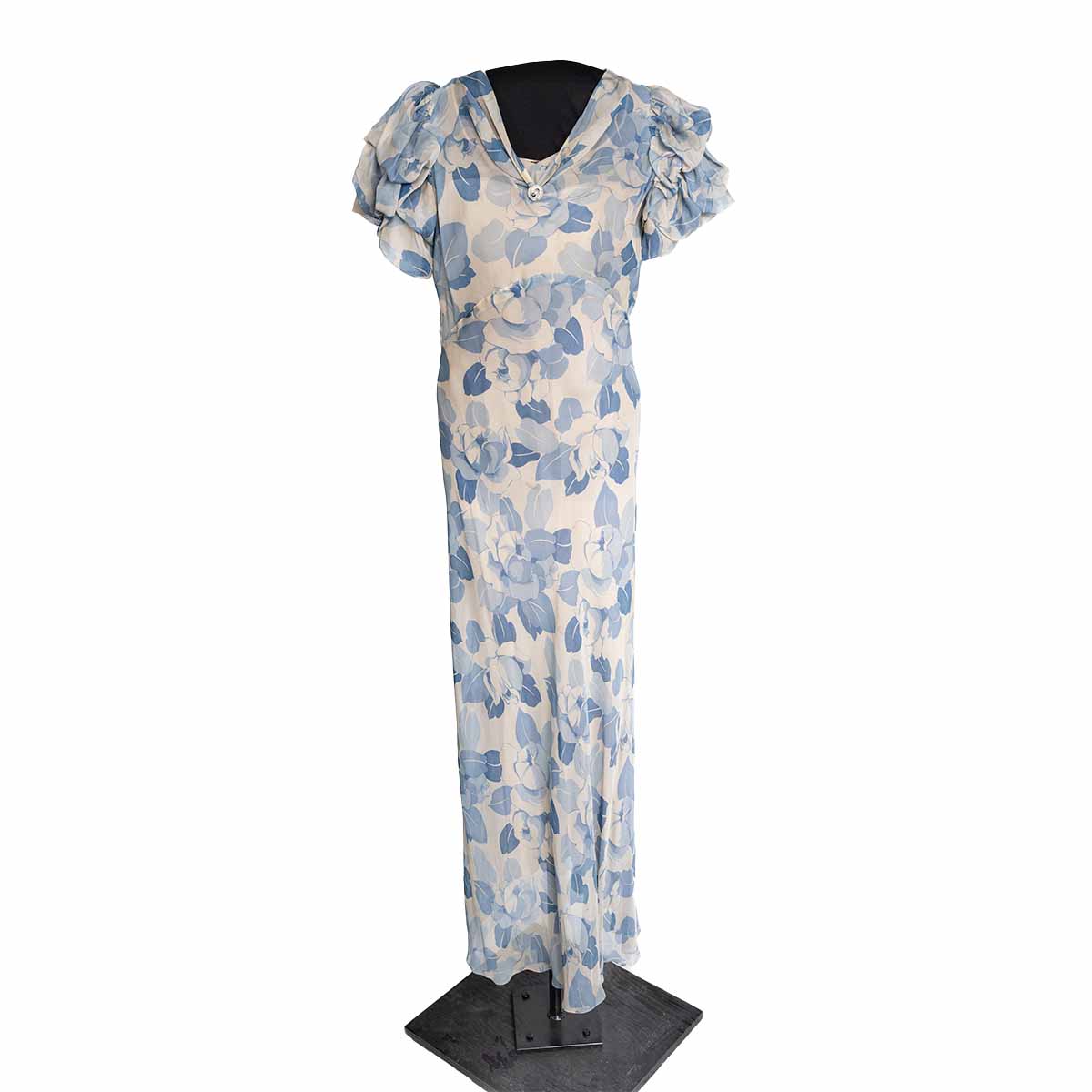
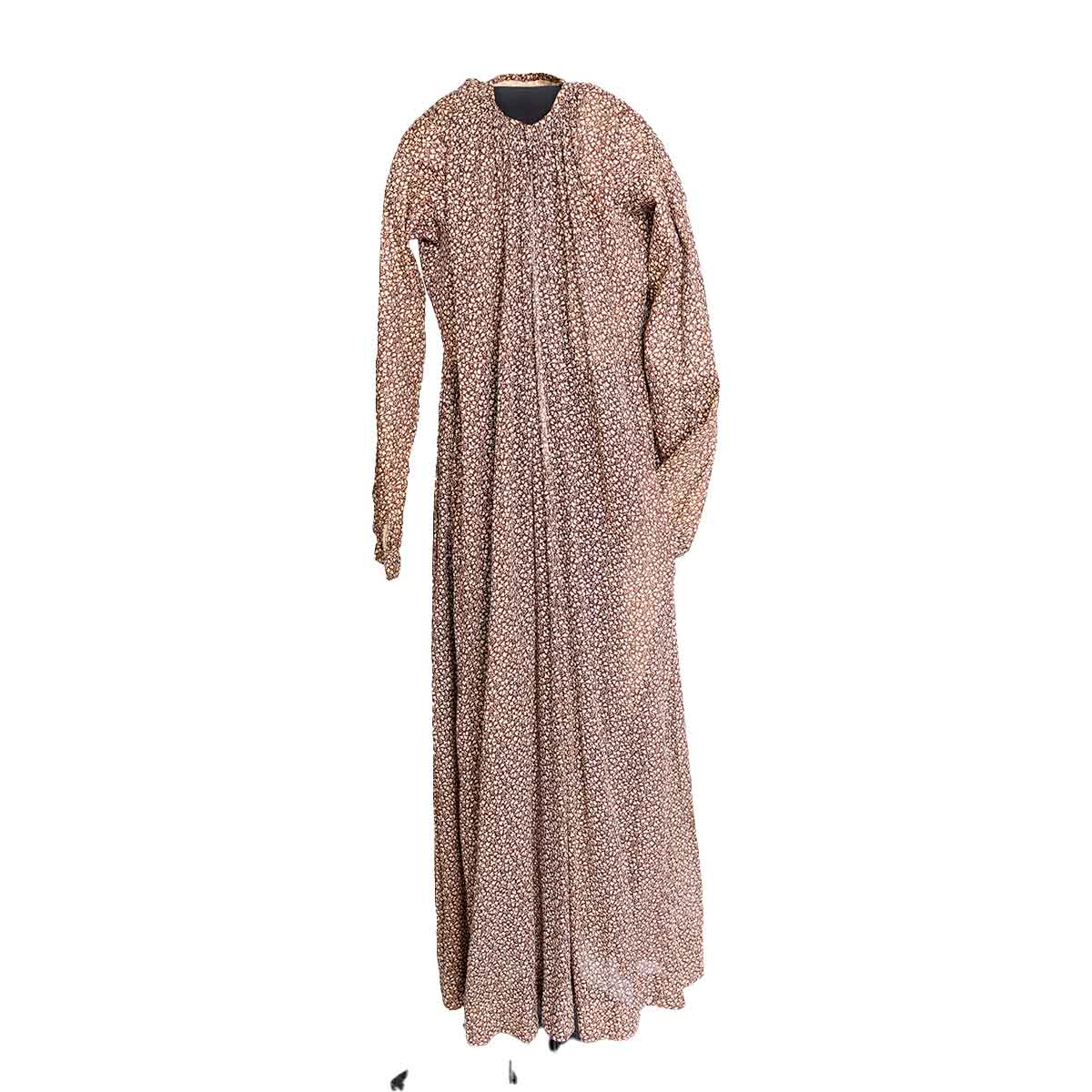
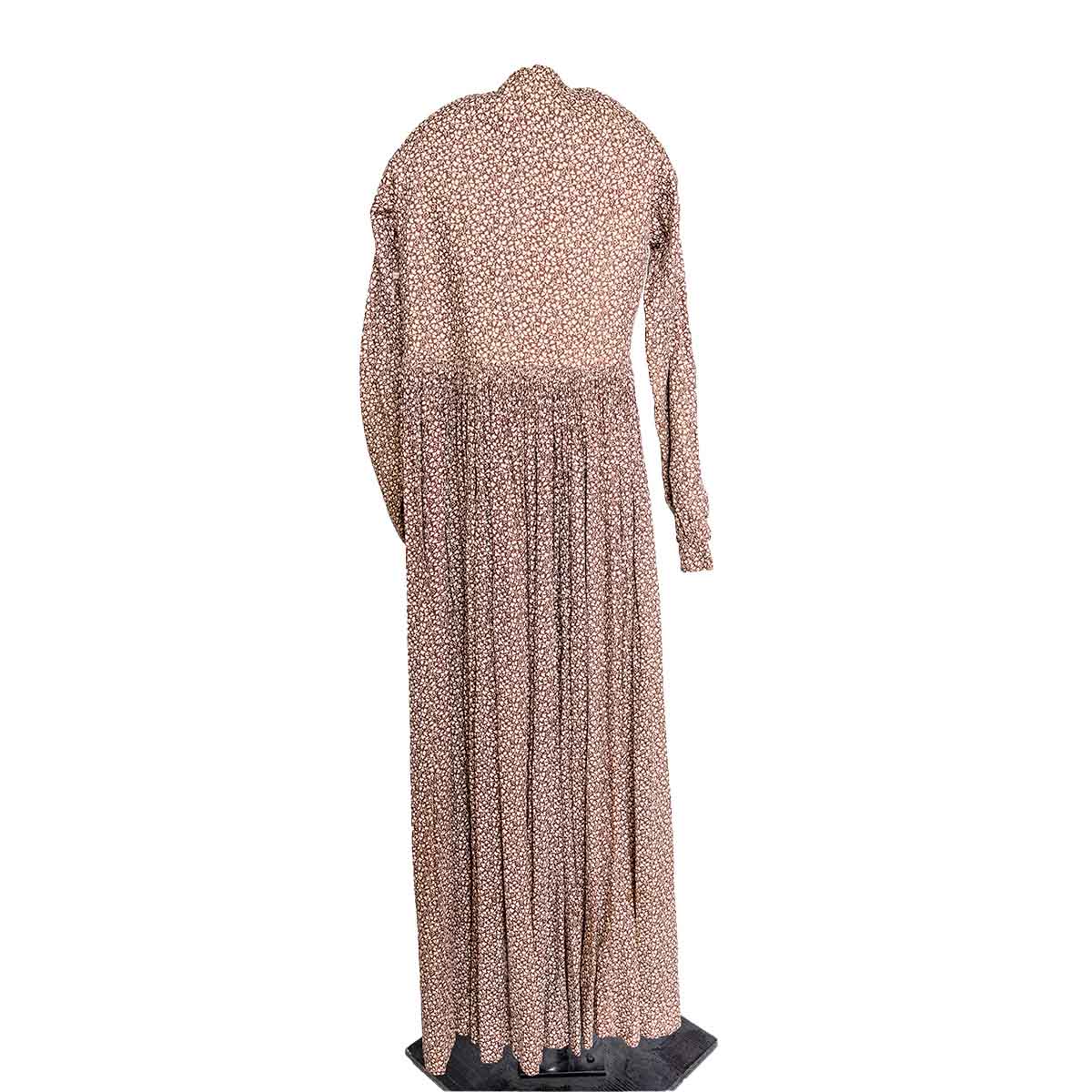
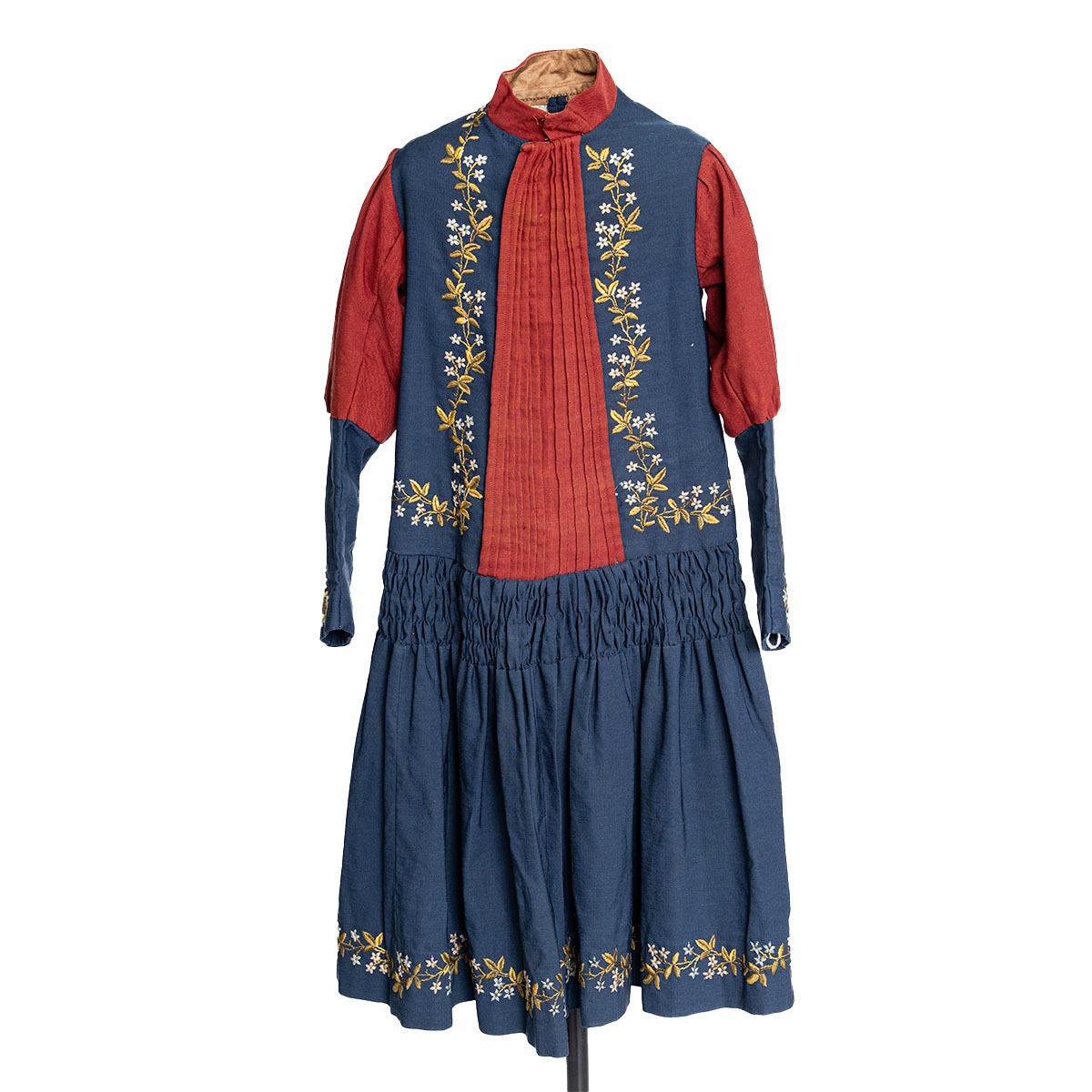
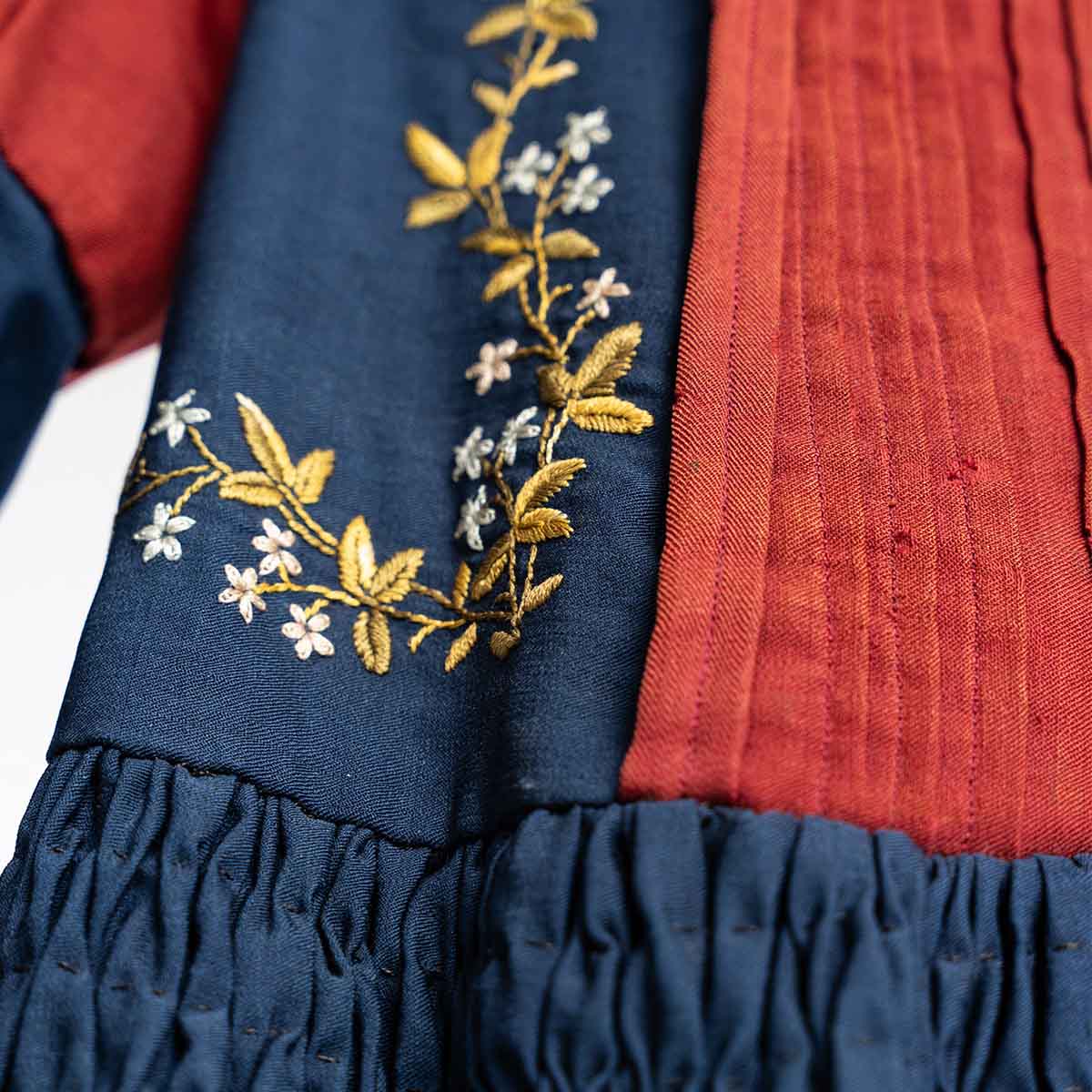
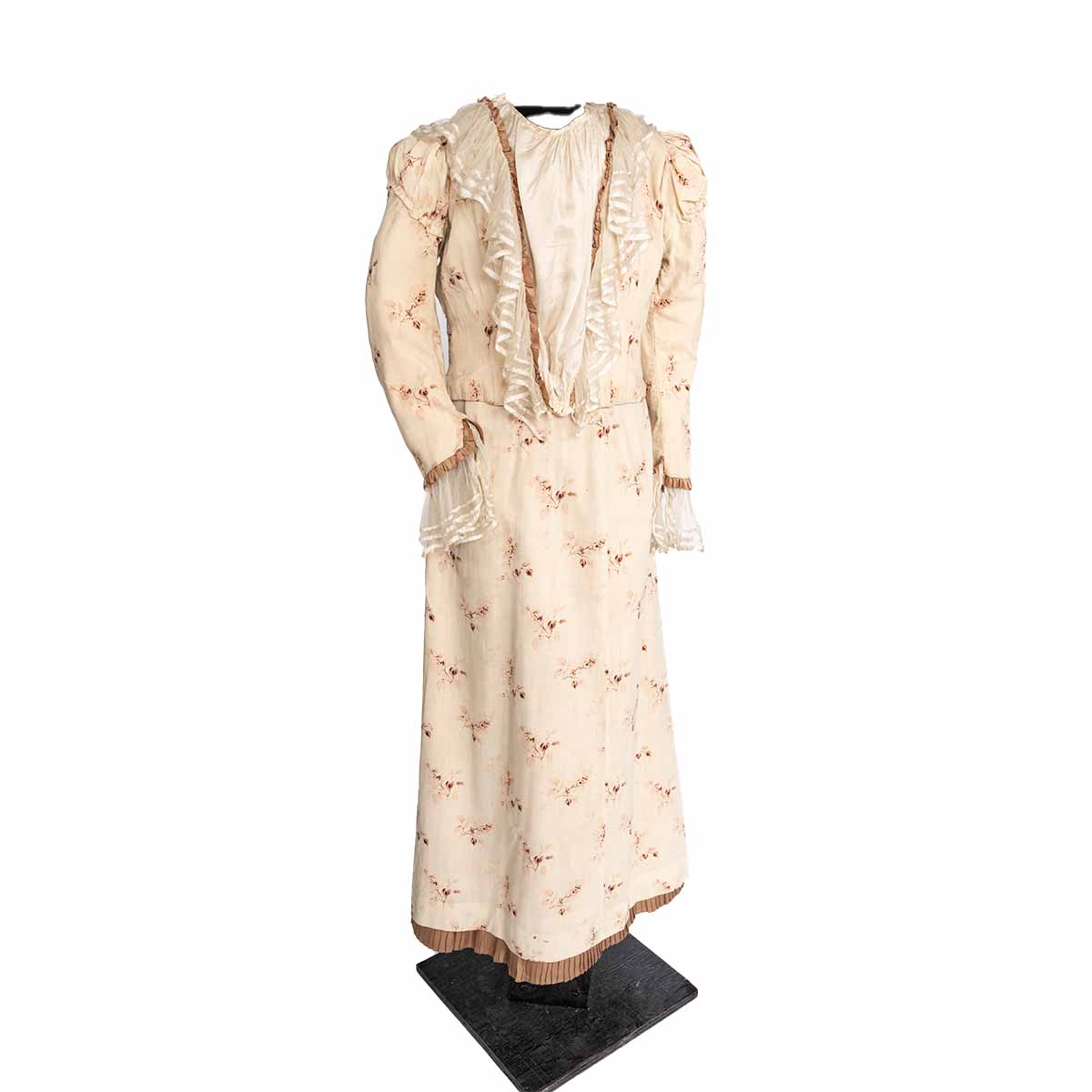
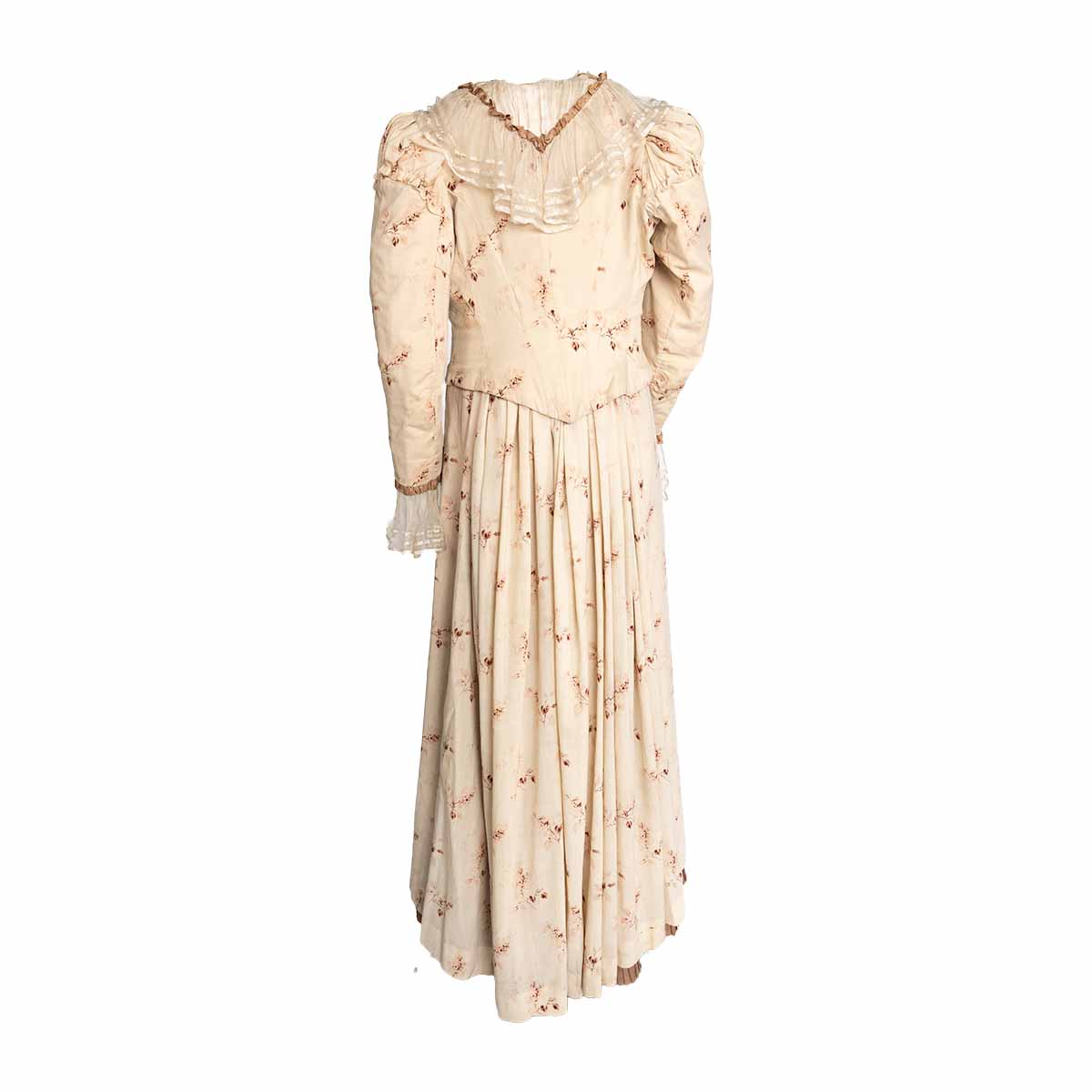
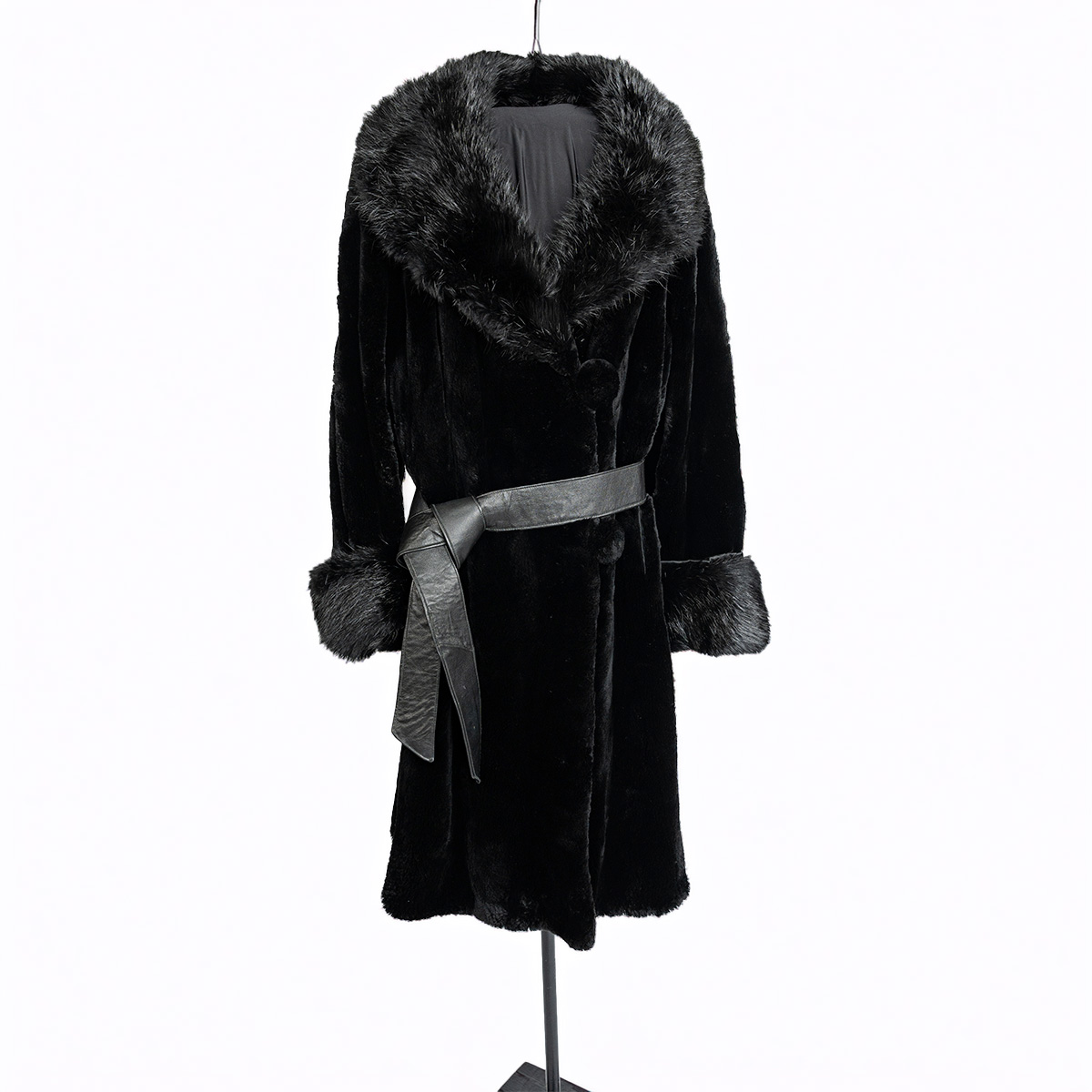
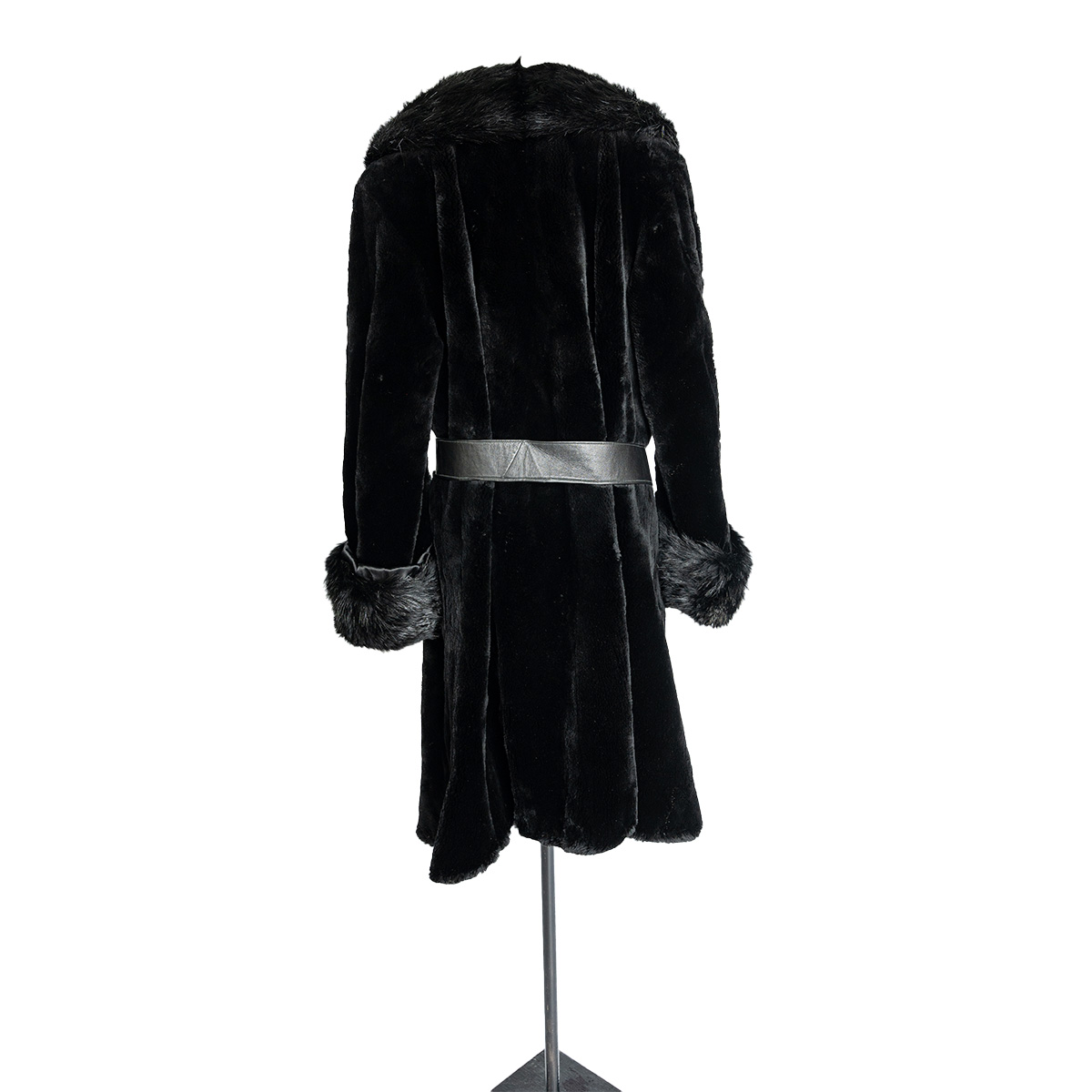
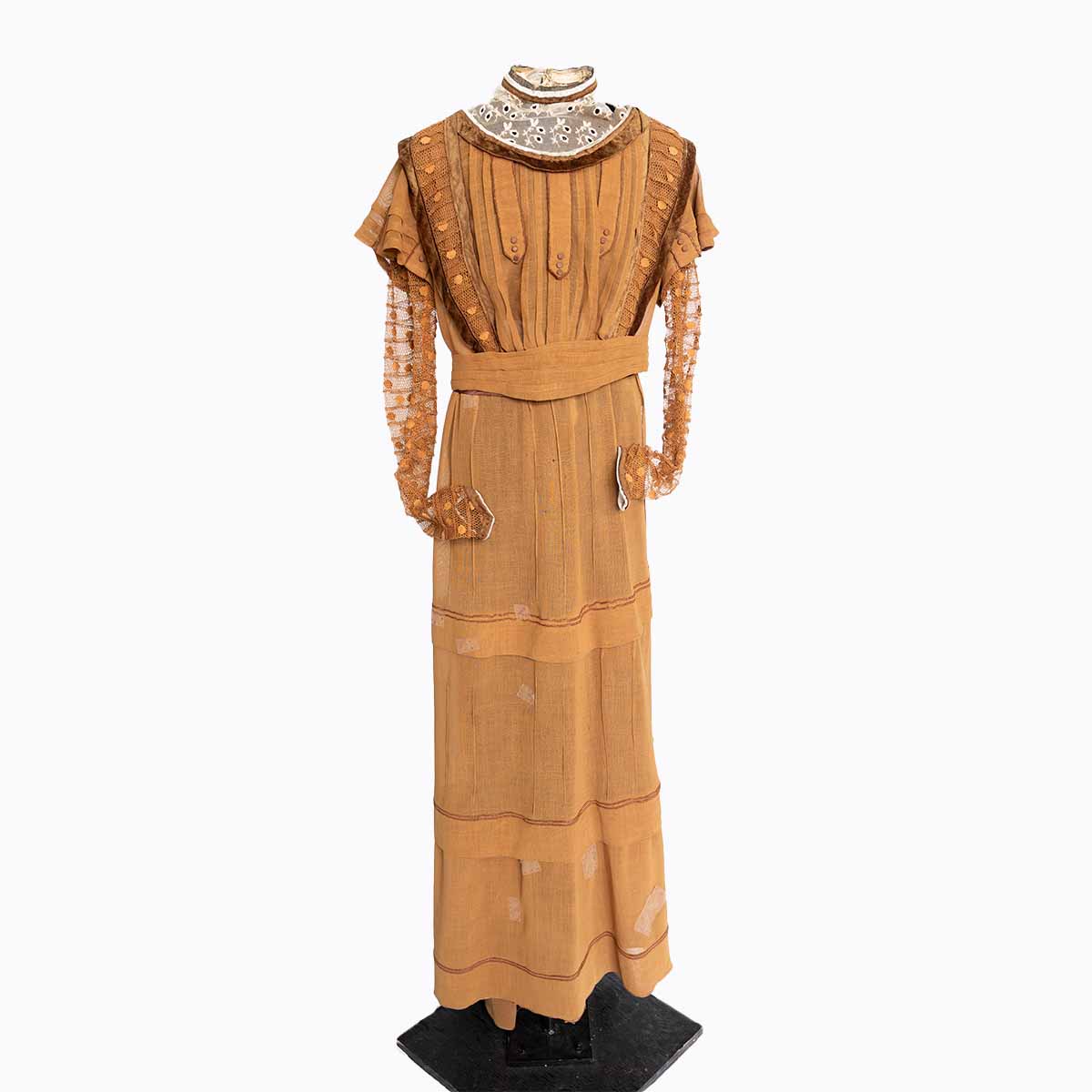
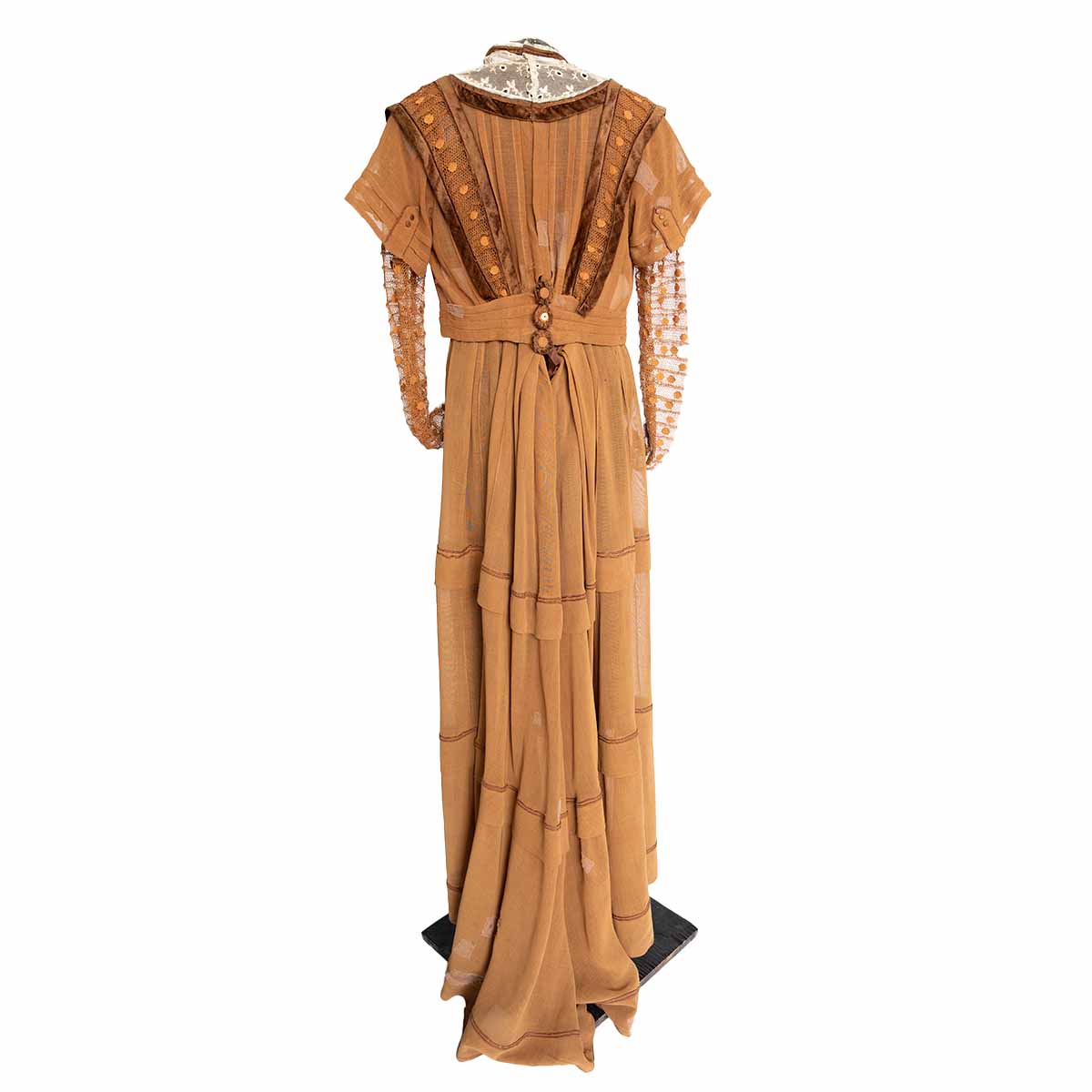
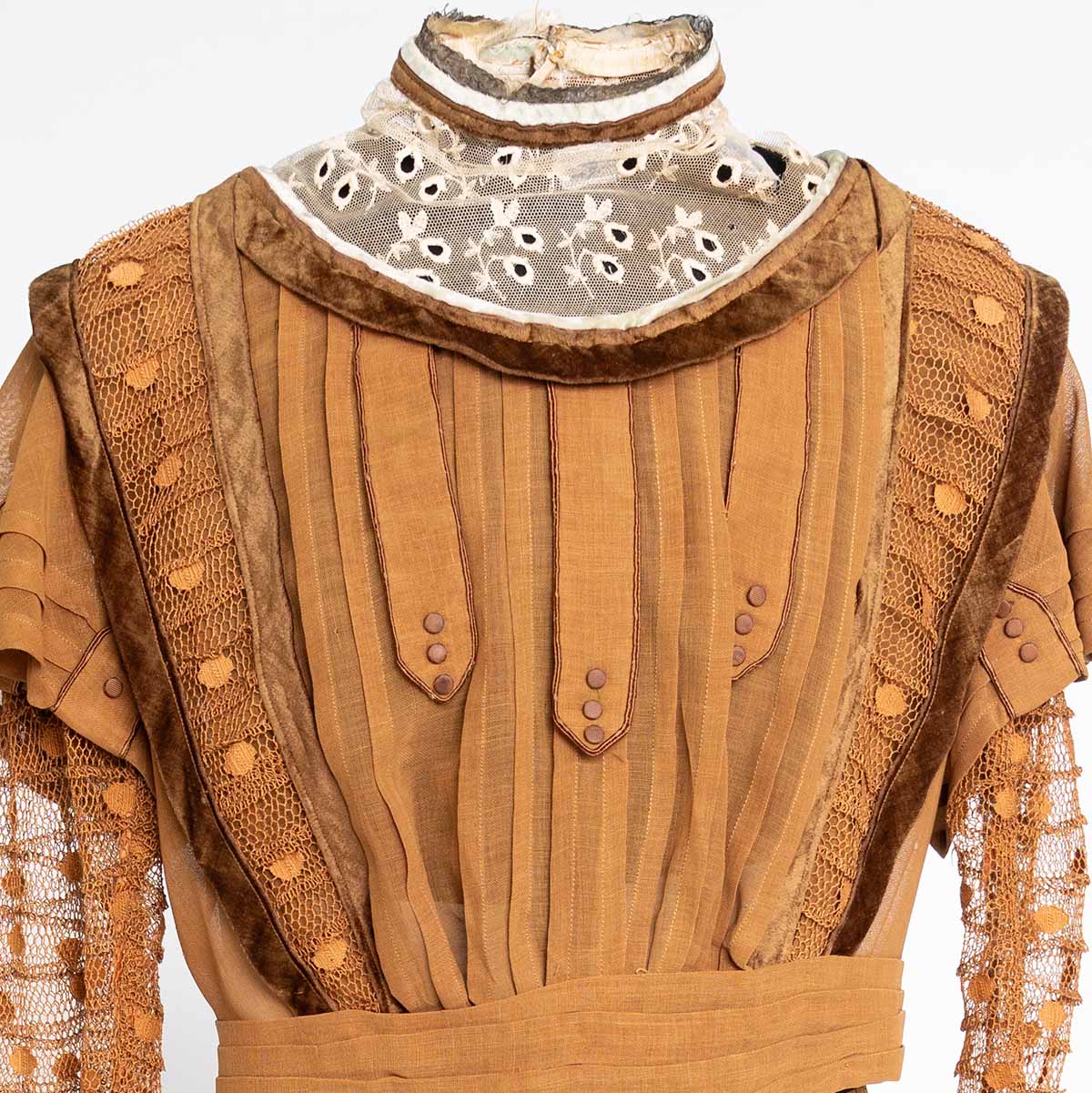
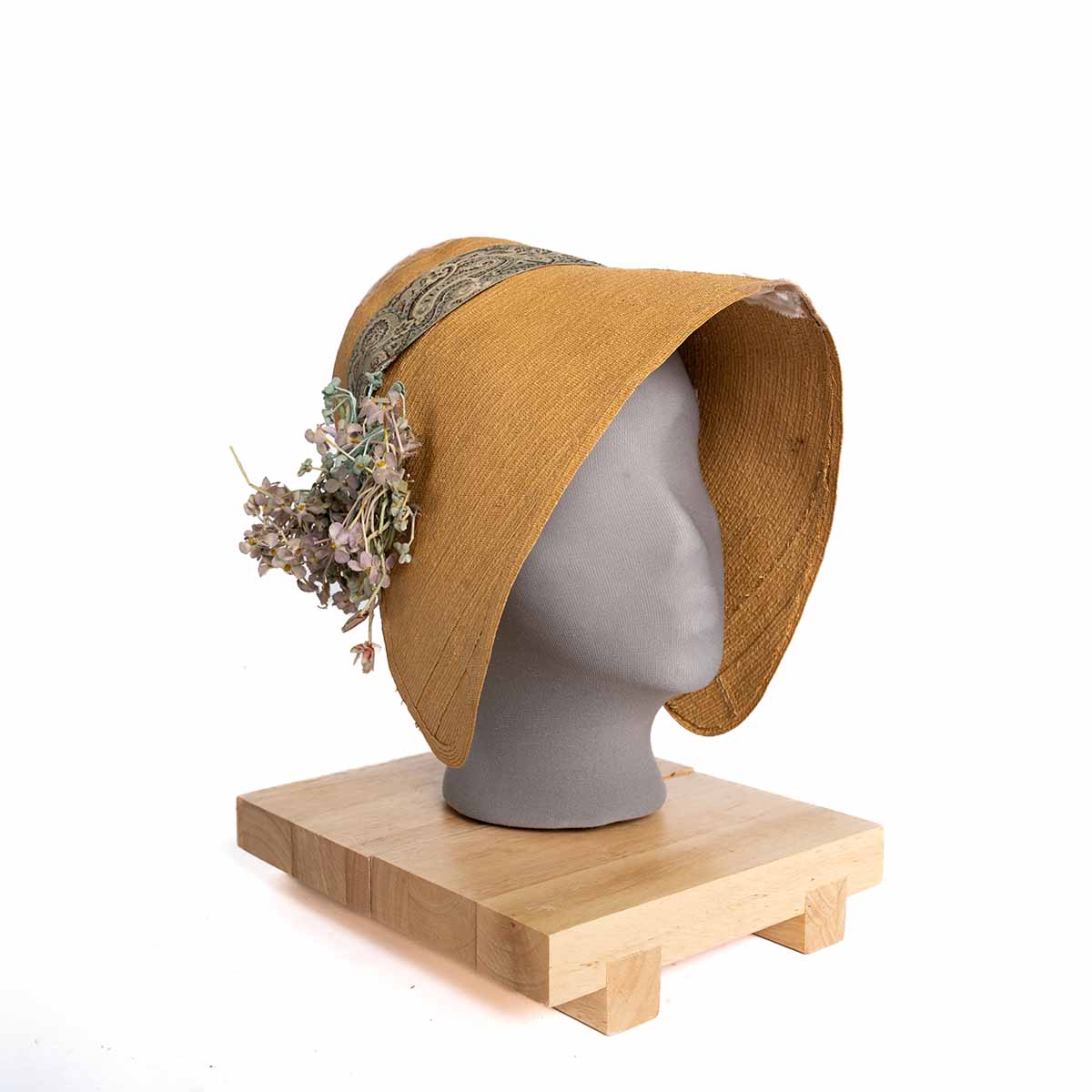
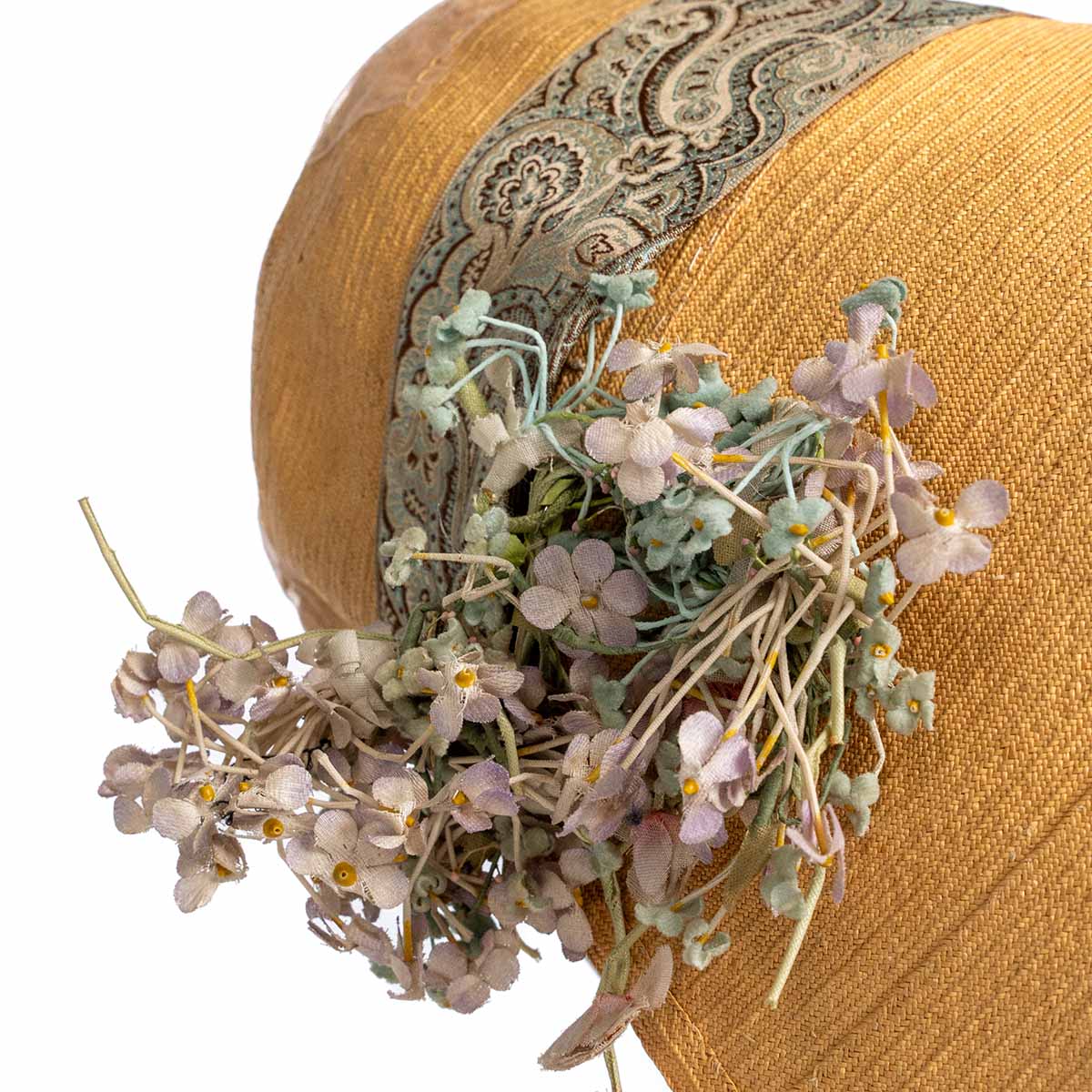
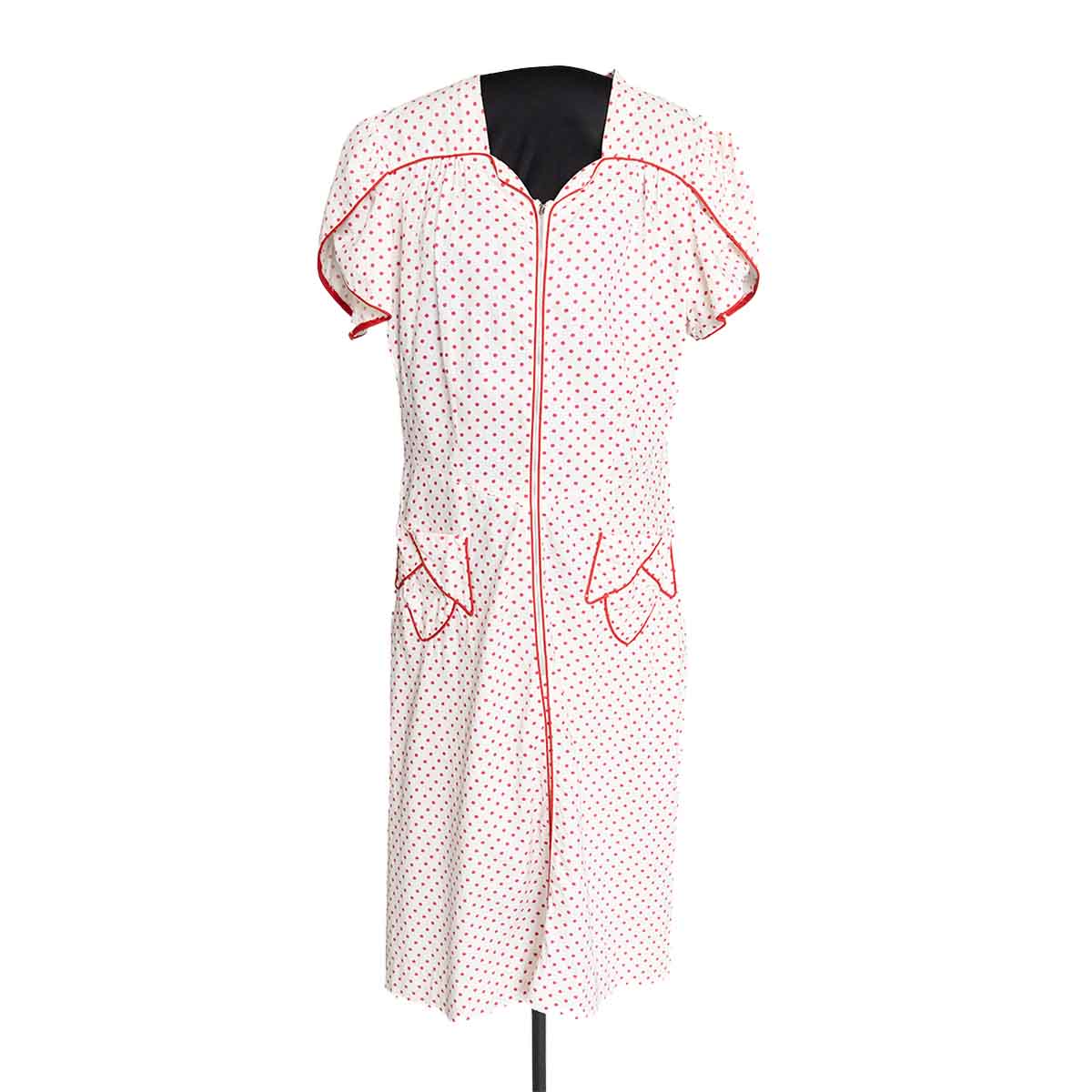
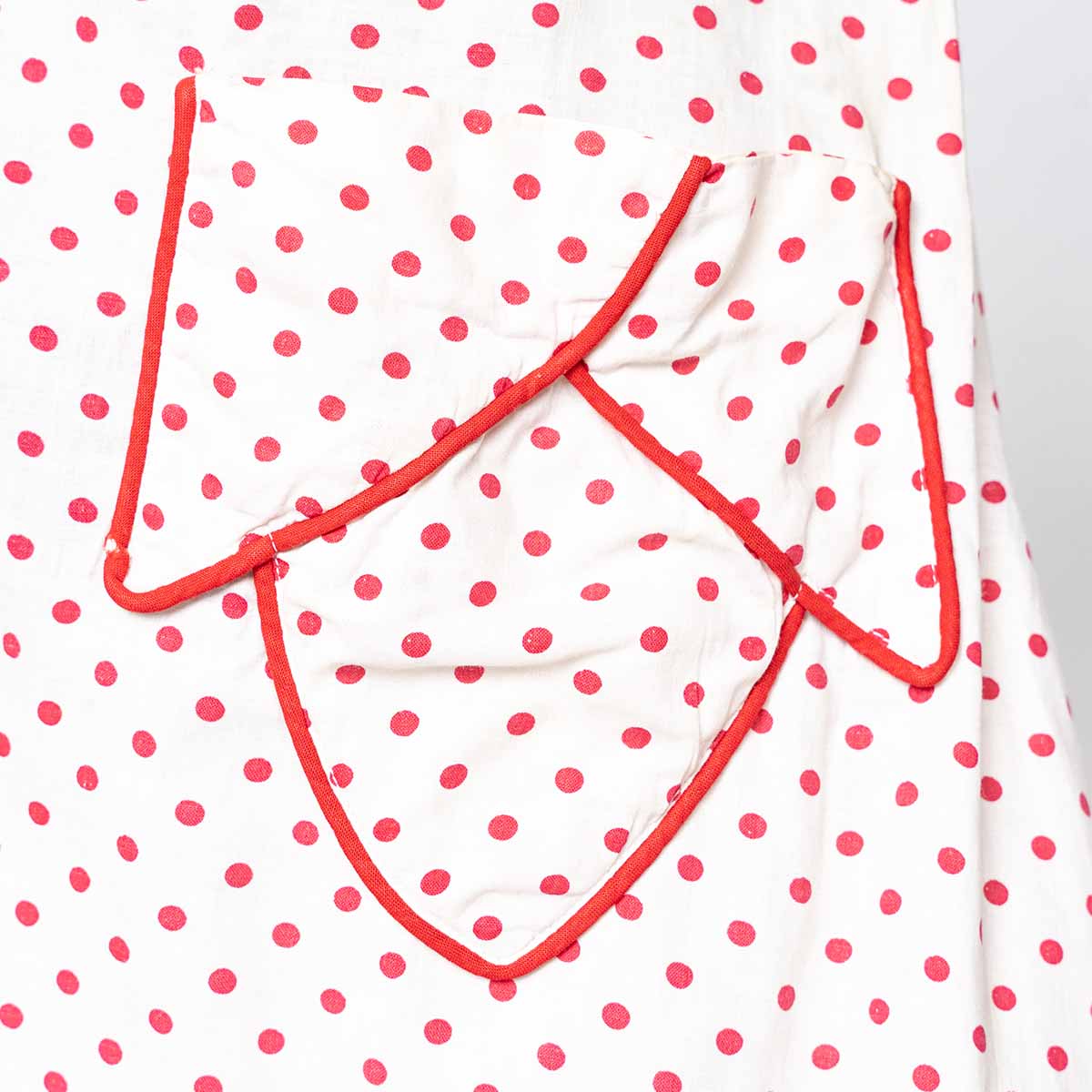
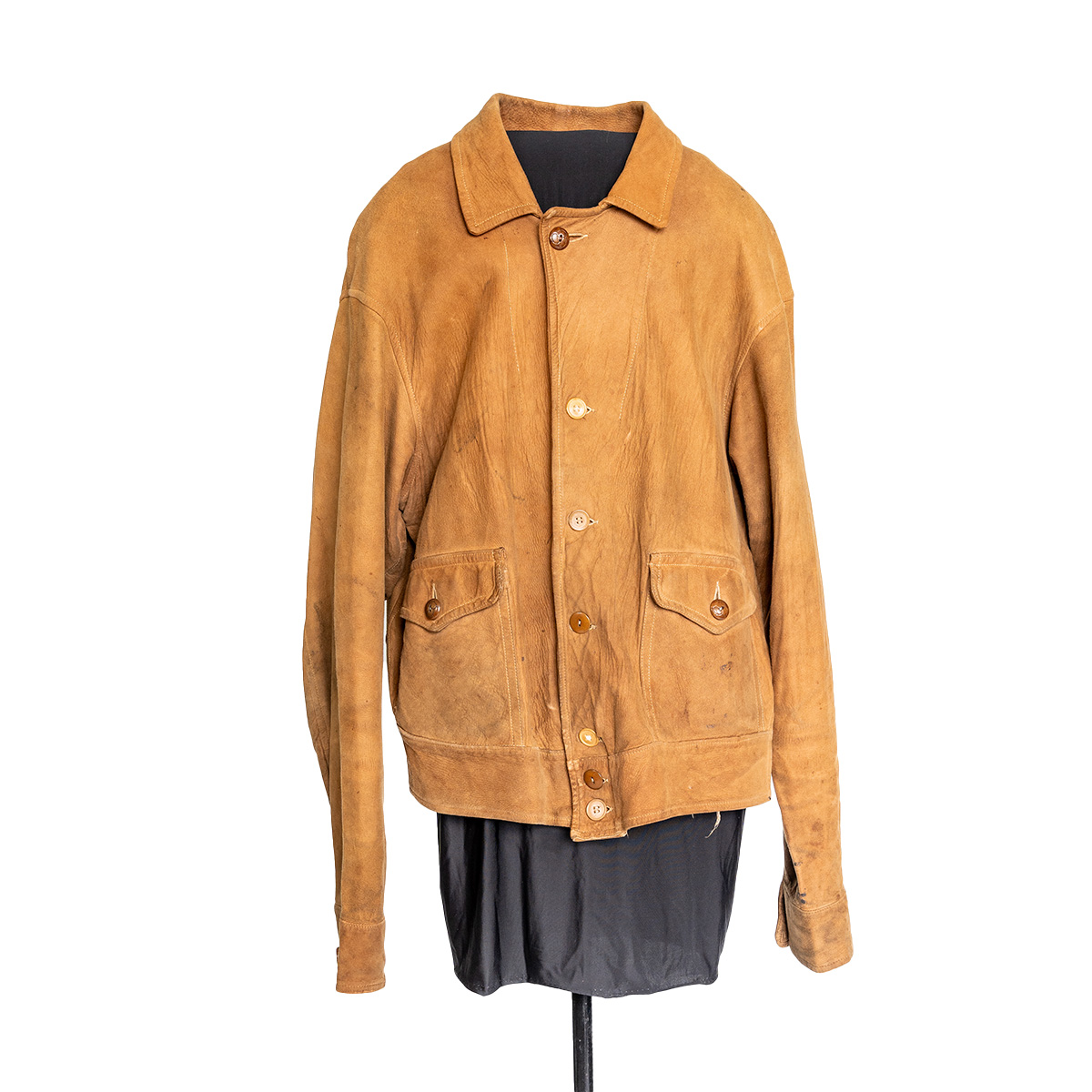
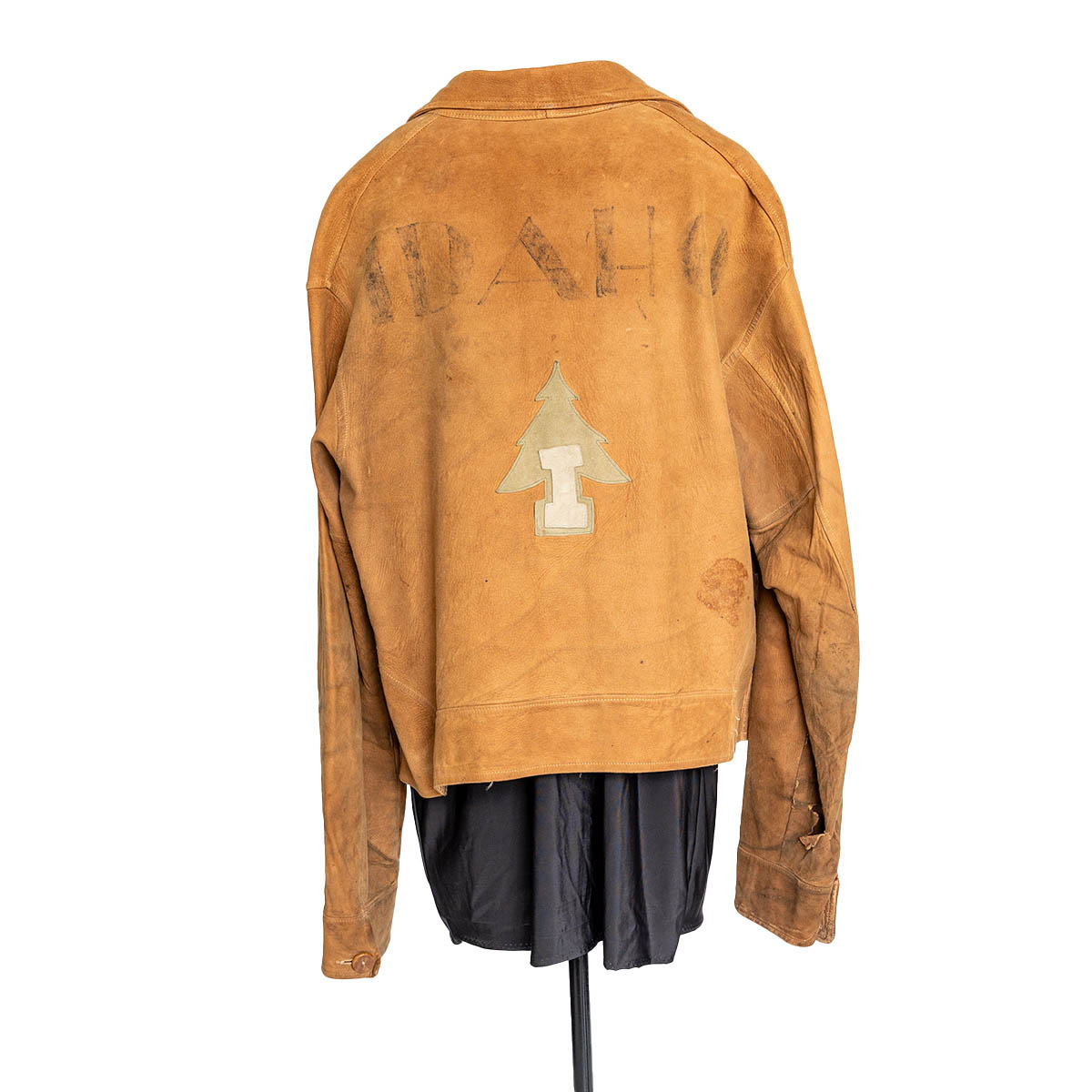
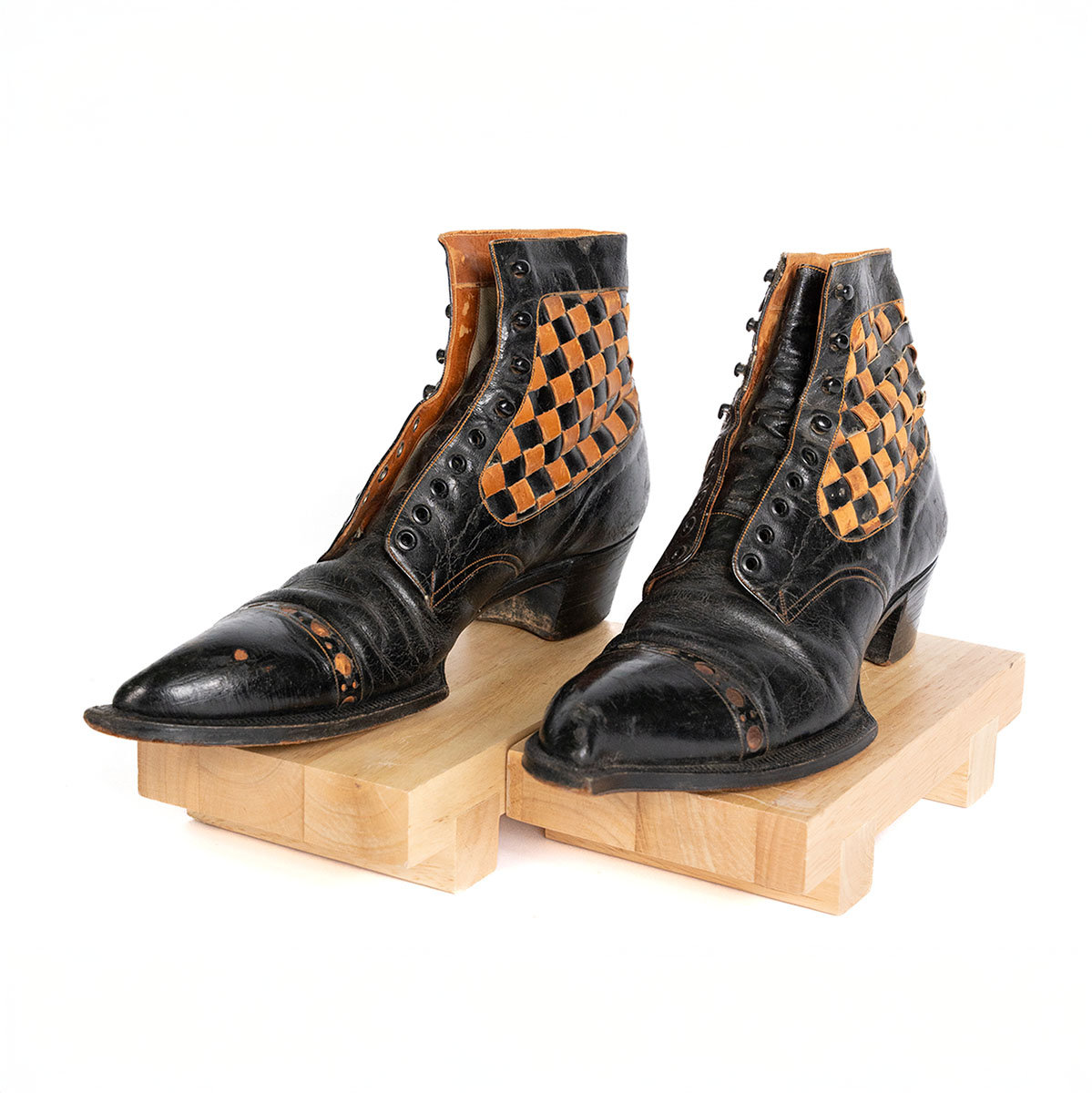
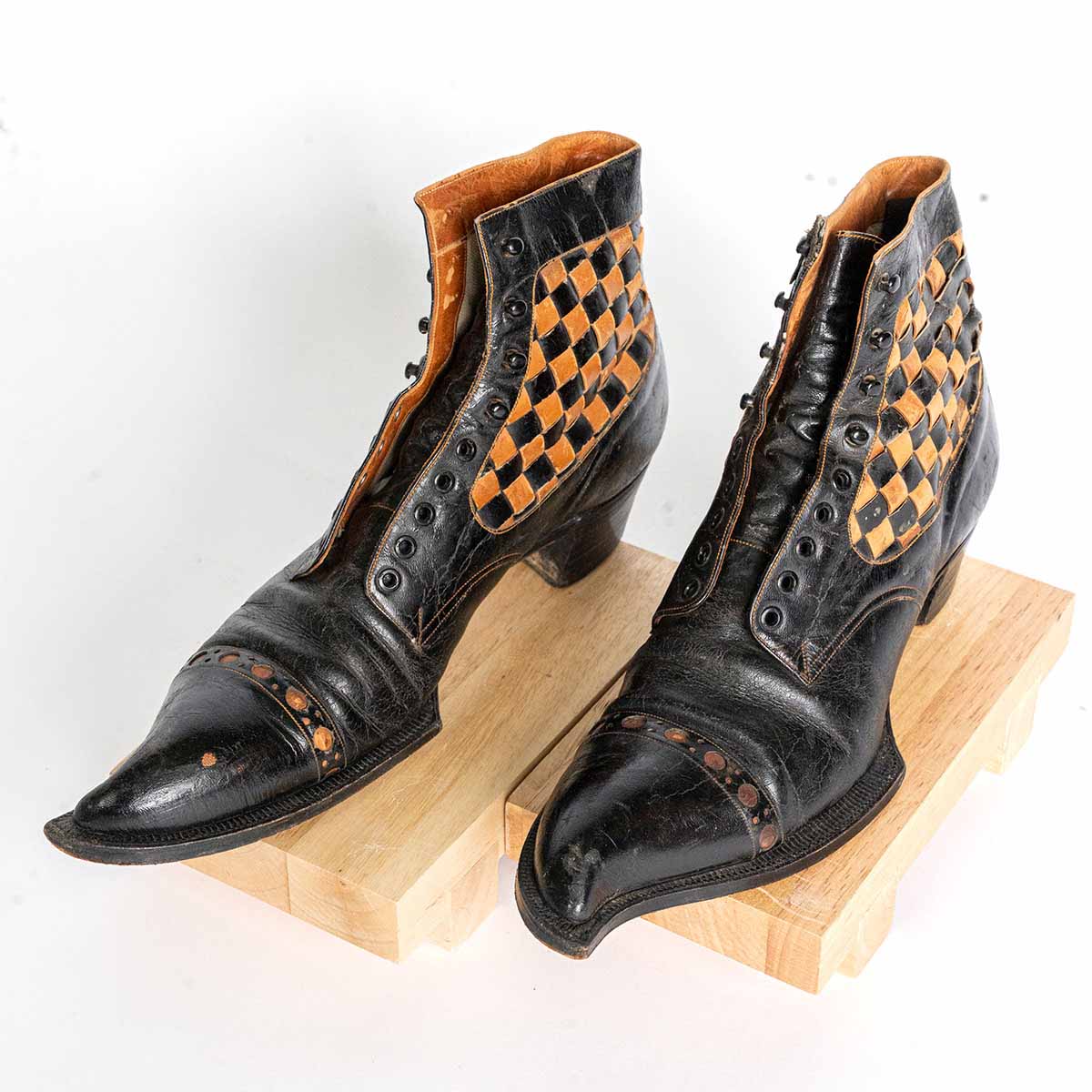
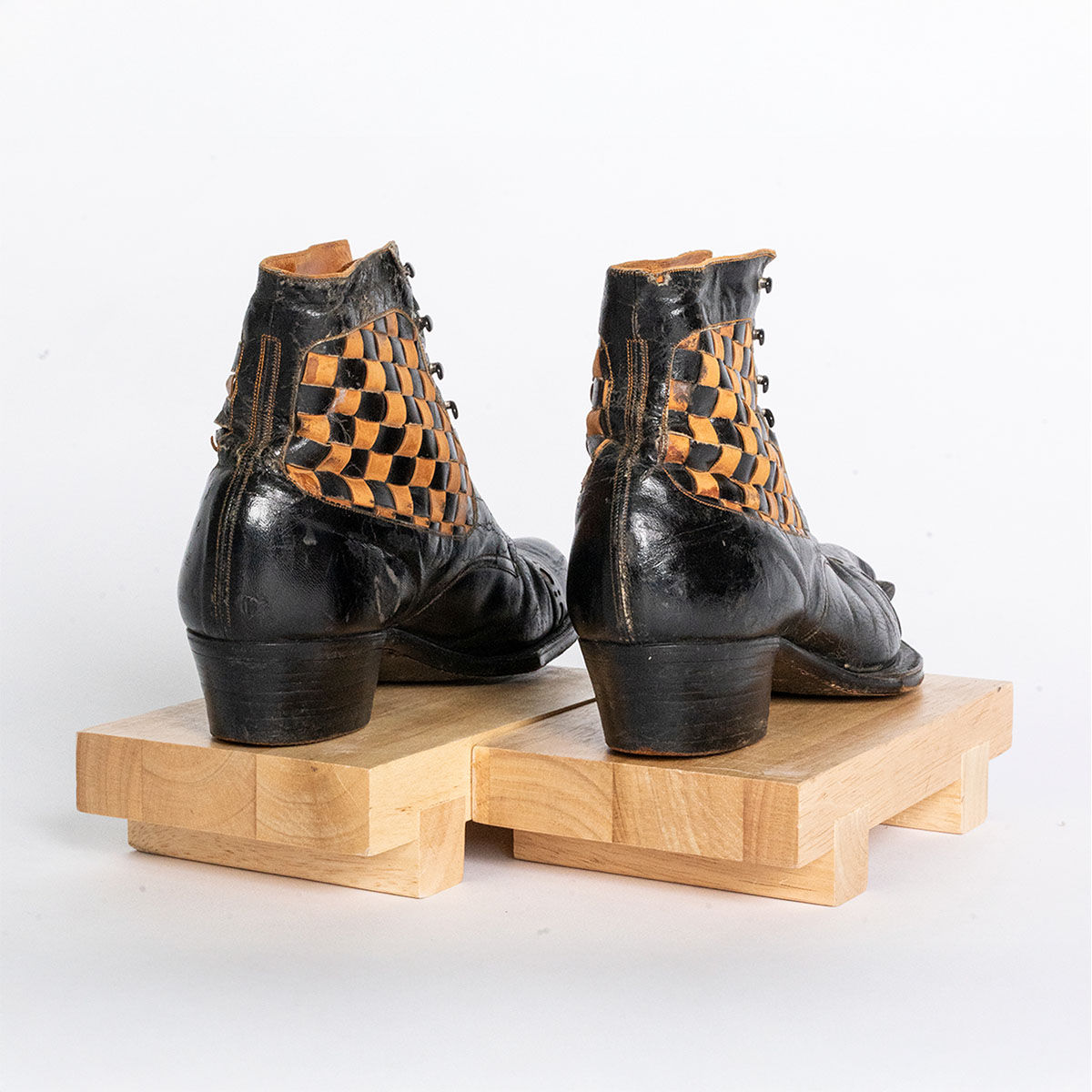

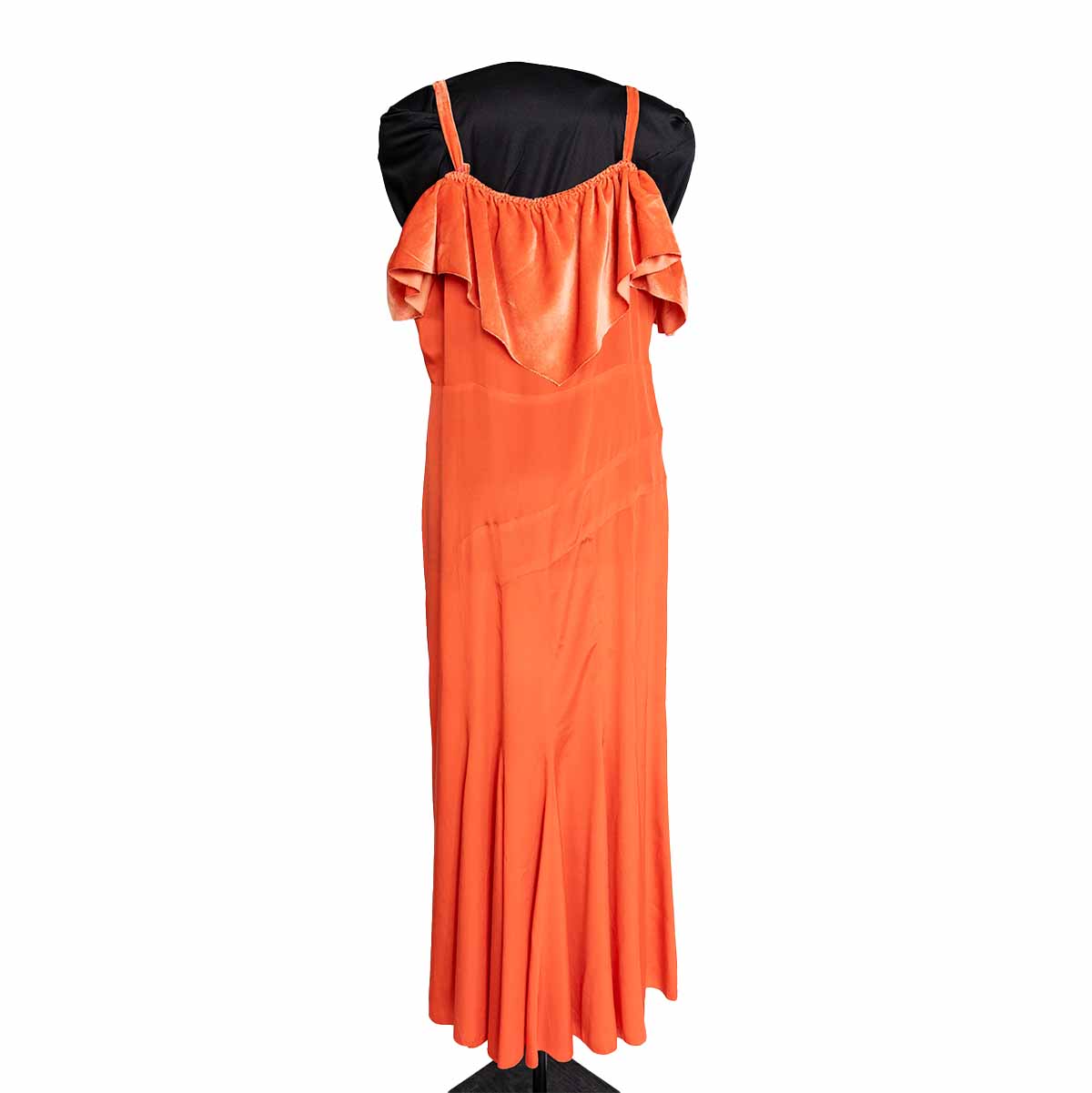

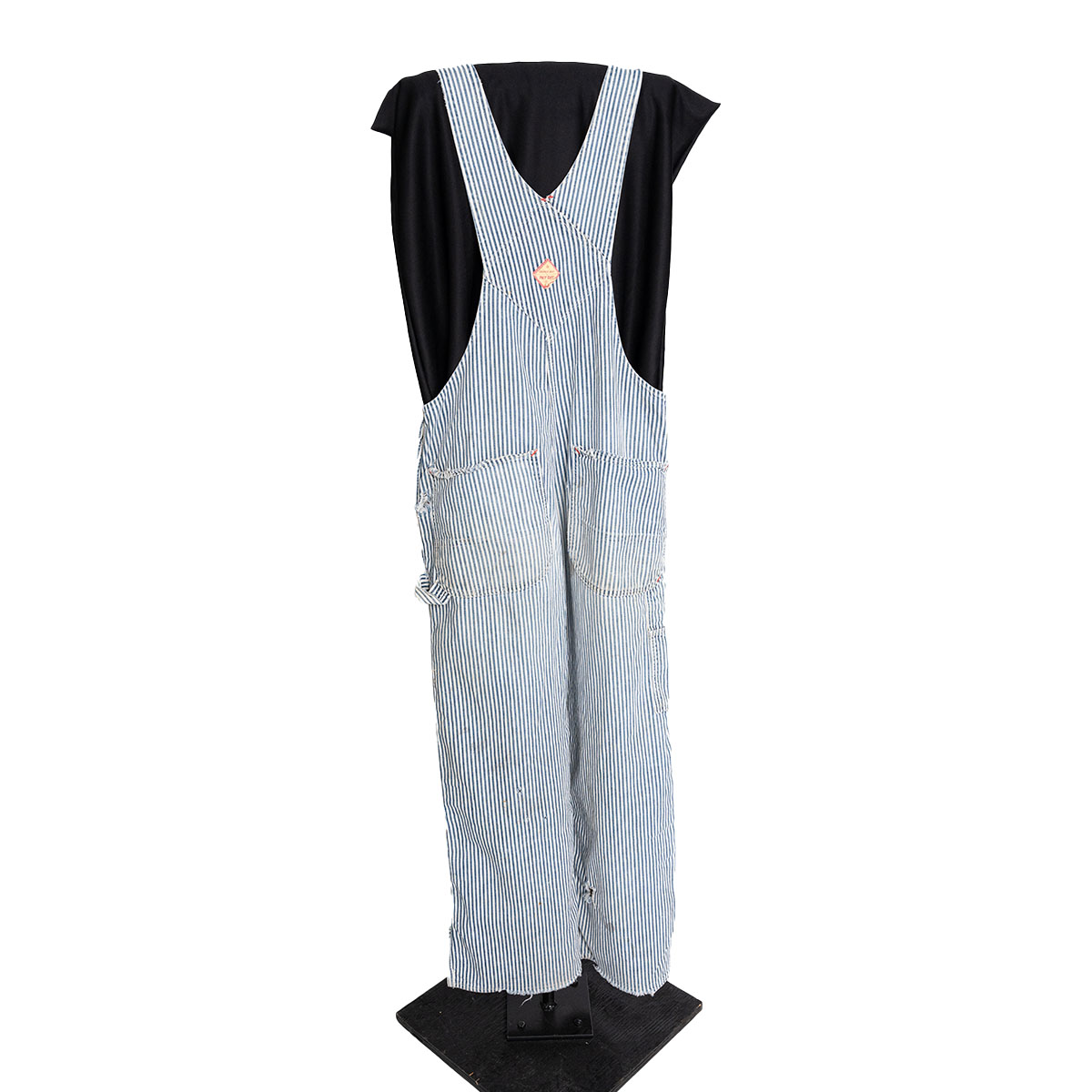
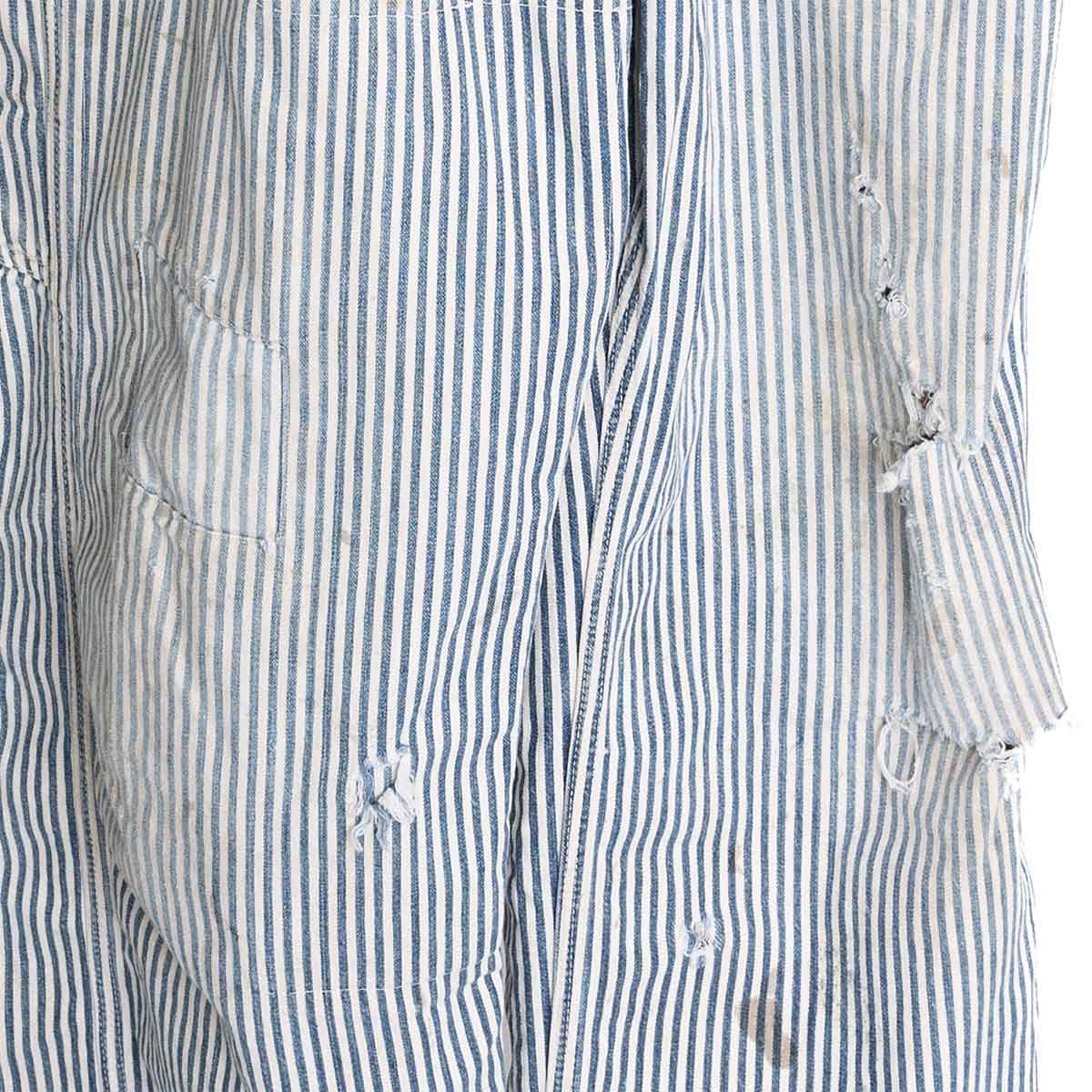
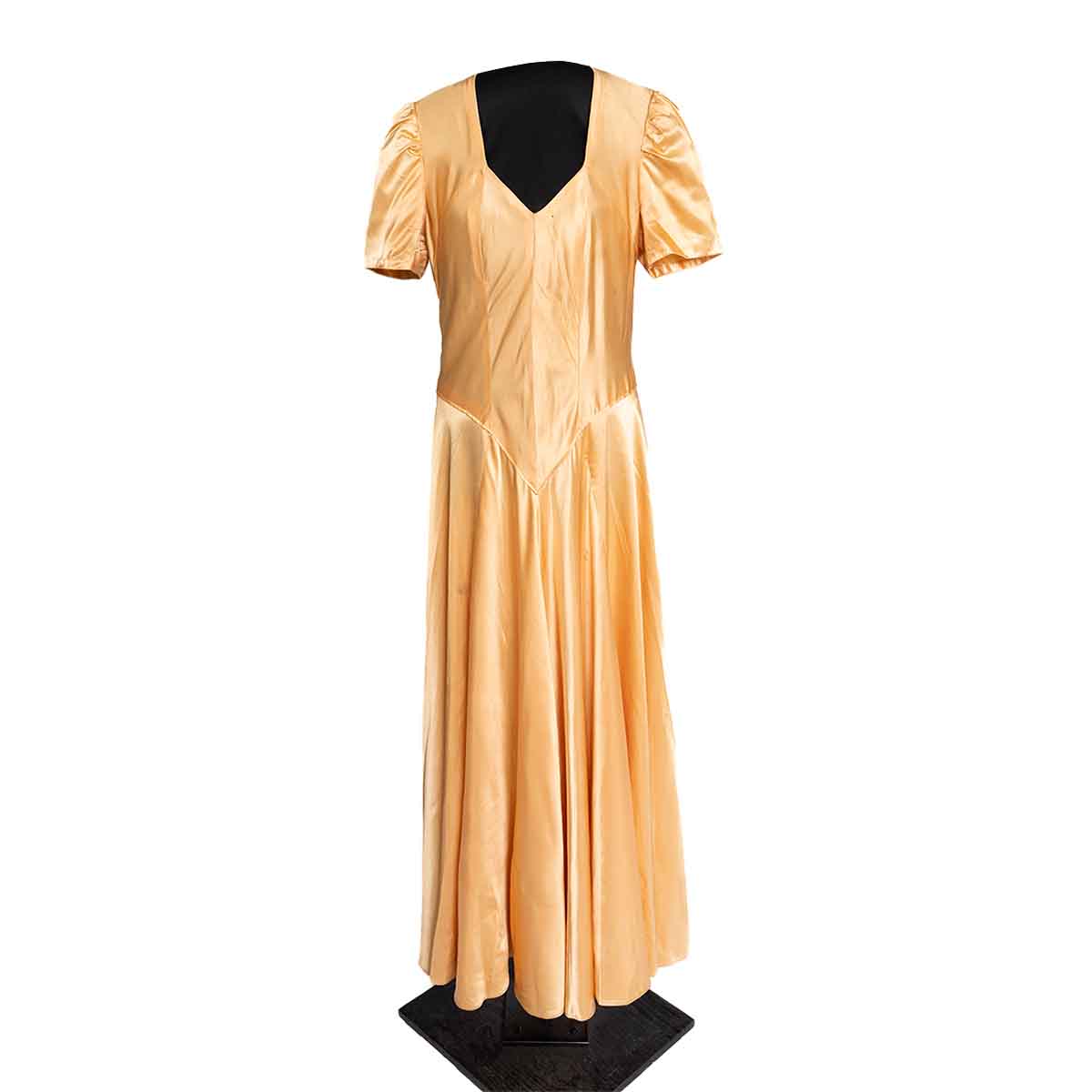
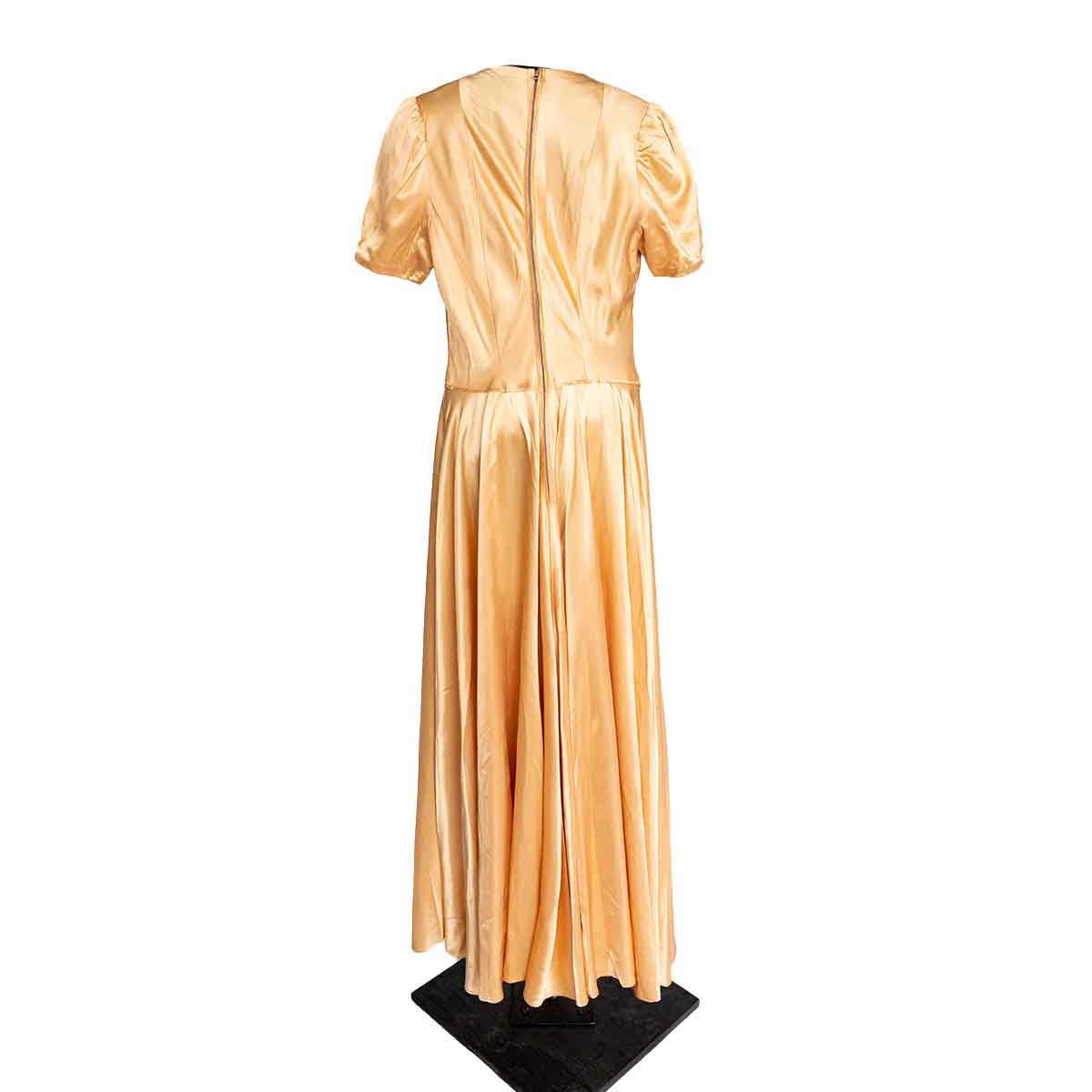
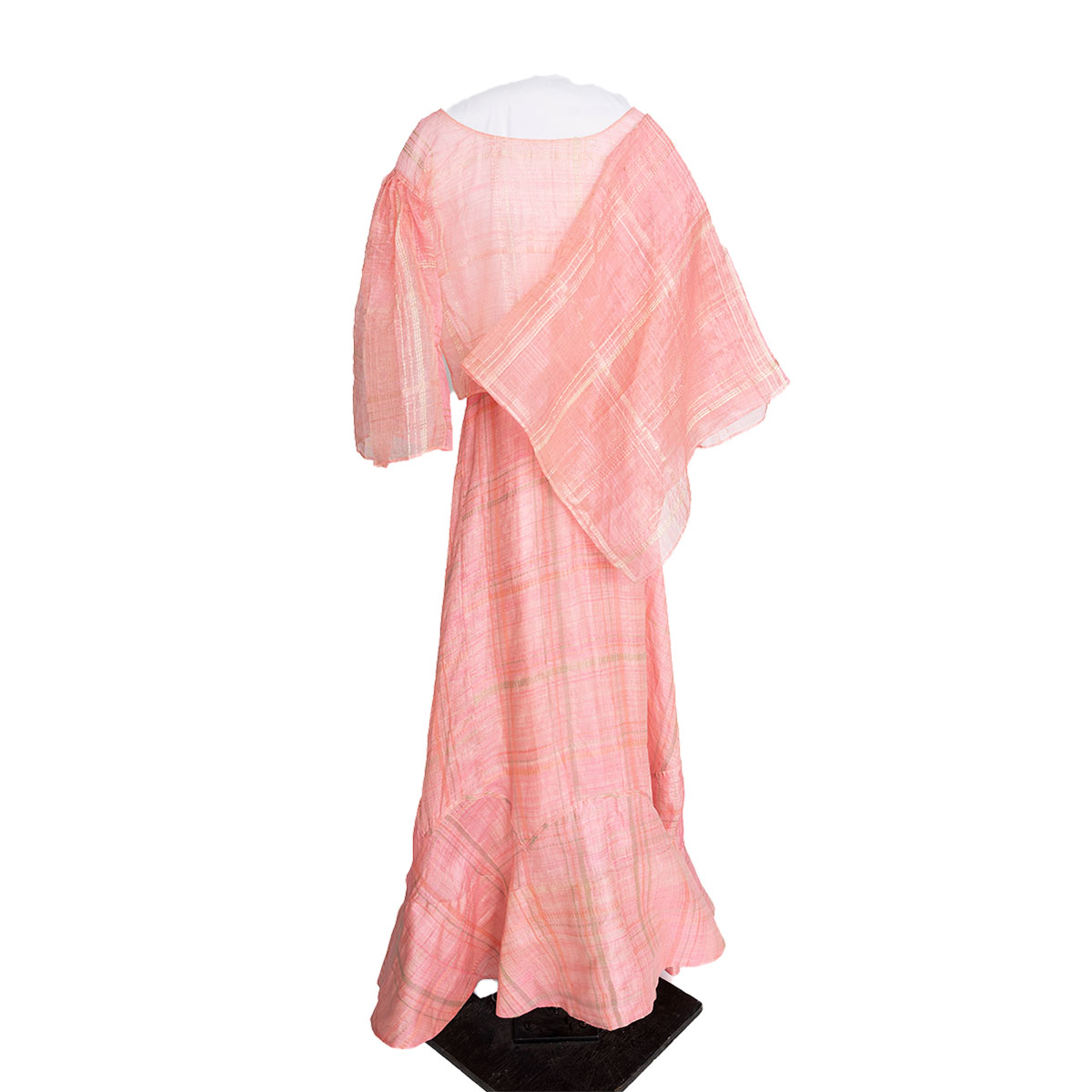
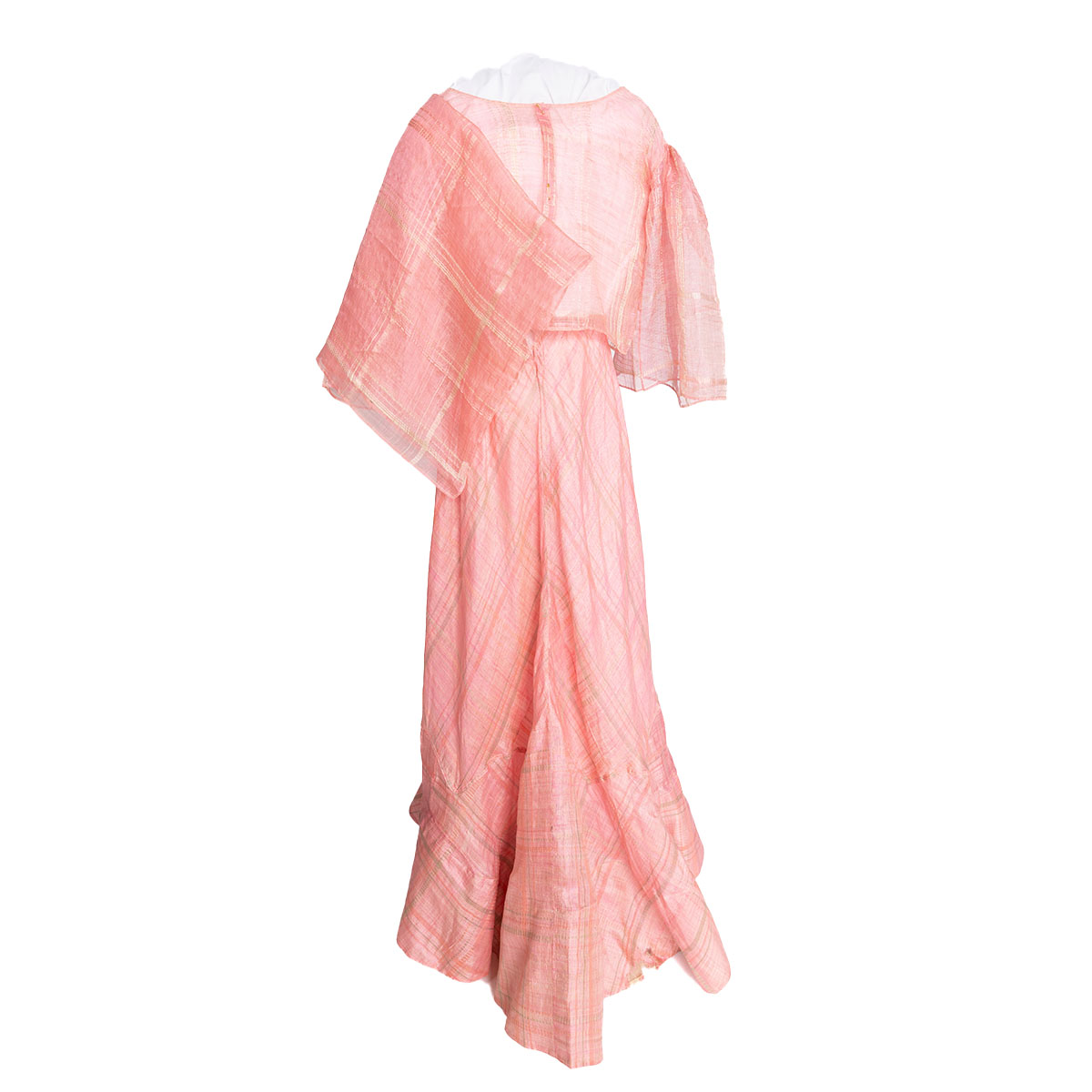
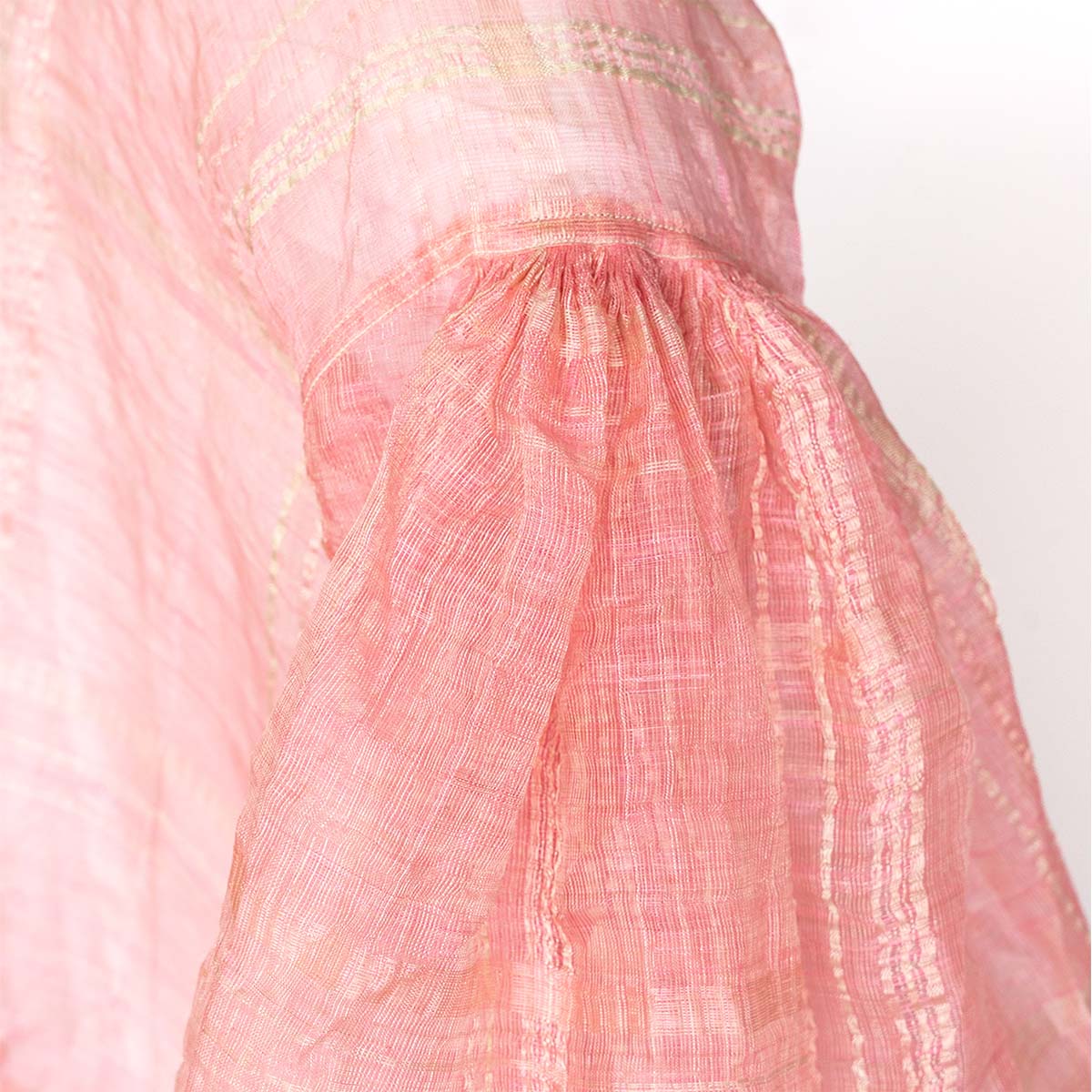
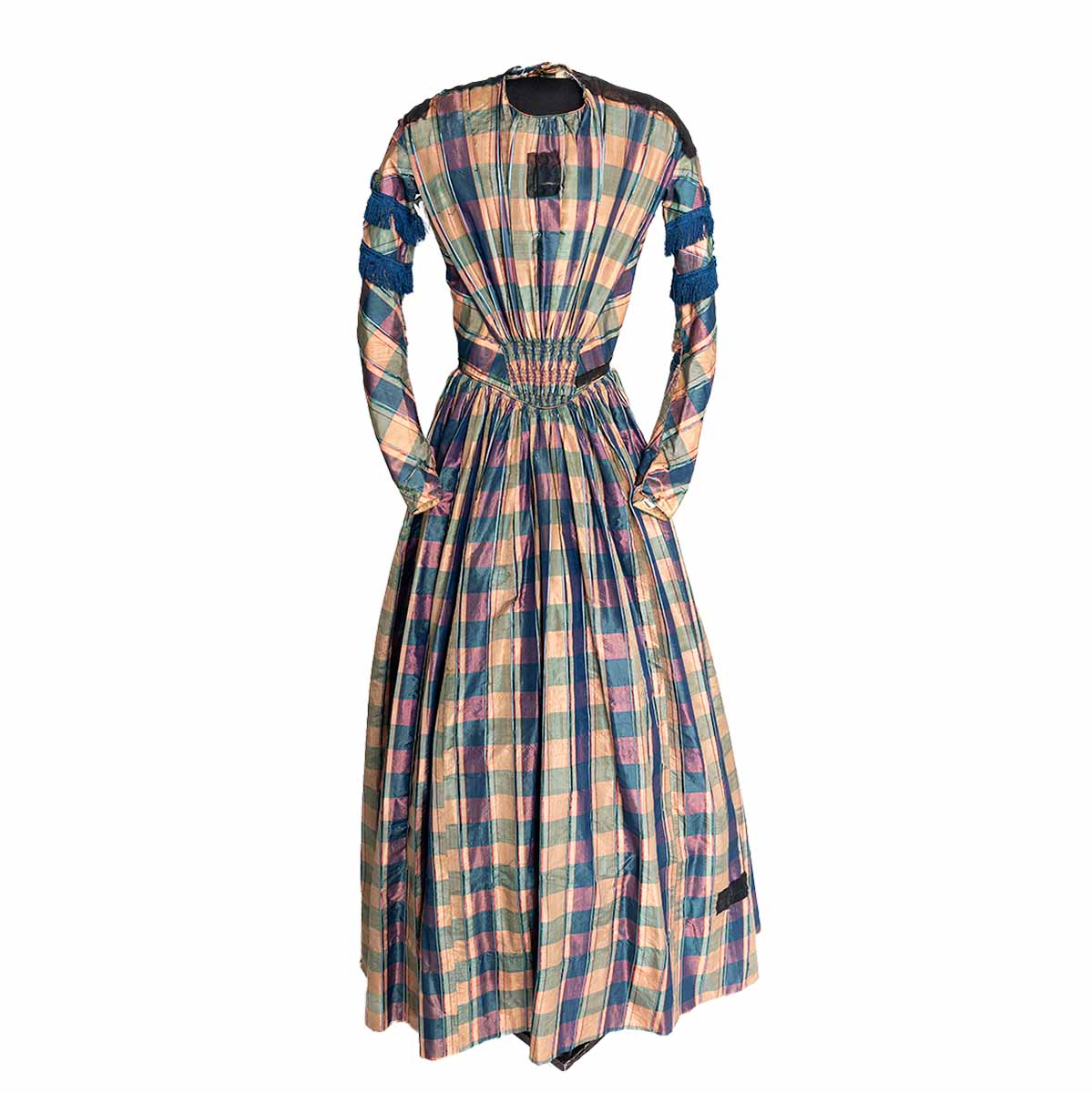
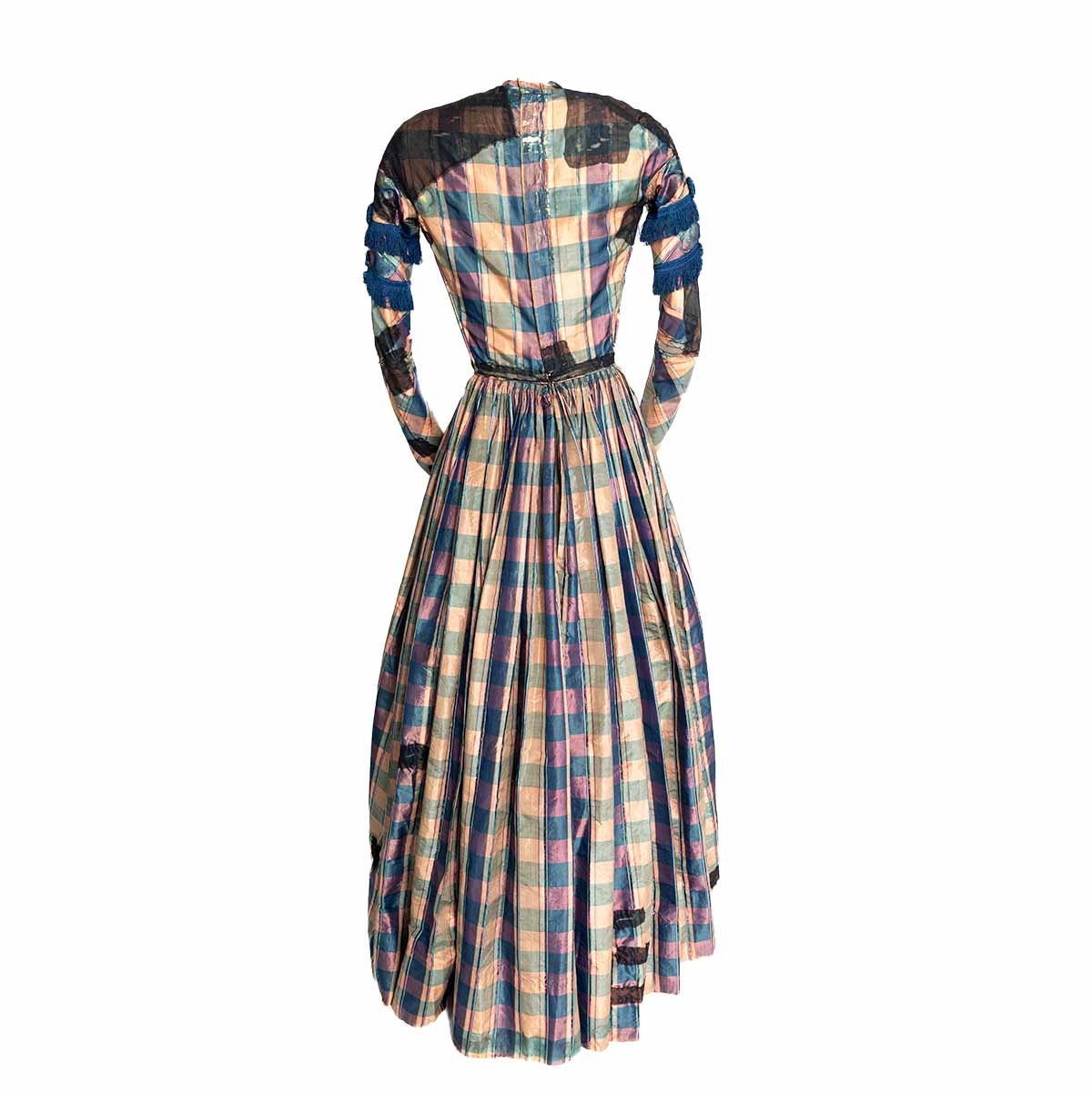
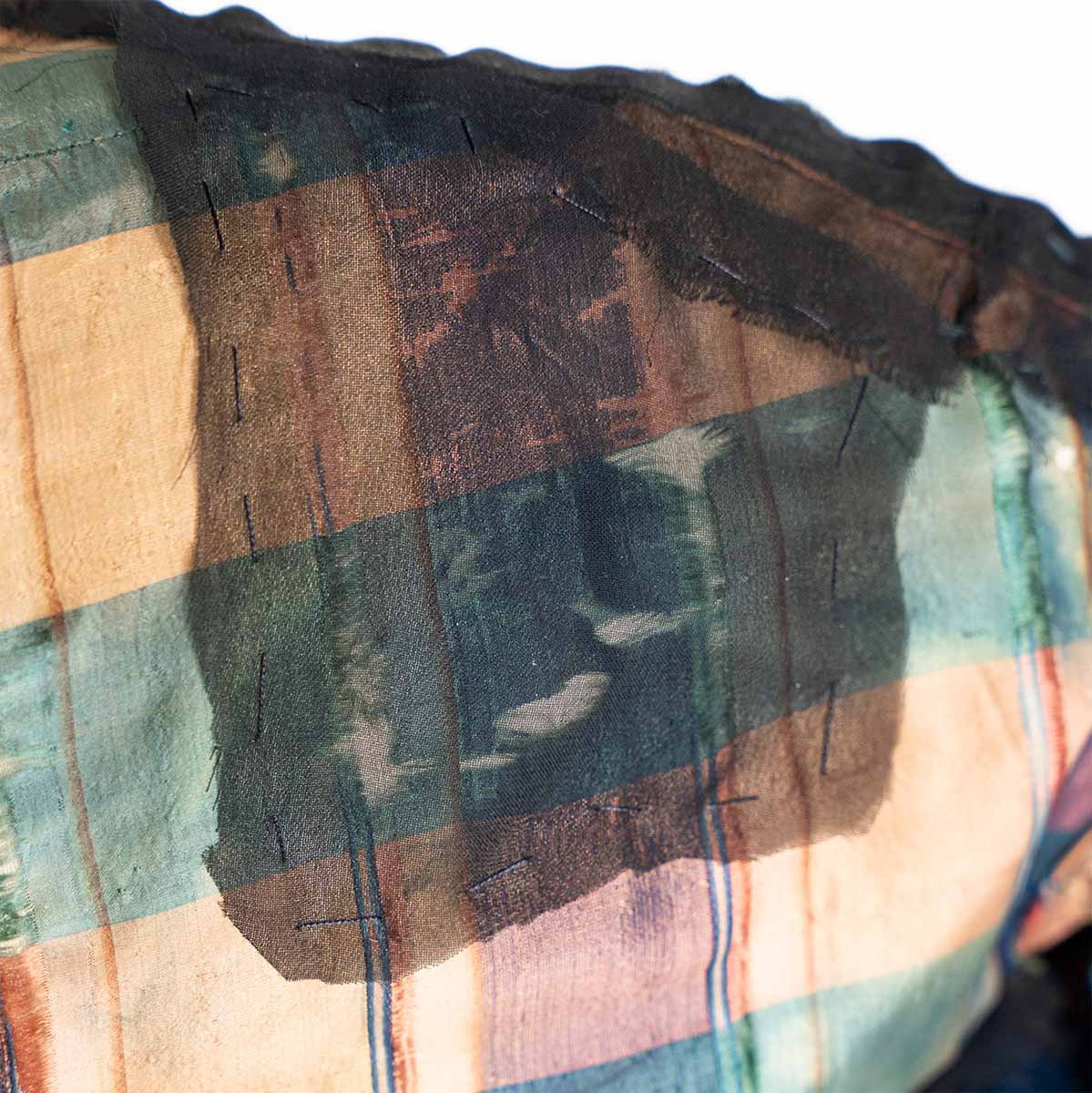
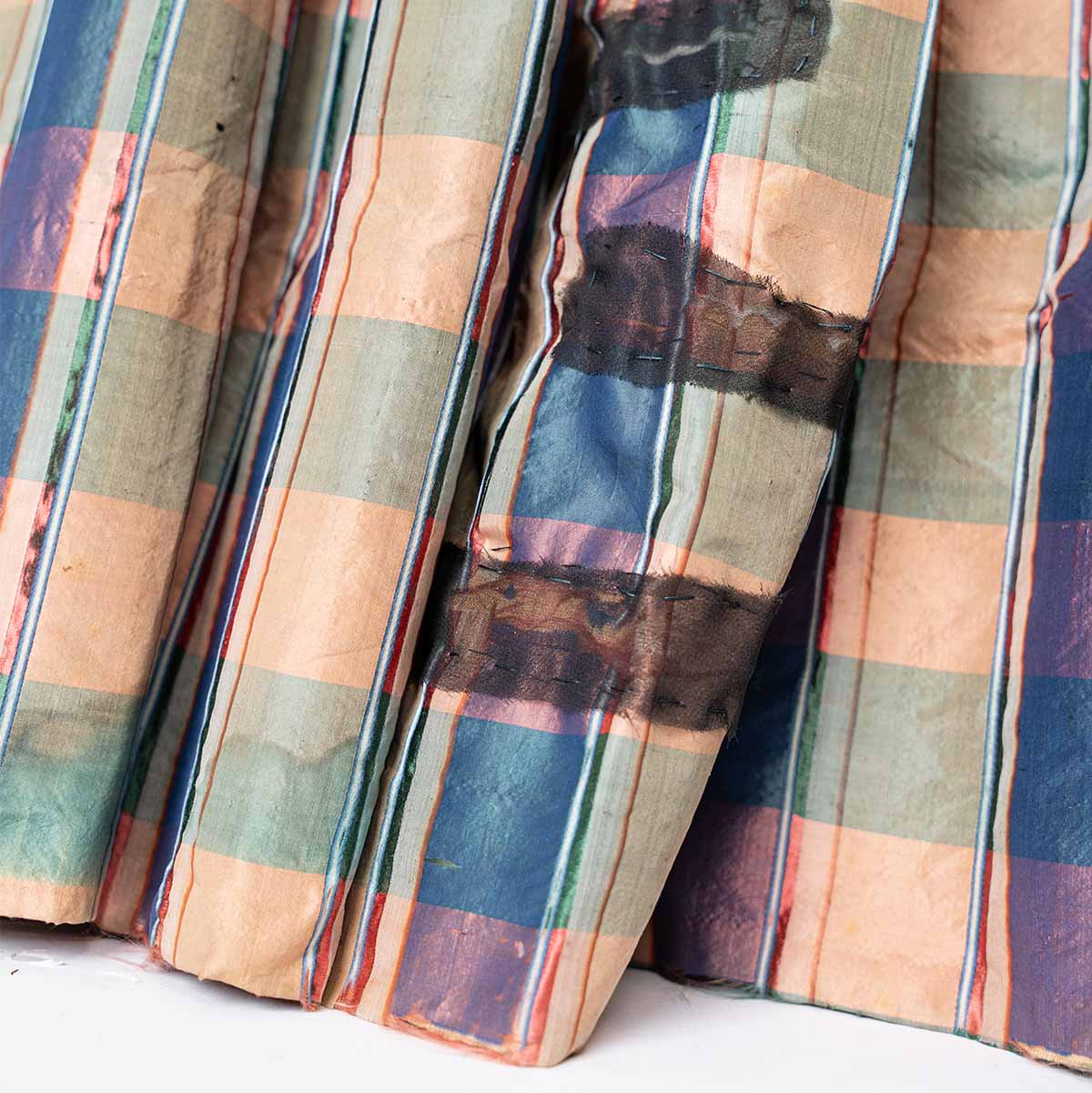
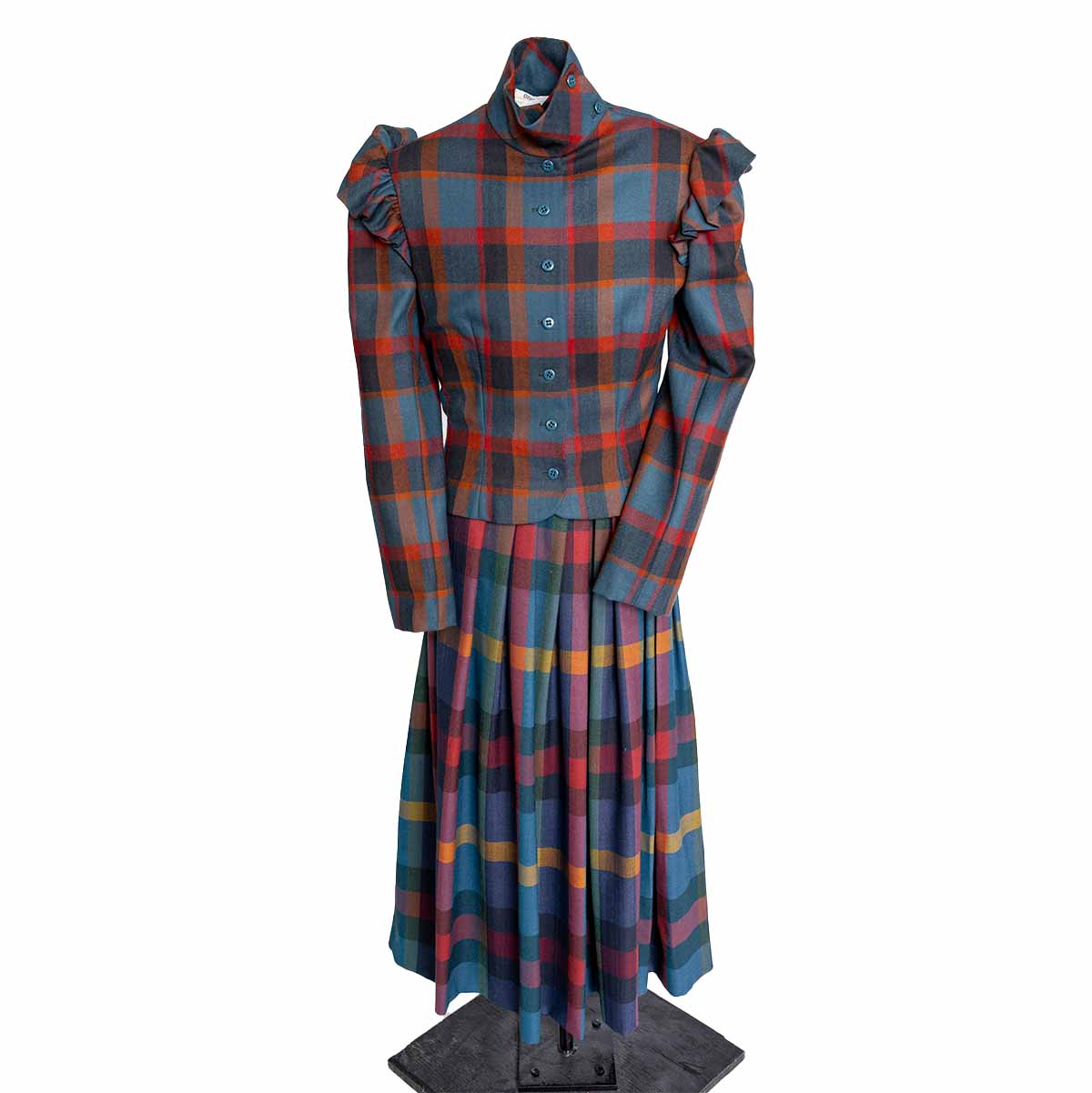
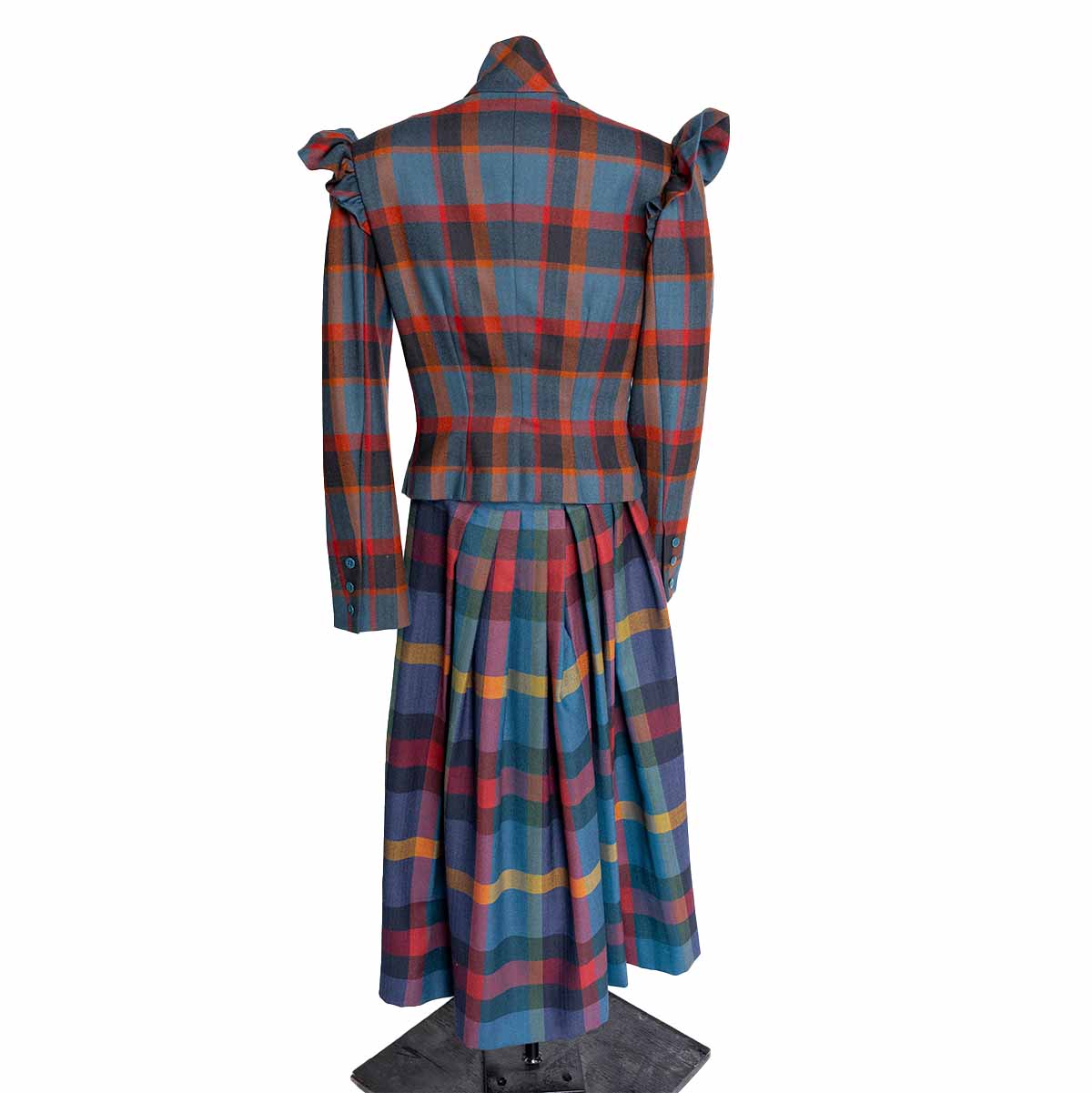
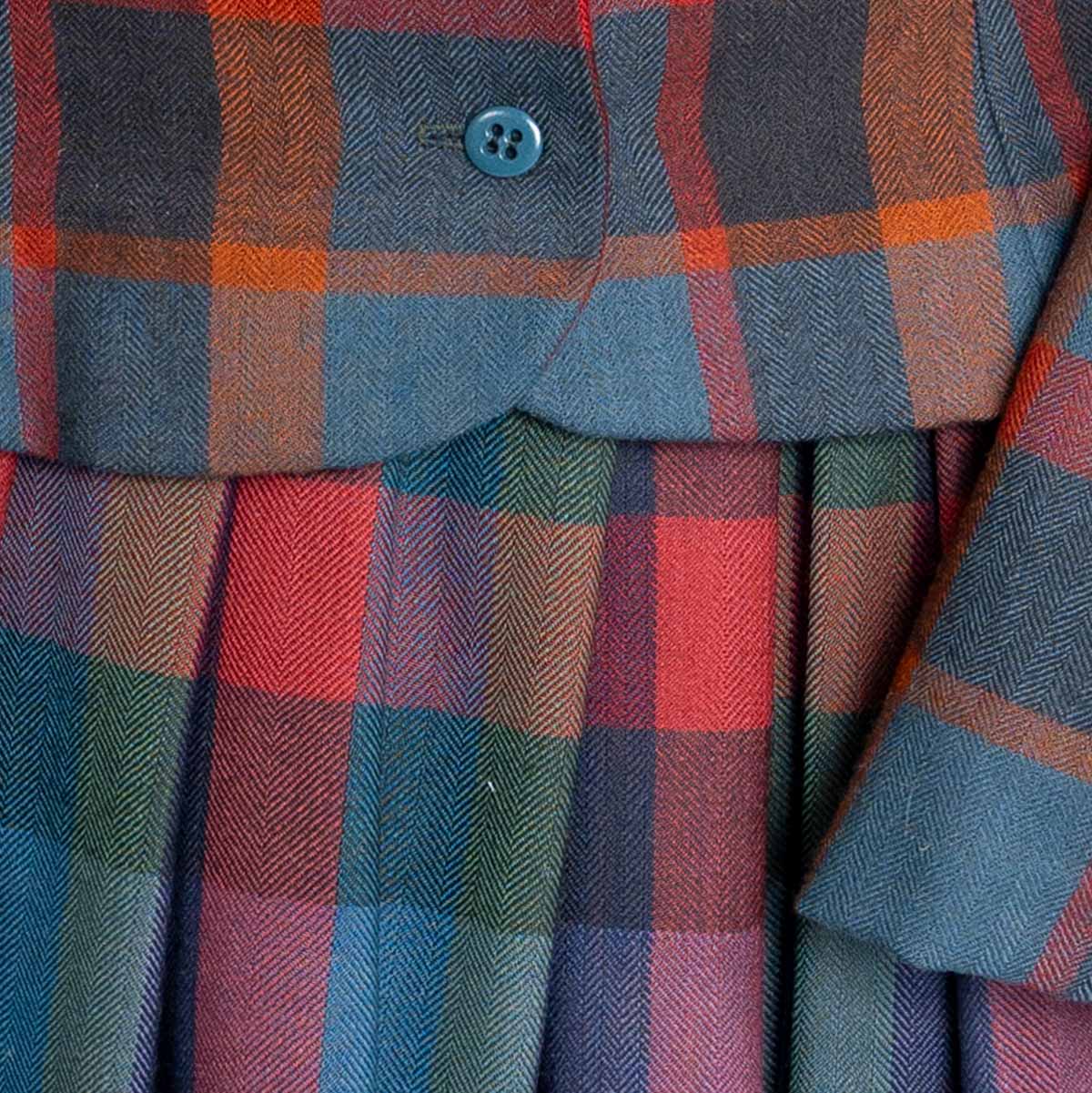
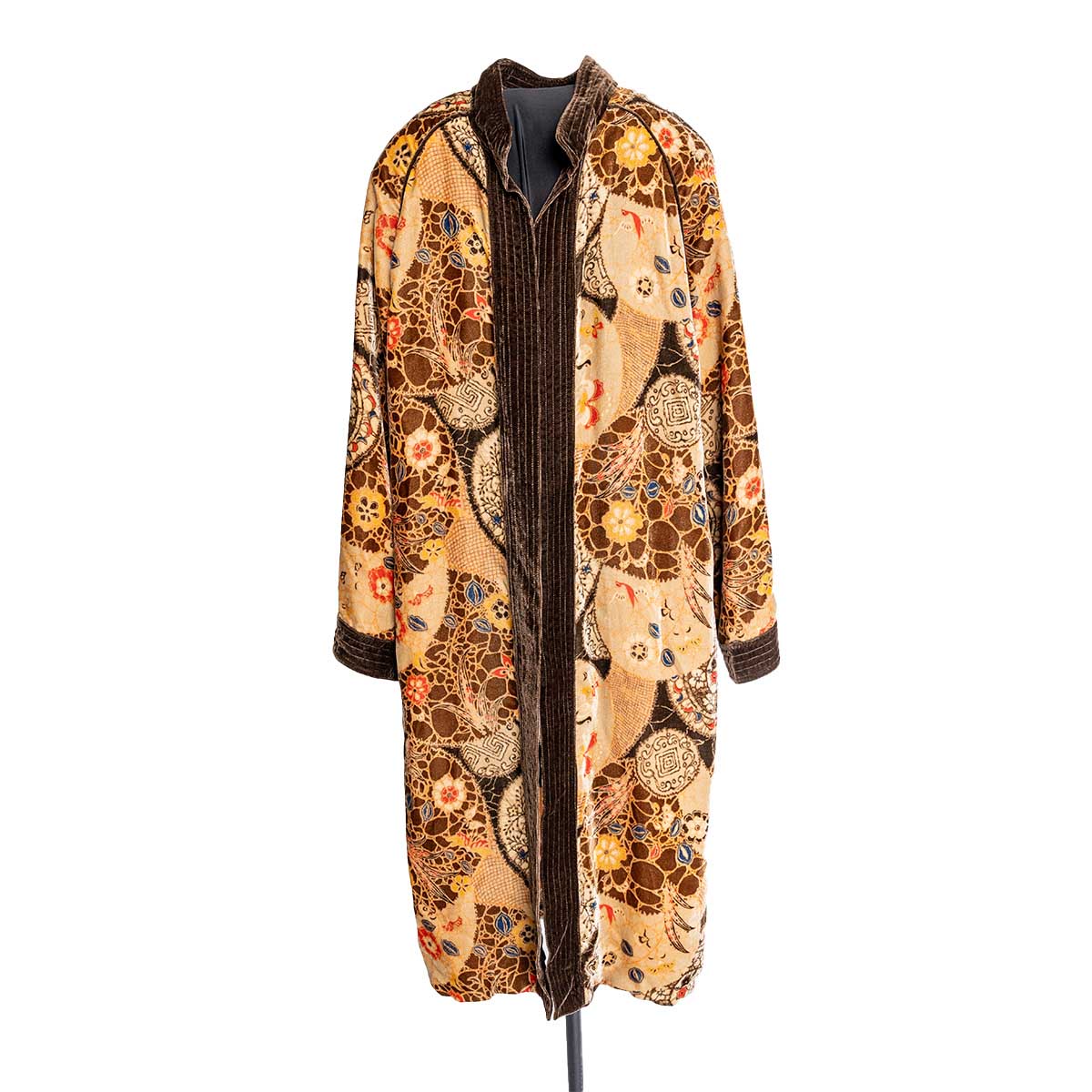
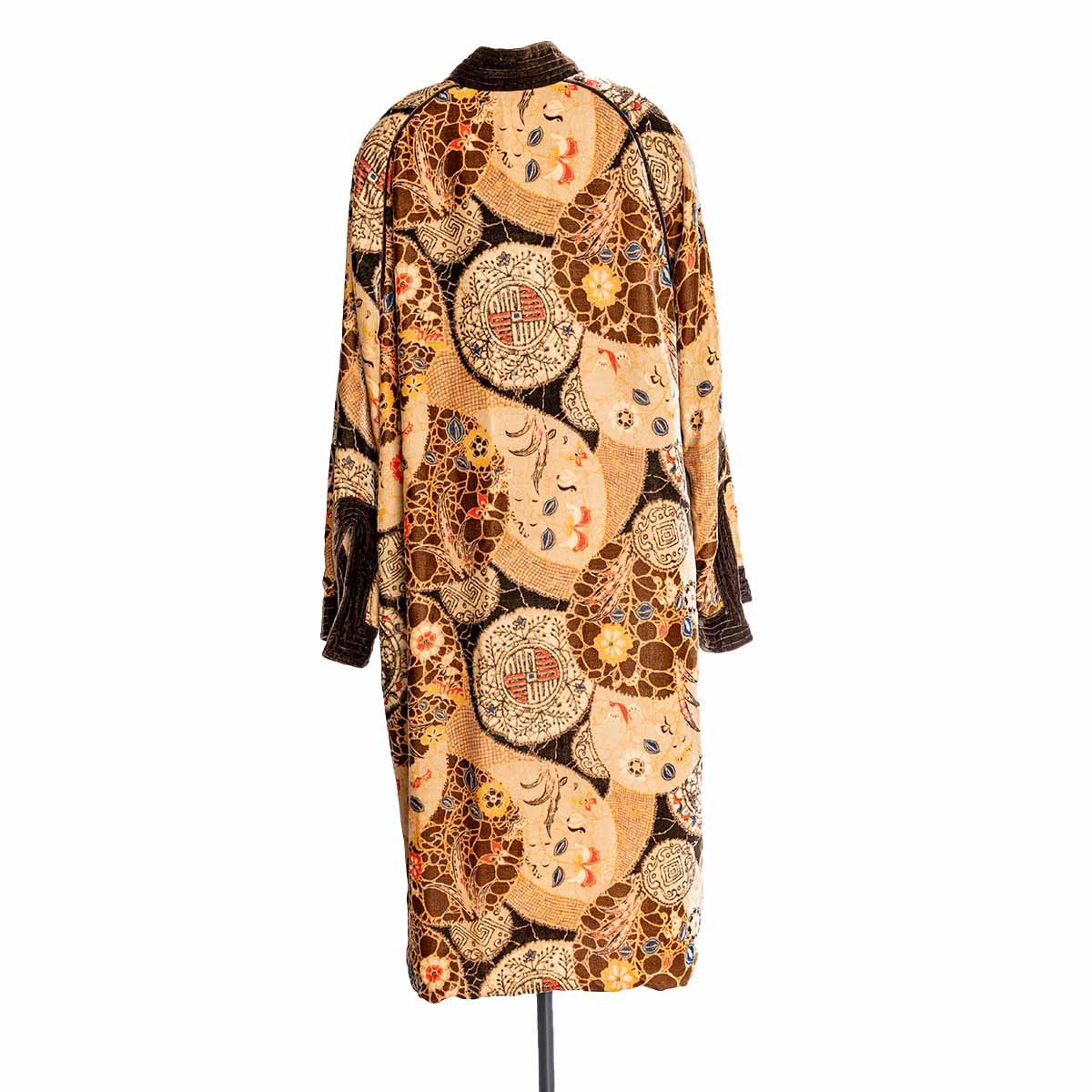
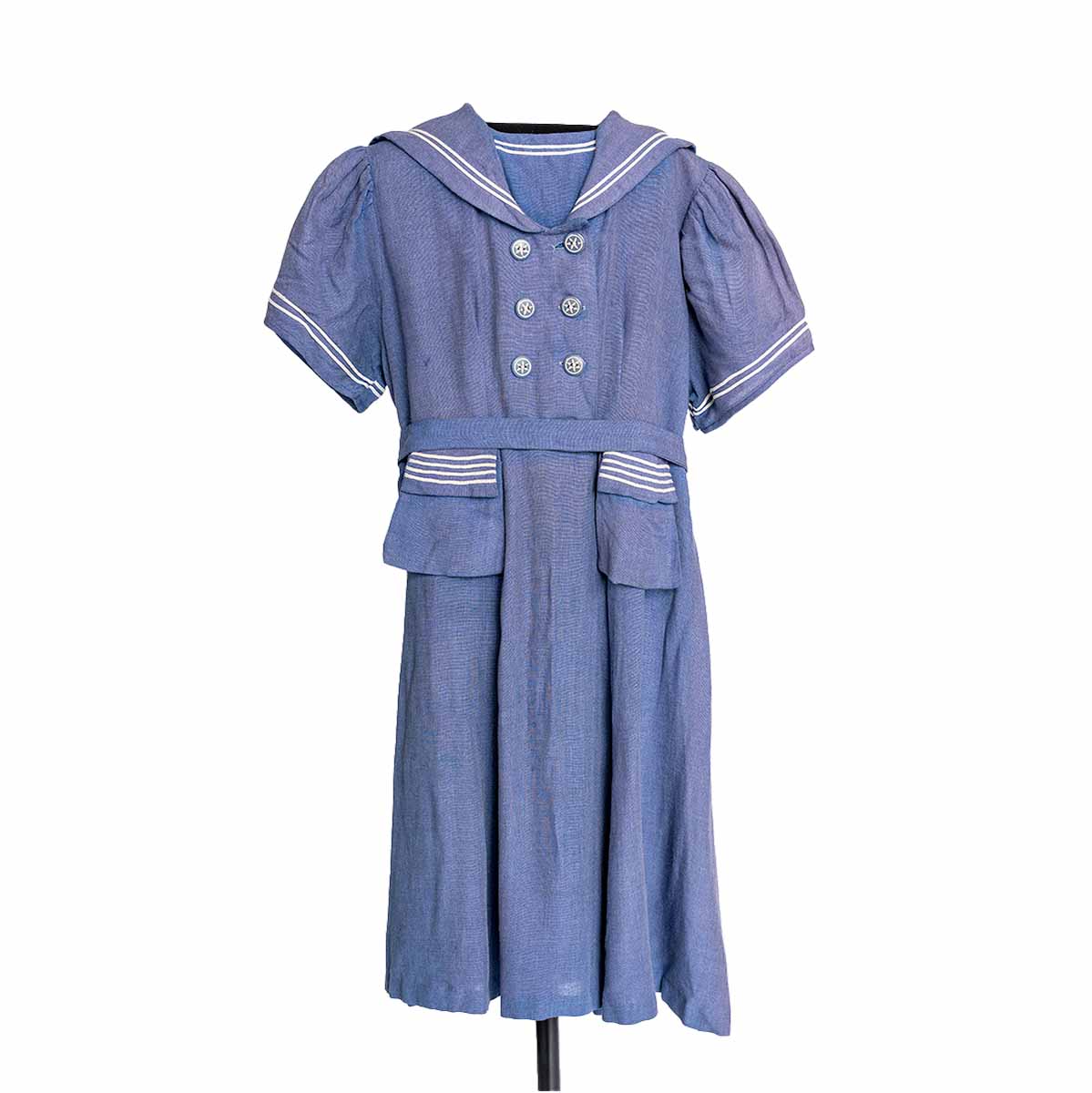
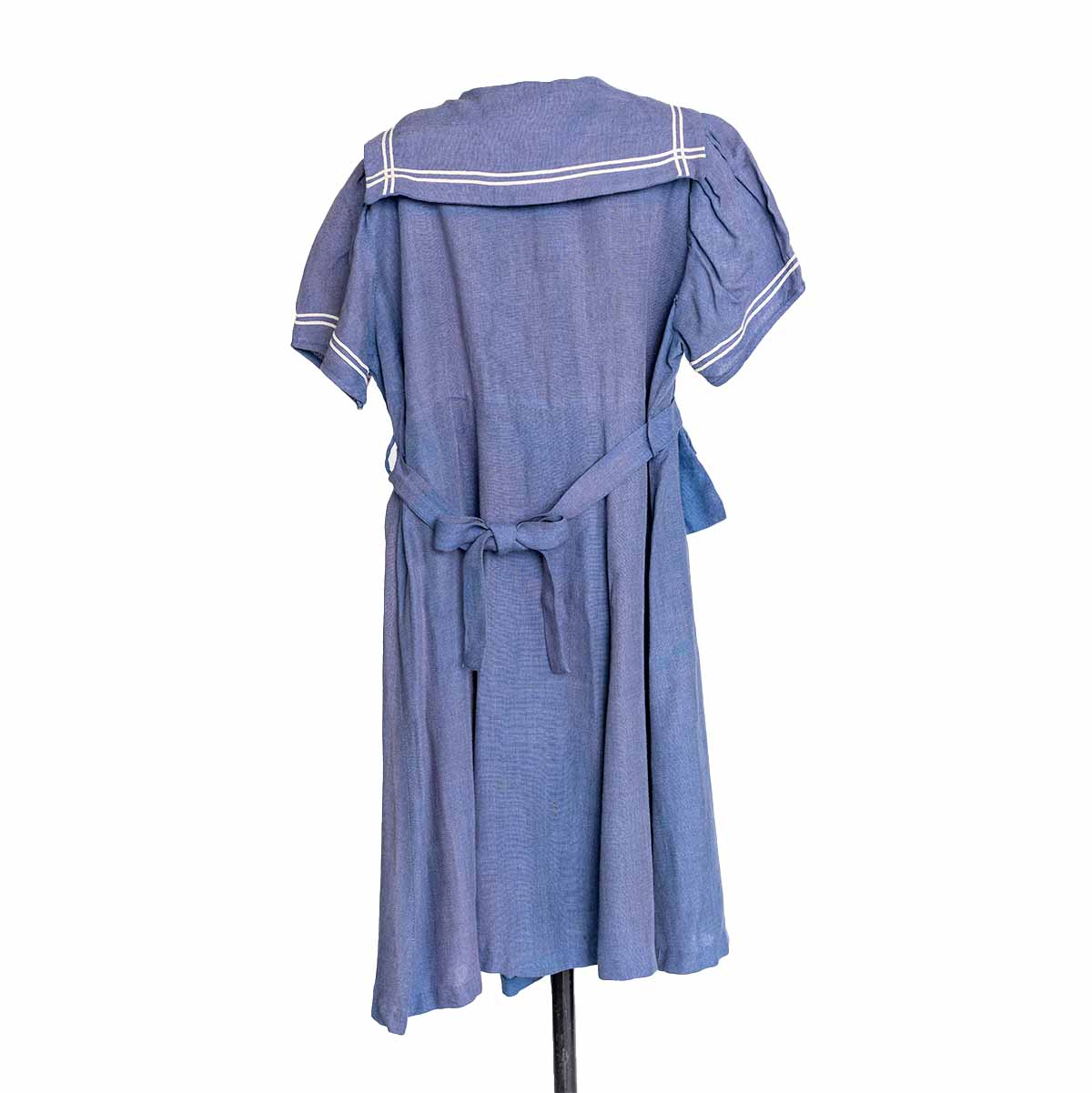
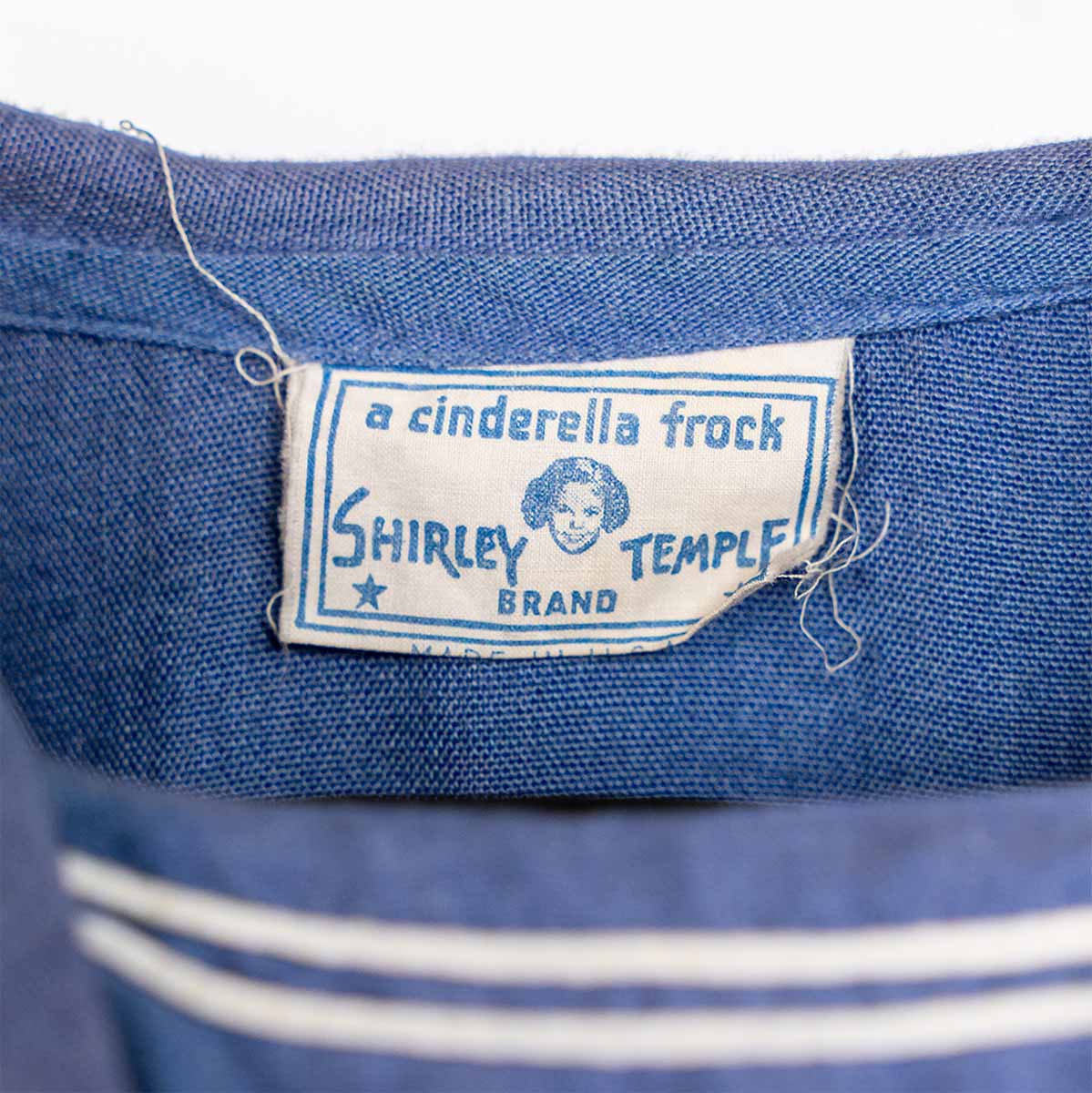
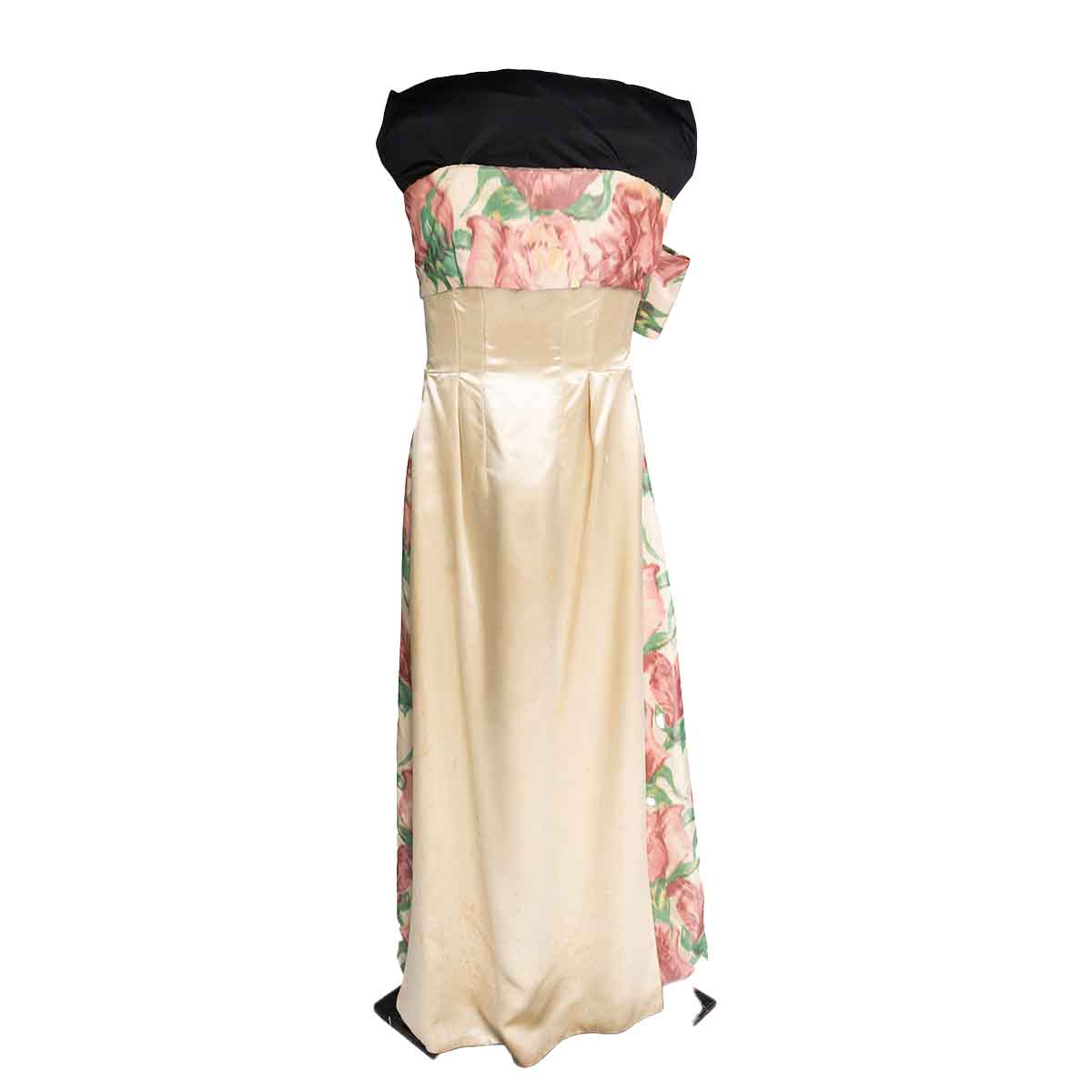

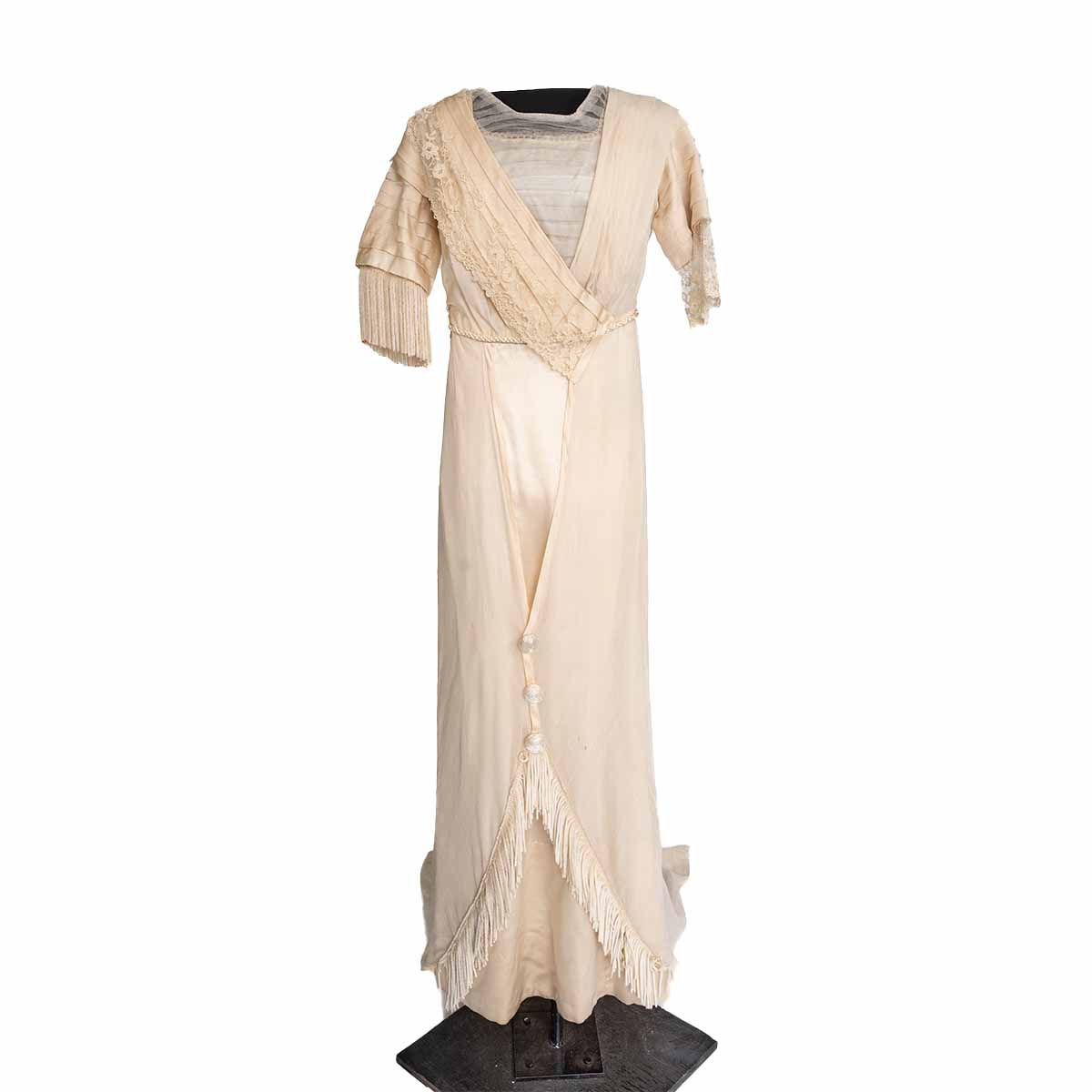
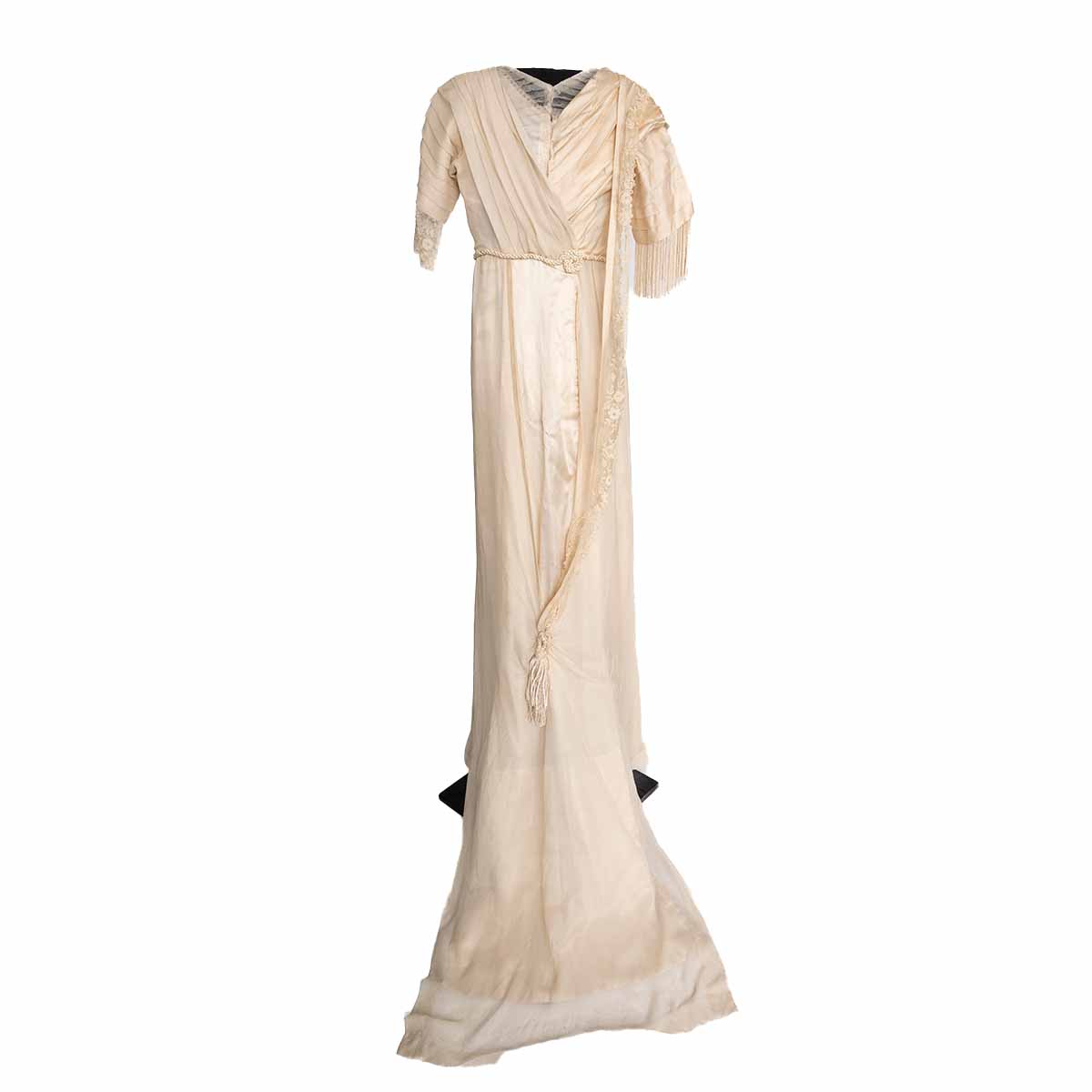
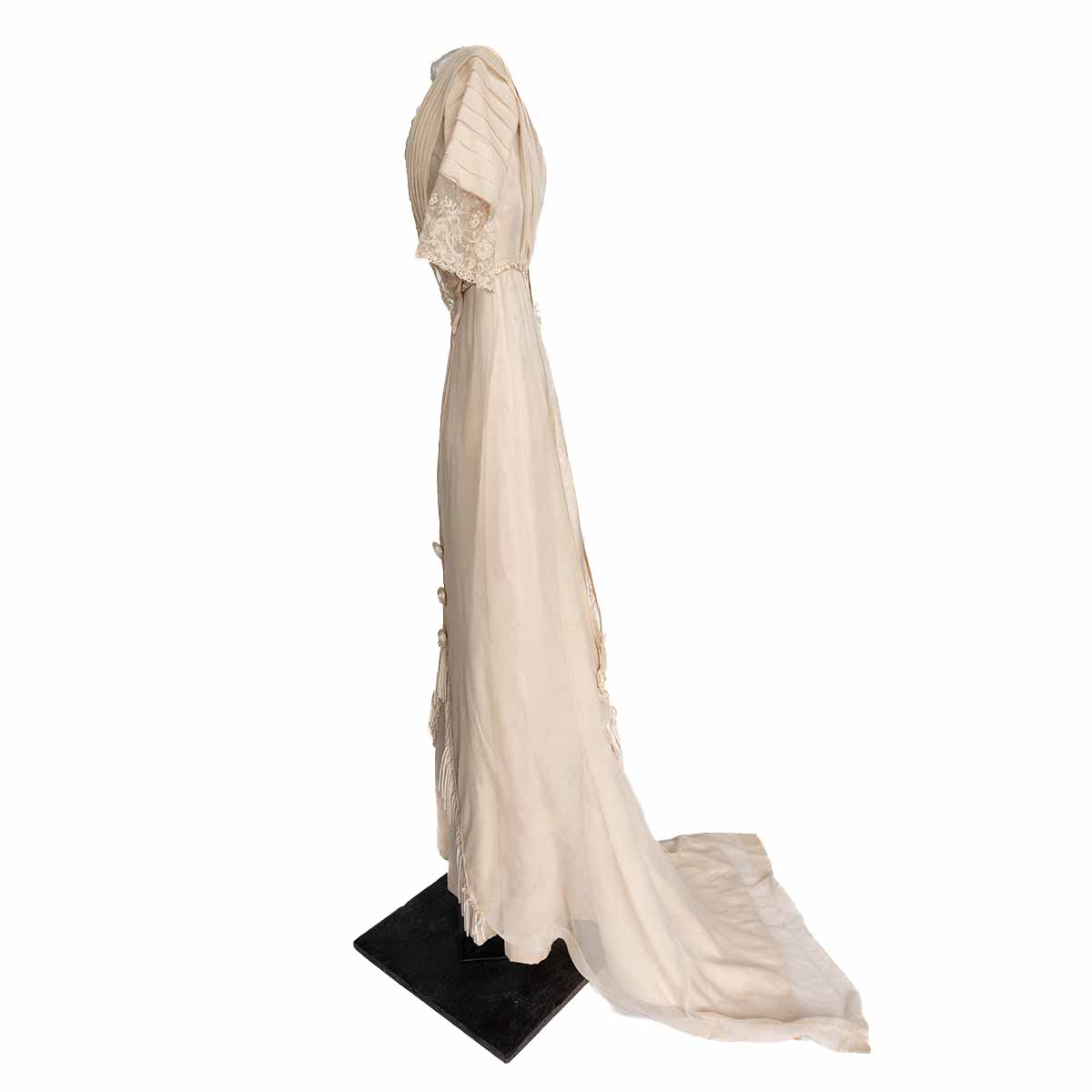
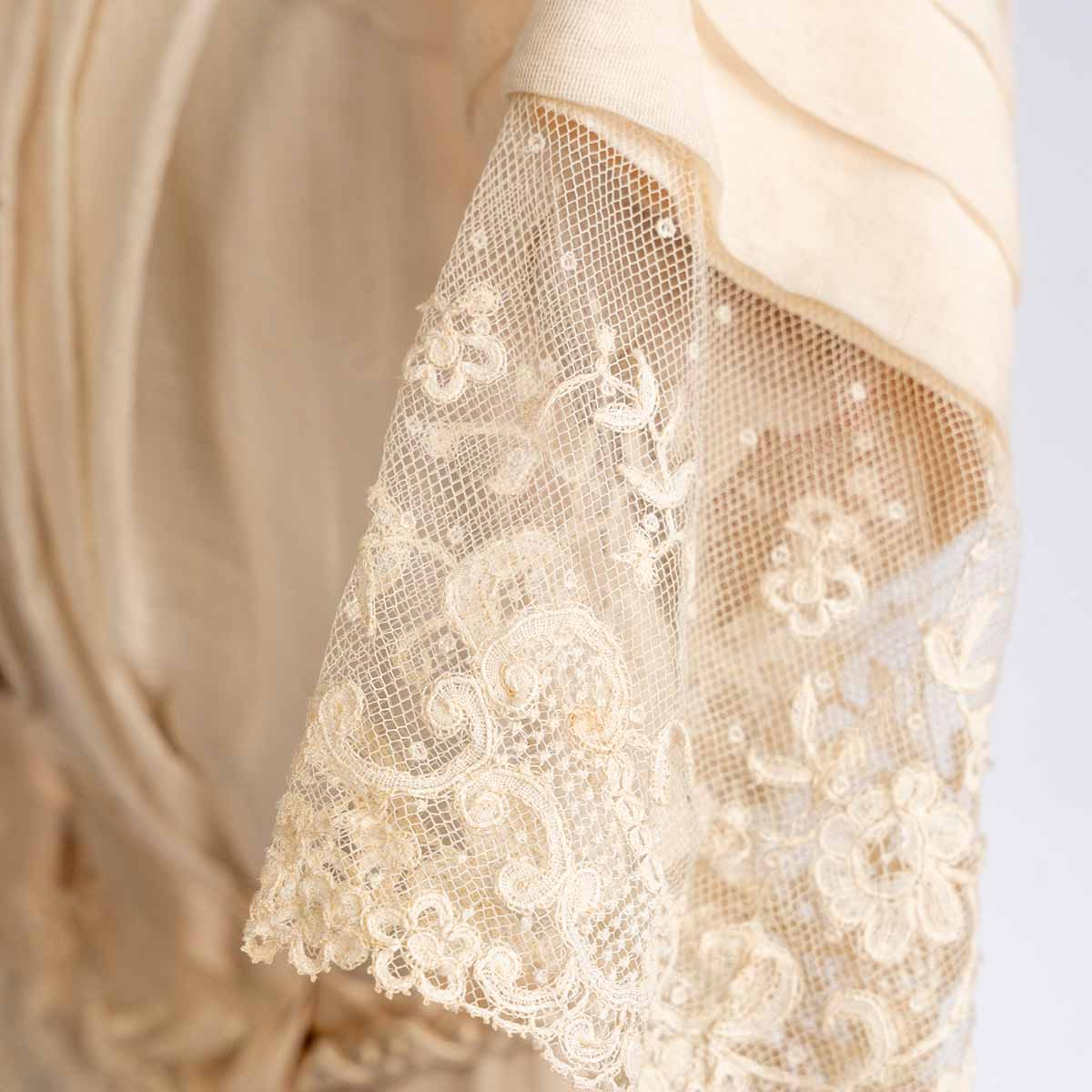

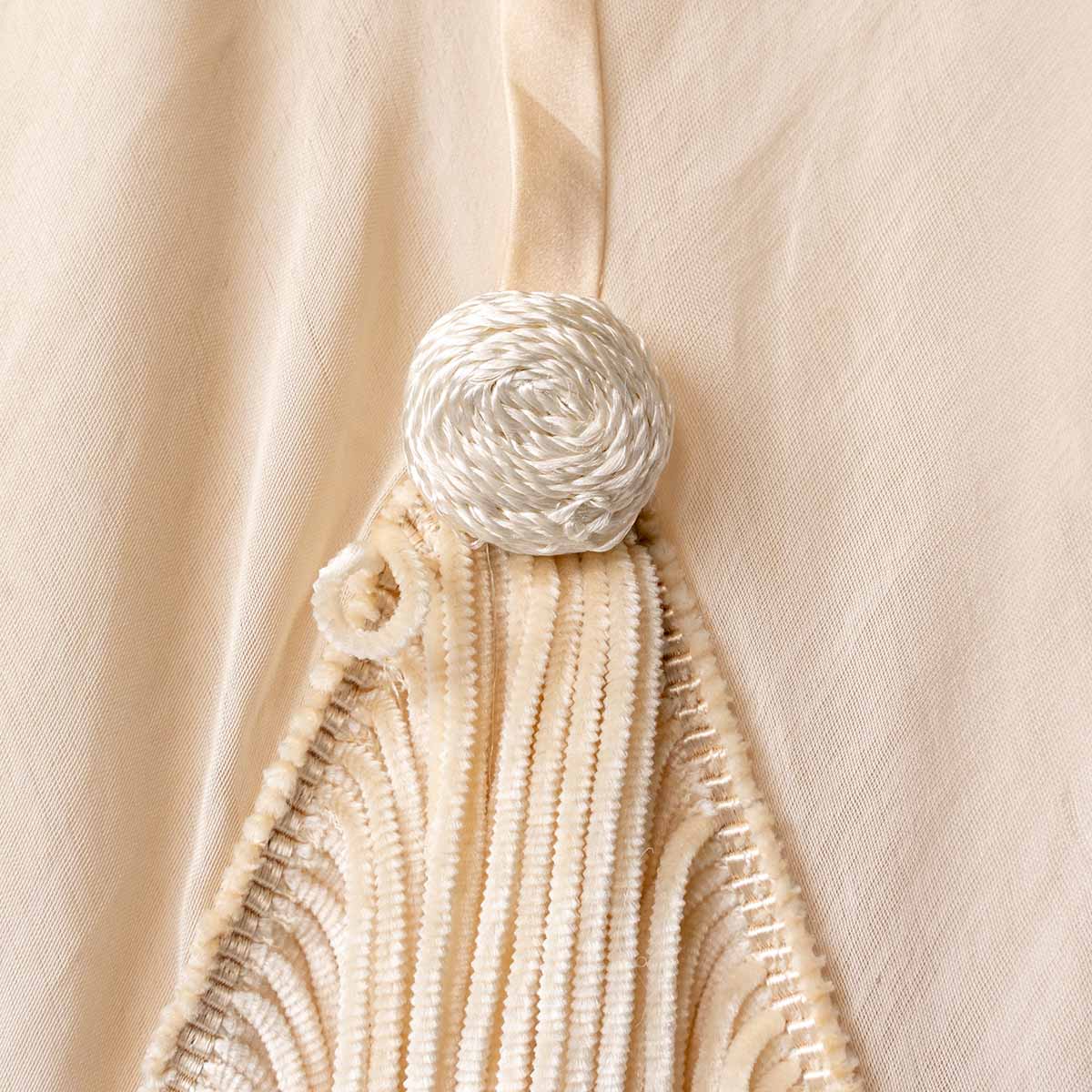
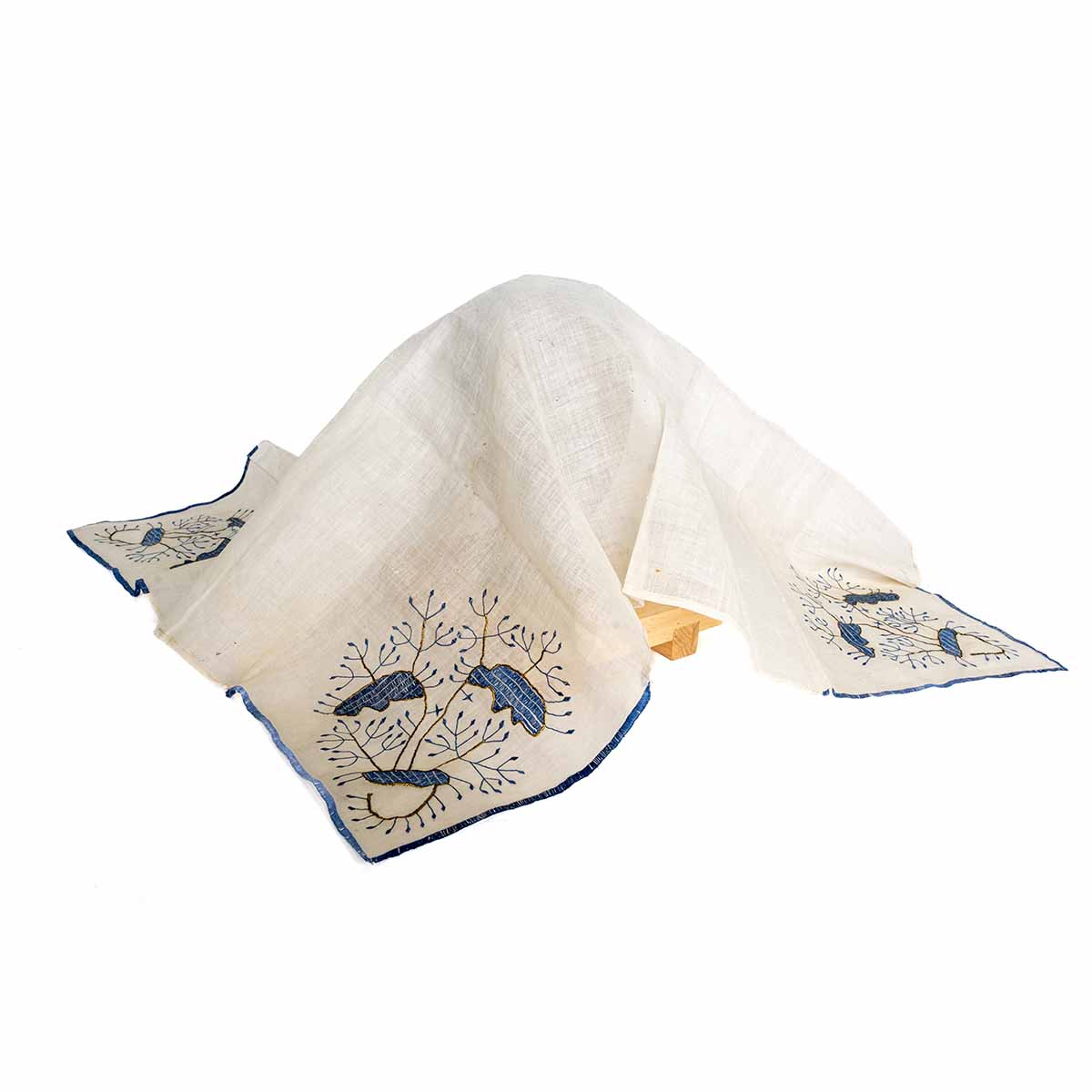
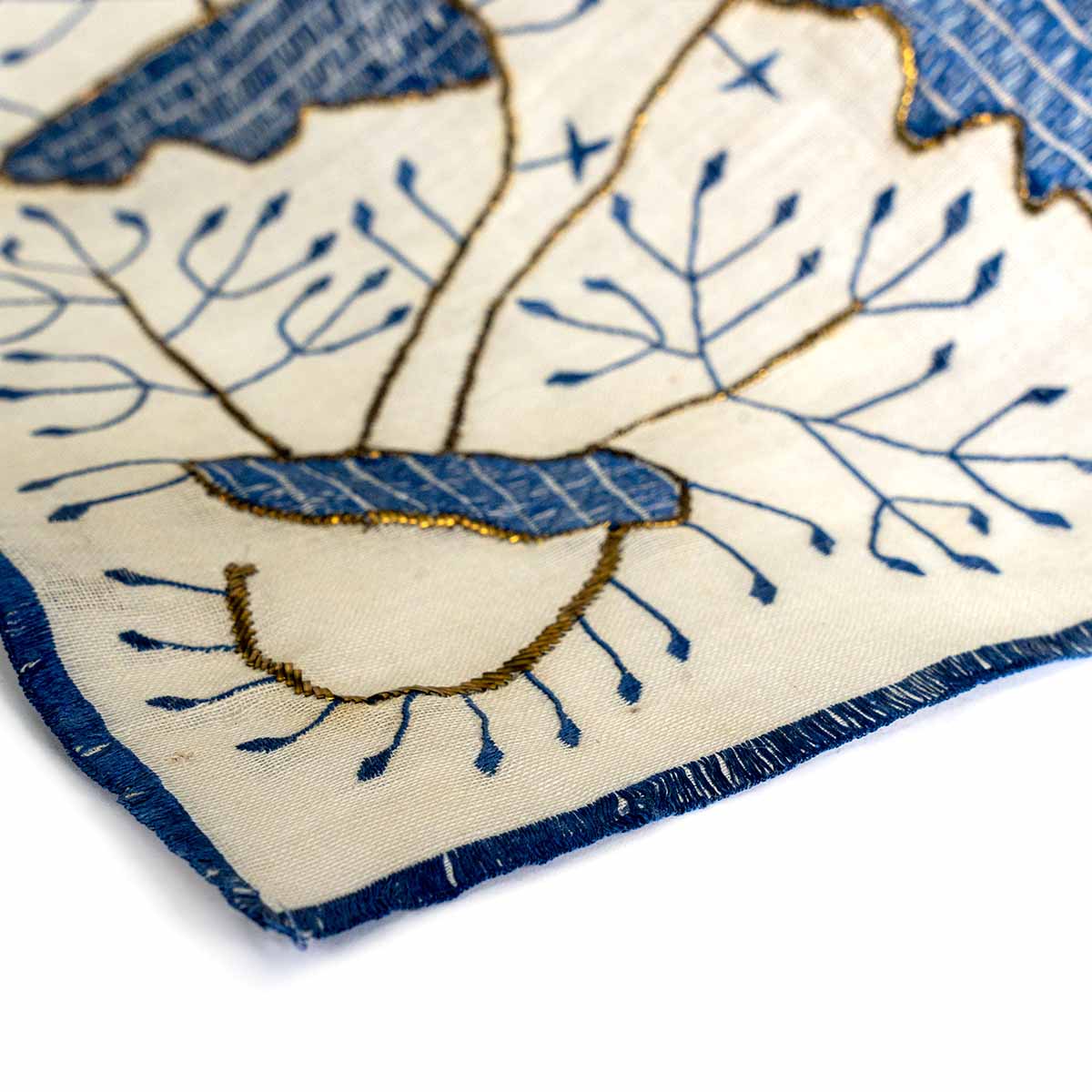
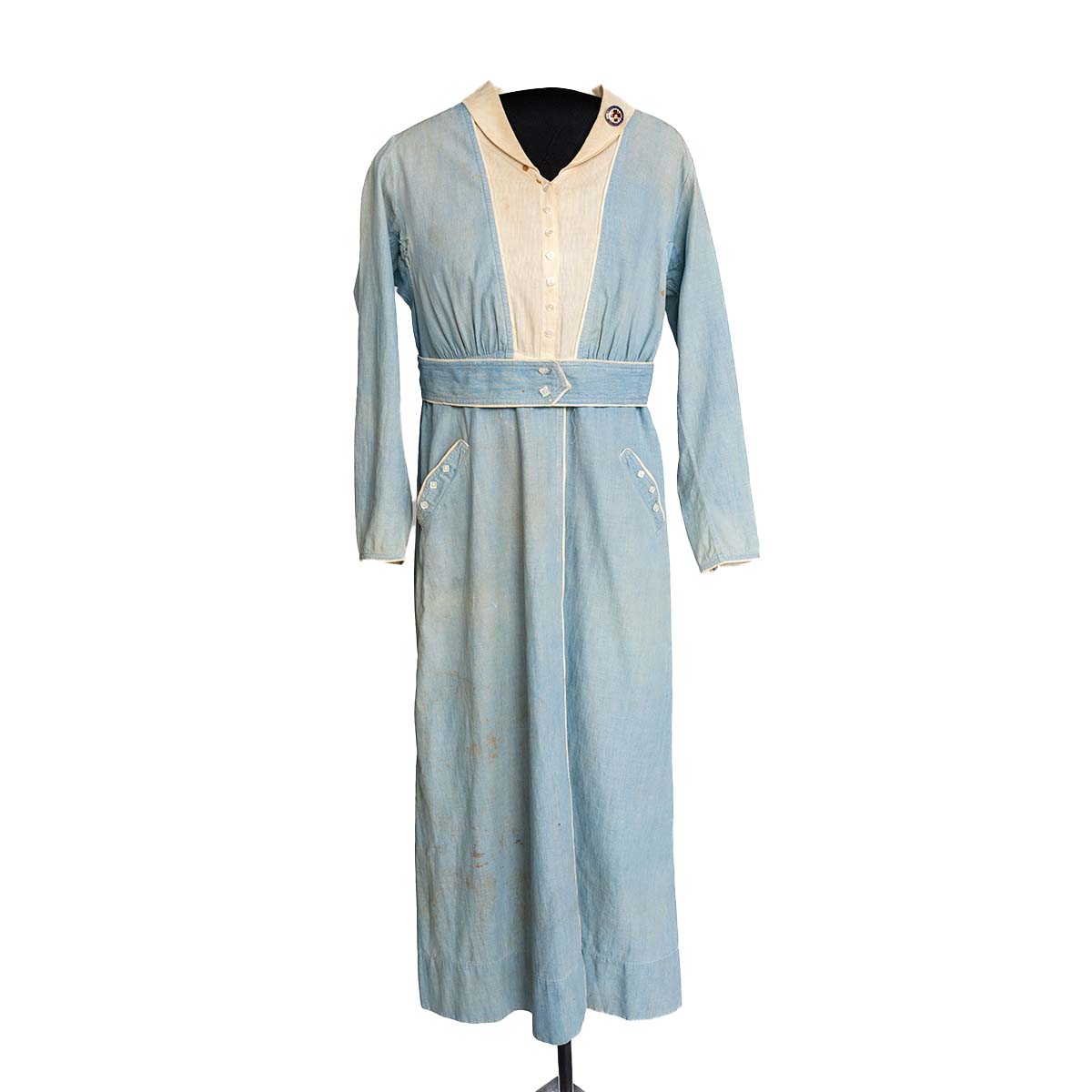
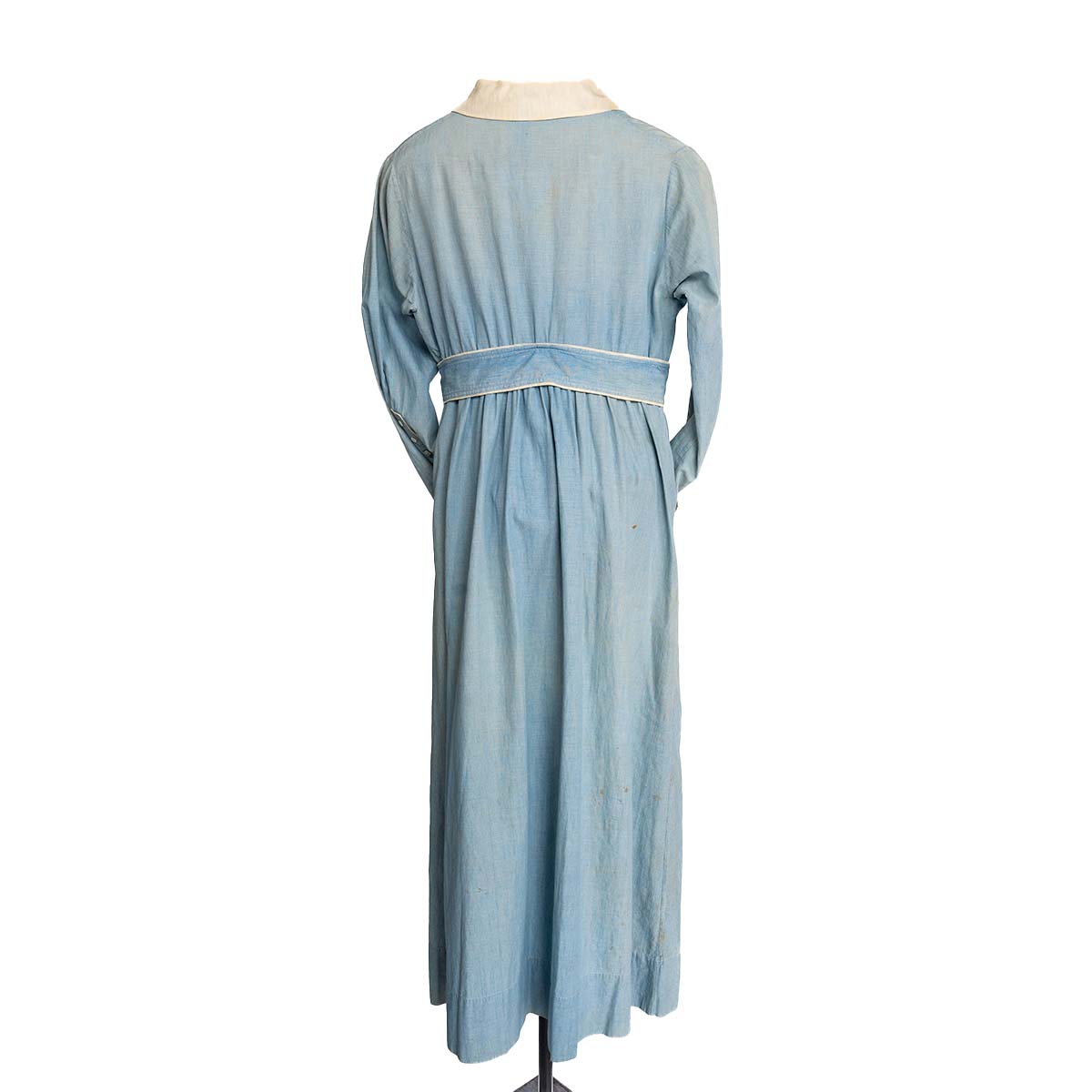
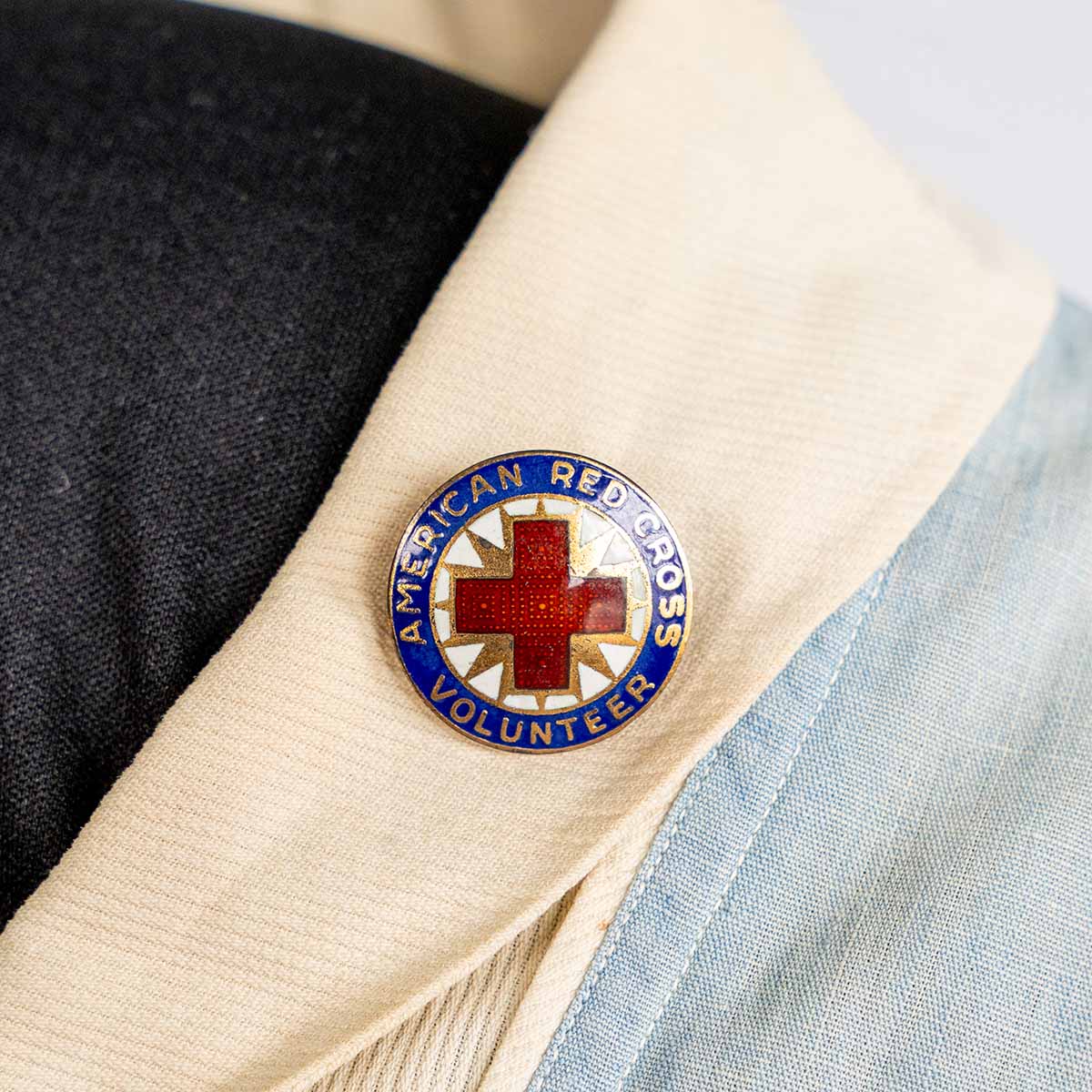

Gifted from Carolyn and Findlay Kiefer. The blue tulle over dress features a heavily beaded floral design. Fiber content of tulle in the 1920s would have been silk, cotton or wool. Glass beads over time the glass would cut through the beading thread and weight of the beads caused distress on the delicate tulle fabric. Conservation repairs have been made indicated by the black shadows on the side of the dress.

Gifted from Carolyn and Findlay Kiefer. The blue tulle over dress features a heavily beaded floral design. Fiber content of tulle in the 1920s would have been silk, cotton or wool. Glass beads over time the glass would cut through the beading thread and weight of the beads caused distress on the delicate tulle fabric. Conservation repairs have been made indicated by the black shadows on the side of the dress.

Gifted by Richard Old from the Paul and Elsie Mann family estate. This 1890s black silk garment is somewhat unusual for the time period. Most women's garments of the late 19th Century were two piece, skirt with matching bodice. This dress is one piece. Examination of the garment shows a fitted bodice on the dress back but a much looser dress front. The front underbodice features a slight upward curve from waistline at side seams to center front. This led collection researchers to speculate that the dress may have been worn during the time of pregnancy.

Gifted by Richard Old from the Paul and Elsie Mann family estate. This 1890s black silk garment is somewhat unusual for the time period. Most women's garments of the late 19th Century were two piece, skirt with matching bodice. This dress is one piece. Examination of the garment shows a fitted bodice on the dress back but a much looser dress front. The front underbodice features a slight upward curve from waistline at side seams to center front. This led collection researchers to speculate that the dress may have been worn during the time of pregnancy.

Gifted by Richard Old from the Paul and Elsie Mann family estate. This 1890s black silk garment is somewhat unusual for the time period. Most women's garments of the late 19th Century were two piece, skirt with matching bodice. This dress is one piece. Examination of the garment shows a fitted bodice on the dress back but a much looser dress front. The front underbodice features a slight upward curve from waistline at side seams to center front. This led collection researchers to speculate that the dress may have been worn during the time of pregnancy.

Gifted by Doody Boiba. This two piece dress features metallic passementerie trim on the bodice front and sleeve edges. The metallic threads appear to be silver and bronze. The skirt was designed to be worn with a bustle. The bustle and upper sleeve shape dates this garment to the very late 1880s to early 1890s.

Gifted by Doody Boiba. This two piece dress features metallic passementerie trim on the bodice front and sleeve edges. The metallic threads appear to be silver and bronze. The skirt was designed to be worn with a bustle. The bustle and upper sleeve shape dates this garment to the very late 1880s to early 1890s.

Gifted by Doody Boiba. This two piece dress features metallic passementerie trim on the bodice front and sleeve edges. The metallic threads appear to be silver and bronze. The skirt was designed to be worn with a bustle. The bustle and upper sleeve shape dates this garment to the very late 1880s to early 1890s.

Gifted by Doody Boiba. This two piece dress features metallic passementerie trim on the bodice front and sleeve edges. The metallic threads appear to be silver and bronze. The skirt was designed to be worn with a bustle. The bustle and upper sleeve shape dates this garment to the very late 1880s to early 1890s.

This bias cut dress came to the collection from the U of I Theatre department. The bias cut was a popular style for women's wear during the 1930s. A garment cut on the bias can result in a large amount of cutting waste. However, garment makers of the time utilized cutting scraps to piece together beautifully draped functional garments.

Gifted by Doris Mix. Mother Hubbard, Sack dress, Wrapper are just a few of the names for this 19th Century dress. It is often associated with prairie or frontier settlers. What we do know about this dress it was worn by Mrs. Margaret Happonstahl while traveling on the Oregon Trail.

Gifted by Doris Mix. Mother Hubbard, Sack dress, Wrapper are just a few of the names for this 19th Century dress. It is often associated with prairie or frontier settlers. What we do know about this dress it was worn by Mrs. Margaret Happonstahl while traveling on the Oregon Trail.

Gifted by Roderick Sprague when transferred from the U of I Museum in 1989. Historic clothing collections generally contain women's, men's and children's garments. This early 1900s child's dress is one of many found in the LOHCC.

Gifted by Roderick Sprague when transferred from the U of I Museum in 1989. Historic clothing collections generally contain women's, men's and children's garments. This early 1900s child's dress is one of many found in the LOHCC.

Gifted by John and Bonnie Connell. S Annette Bowman served as one of the first two women faculty members at the University of Idaho. This two piece dress is one of two garments owned and worn by Miss Bowman in the collection.

Gifted by John and Bonnie Connell. S Annette Bowman served as one of the first two women faculty members at the University of Idaho. This two piece dress is one of two garments owned and worn by Miss Bowman in the collection.

Gifted by William (Bill) Rember. This coat represents a part of Idaho history. Trapping and hunting have a long history in the state. The beaver were trapped by Bill Rember's father. The elder Mr. Rember had the pelts made into a coat for his wife. The coat was manufactured in Idaho Falls.

Gifted by William (Bill) Rember. This coat represents a part of Idaho history. Trapping and hunting have a long history in the state. The beaver were trapped by Bill Rember's father. The elder Mr. Rember had the pelts made into a coat for his wife. The coat was manufactured in Idaho Falls.

Unknown gift. The slightly raised waist, high collar with design detail of the bodice clearly mark this garment as early 20th century.

Unknown gift. The slightly raised waist, high collar with design detail of the bodice clearly mark this garment as early 20th century.

Unknown gift. The slightly raised waist, high collar with design detail of the bodice clearly mark this garment as early 20th century.

Gifted by John and Bonnie Connell. This straw hat also belonged to S Annett Bowman. Miss Bowman was one of the Silver and Gold Book on display in the university's Presidents office. Perhaps Miss Bowman wore the hat with her two piece floral print dress of the same period.

Gifted by John and Bonnie Connell. This straw hat also belonged to S Annett Bowman. Miss Bowman was one of the Silver and Gold Book on display in the university's Presidents office. Perhaps Miss Bowman wore the hat with her two piece floral print dress of the same period.

Gifted by Kathleen Old. The Leila Old Historic Costume Collection prides itself on holdings of garments of the working class. This dress represents one of many dresses in the collection classified as a "house dress." One of the unique features of the dress is the center front metal zipper closure.

Gifted by Kathleen Old. The Leila Old Historic Costume Collection prides itself on holdings of garments of the working class. This dress represents one of many dresses in the collection classified as a "house dress." One of the unique features of the dress is the center front metal zipper closure.

Betty Leslie gifted this men's leather jacket to the collection in 1994. Her father, from Massachusetts, attended the University of Idaho graduating in 1937 with his degree in forestry. The I tree and Idaho on the Jacket back pay tribute to Idaho's vast forests and timber industry.

Betty Leslie gifted this men's leather jacket to the collection in 1994. Her father, from Massachusetts, attended the University of Idaho graduating in 1937 with his degree in forestry. The I tree and Idaho on the Jacket back pay tribute to Idaho's vast forests and timber industry.

Gifted by Dave Doane. This unique pair of boots feature a slight outward curve of the toe. Some have identified them as sidesaddle boots. However these are men's boots manufactured by the Stetson Shoe Company dating from 1910-1920. We located an identical pair in the Metropolitan Museum of Art Costume Institute, donated the same year we received our pair, 2001.

Gifted by Dave Doane. This unique pair of boots feature a slight outward curve of the toe. Some have identified them as sidesaddle boots. However these are men's boots manufactured by the Stetson Shoe Company dating from 1910-1920. We located an identical pair in the Metropolitan Museum of Art Costume Institute, donated the same year we received our pair, 2001.

Gifted by Dave Doane. This unique pair of boots feature a slight outward curve of the toe. Some have identified them as sidesaddle boots. However these are men's boots manufactured by the Stetson Shoe Company dating from 1910-1920. We located an identical pair in the Metropolitan Museum of Art Costume Institute, donated the same year we received our pair, 2001.

Our collection contains many items where the individual gifting the item is unknown. This 1930s silk velvet evening gown is one of the many. The bias cut gown features a self fabric flower on the bodice front. Our records indicate a date of 1920 but the style indicates 1930s.

Our collection contains many items where the individual gifting the item is unknown. This 1930s silk velvet evening gown is one of the many. The bias cut gown features a self fabric flower on the bodice front. Our records indicate a date of 1920 but the style indicates 1930s.

Gifted from Maurice Johnson. This pair of 1950s overalls pay tribute to Idaho agriculture. Their appearance indicates they were well worn. Like the day dresses in our collection these overalls are indeed a collection treasure.

Gifted from Maurice Johnson. This pair of 1950s overalls pay tribute to Idaho agriculture. Their appearance indicates they were well worn. Like the day dresses in our collection these overalls are indeed a collection treasure.

Gifted from Maurice Johnson. This pair of 1950s overalls pay tribute to Idaho agriculture. Their appearance indicates they were well worn. Like the day dresses in our collection these overalls are indeed a collection treasure.

Gifted by John Foltz, former Dean of the College of Agricultural and Life Sciences. This gown was worn by Dr. Foltz grandmother while attending Dennison University in Ohio.

Gifted by John Foltz, former Dean of the College of Agricultural and Life Sciences. This gown was worn by Dr. Foltz grandmother while attending Dennison University in Ohio.

Gift from Clarise Sampson. This pineapple (pina) cloth ensemble was purchased in the Philippines in 1910. Pina fabric is made by weaving the fibers of the leaves of the Red Spanish pineapple plant. The fabric experienced its hey day in the late 18th and 19th Centuries.

Gift from Clarise Sampson. This pineapple (pina) cloth ensemble was purchased in the Philippines in 1910. Pina fabric is made by weaving the fibers of the leaves of the Red Spanish pineapple plant. The fabric experienced its hey day in the late 18th and 19th Centuries.

Gift from Clarise Sampson. This pineapple (pina) cloth ensemble was purchased in the Philippines in 1910. Pina fabric is made by weaving the fibers of the leaves of the Red Spanish pineapple plant. The fabric experienced its hey day in the late 18th and 19th Centuries.

Transfer to U of I LOHCC from Washing State University collection. This dress represents the general style of women's fashions from the middle of the 19th century. There are several places on the dress with shattering (horizontal or vertical tears) which indicate where metallic salts, used to add weight to silk fibers, have cut through the fibers. The black patches seen on the garment demonstrate conservation repairs.

Transfer to U of I LOHCC from Washing State University collection. This dress represents the general style of women's fashions from the middle of the 19th century. There are several places on the dress with shattering (horizontal or vertical tears) which indicate where metallic salts, used to add weight to silk fibers, have cut through the fibers. The black patches seen on the garment demonstrate conservation repairs.

Transfer to U of I LOHCC from Washing State University collection. This dress represents the general style of women's fashions from the middle of the 19th century. There are several places on the dress with shattering (horizontal or vertical tears) which indicate where metallic salts, used to add weight to silk fibers, have cut through the fibers. The black patches seen on the garment demonstrate conservation repairs.

Transfer to U of I LOHCC from Washing State University collection. This dress represents the general style of women's fashions from the middle of the 19th century. There are several places on the dress with shattering (horizontal or vertical tears) which indicate where metallic salts, used to add weight to silk fibers, have cut through the fibers. The black patches seen on the garment demonstrate conservation repairs.

Perry Ellis launched his first collection in 1976.His clothing was designed with "real life" in mind, consisting of sports wear focusing on mix and match garments. This plaid bodice and skirt was from a line in the 1980s.

Perry Ellis launched his first collection in 1976.His clothing was designed with "real life" in mind, consisting of sports wear focusing on mix and match garments. This plaid bodice and skirt was from a line in the 1980s.

Perry Ellis launched his first collection in 1976.His clothing was designed with "real life" in mind, consisting of sports wear focusing on mix and match garments. This plaid bodice and skirt was from a line in the 1980s.

Gifted by Belle Sweet. Belle Sweet was the University of Idaho's first professionally trained librarian. Sweet began rebuilding the library's collection after it was destroyed in the March 1906 Administration Building fire. The collection holdings includes several items donated by Belle Sweet.

Gifted by Belle Sweet. Belle Sweet was the University of Idaho's first professionally trained librarian. Sweet began rebuilding the library's collection after it was destroyed in the March 1906 Administration Building fire. The collection holdings includes several items donated by Belle Sweet.

Gifted by Jean Woods. Shirley Temple (Black) top Hollywood top box office child actress from 1935-1938. Sears and Roebuck carried the license for Shirley Temple clothing in the late 1930s. This dress is one of five Shirley Temple garments in the LOHCC

Gifted by Jean Woods. Shirley Temple (Black) top Hollywood top box office child actress from 1935-1938. Sears and Roebuck carried the license for Shirley Temple clothing in the late 1930s. This dress is one of five Shirley Temple garments in the LOHCC

Gifted by Jean Woods. Shirley Temple (Black) top Hollywood top box office child actress from 1935-1938. Sears and Roebuck carried the license for Shirley Temple clothing in the late 1930s. This dress is one of five Shirley Temple garments in the LOHCC

Gift from the grandchildren of Marjori Macvean Douglas, Bill and and Marjorie Graue. Marjori Macvean Douglas graduated from the University of Idaho in 1939. Using the numerous garments she designed and made she presented one woman fashion shows raising over $20,000 in the 1950s and 1960s. This gown is representative of the Graue collection in LOHCC.

Gift from the grandchildren of Marjori Macvean Douglas, Bill and and Marjorie Graue. Marjori Macvean Douglas graduated from the University of Idaho in 1939. Using the numerous garments she designed and made she presented one woman fashion shows raising over $20,000 in the 1950s and 1960s. This gown is representative of the Graue collection in LOHCC.

Gifted to the collection by Harold Day. Appears to have been worn in a double wedding in the upper midwest in 1911. The silk dress features asymmetrical design details, such as different trim on the sleeves. The inspiration for the dress comes from the wedding dress of Princess Charlotte of Wales 1816 wedding gown.

Gifted to the collection by Harold Day. Appears to have been worn in a double wedding in the upper midwest in 1911. The silk dress features asymmetrical design details, such as different trim on the sleeves. The inspiration for the dress comes from the wedding dress of Princess Charlotte of Wales 1816 wedding gown.

Gifted to the collection by Harold Day. Appears to have been worn in a double wedding in the upper midwest in 1911. The silk dress features asymmetrical design details, such as different trim on the sleeves. The inspiration for the dress comes from the wedding dress of Princess Charlotte of Wales 1816 wedding gown.

Gifted to the collection by Harold Day. Appears to have been worn in a double wedding in the upper midwest in 1911. The silk dress features asymmetrical design details, such as different trim on the sleeves. The inspiration for the dress comes from the wedding dress of Princess Charlotte of Wales 1816 wedding gown.

Gifted to the collection by Harold Day. Appears to have been worn in a double wedding in the upper midwest in 1911. The silk dress features asymmetrical design details, such as different trim on the sleeves. The inspiration for the dress comes from the wedding dress of Princess Charlotte of Wales 1816 wedding gown.

Gifted to the collection by Harold Day. Appears to have been worn in a double wedding in the upper midwest in 1911. The silk dress features asymmetrical design details, such as different trim on the sleeves. The inspiration for the dress comes from the wedding dress of Princess Charlotte of Wales 1816 wedding gown.

Transfer to U of I LOHCC from the Washington State University Collection. Originally thought to be a table cover, research revealed it as a Turkish veil from c 1755. The approximated date makes it the oldest piece in the collection.

Transfer to U of I LOHCC from the Washington State University Collection. Originally thought to be a table cover, research revealed it as a Turkish veil from c 1755. The approximated date makes it the oldest piece in the collection.

Gifted from Doris Mix. A Red Cross uniform from WWI worn at the Sandpoint, Idaho Red Cross Canteen. A cookie recipe accompanied the uniform donation. Red Cross volunteers made the cookies to hand out to troops when their train stopped at the Sandpoint depot.

Gifted from Doris Mix. A Red Cross uniform from WWI worn at the Sandpoint, Idaho Red Cross Canteen. A cookie recipe accompanied the uniform donation. Red Cross volunteers made the cookies to hand out to troops when their train stopped at the Sandpoint depot.







